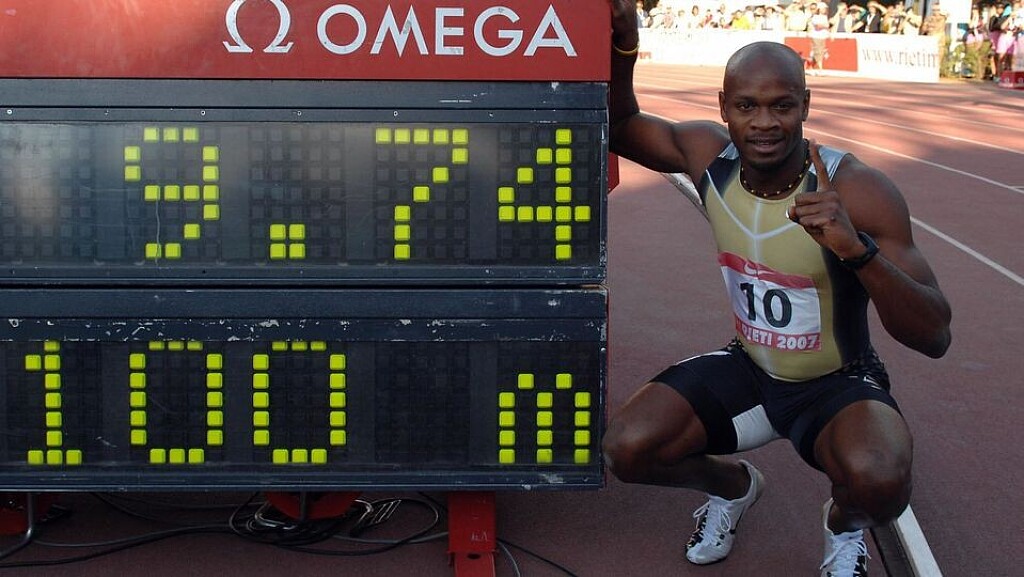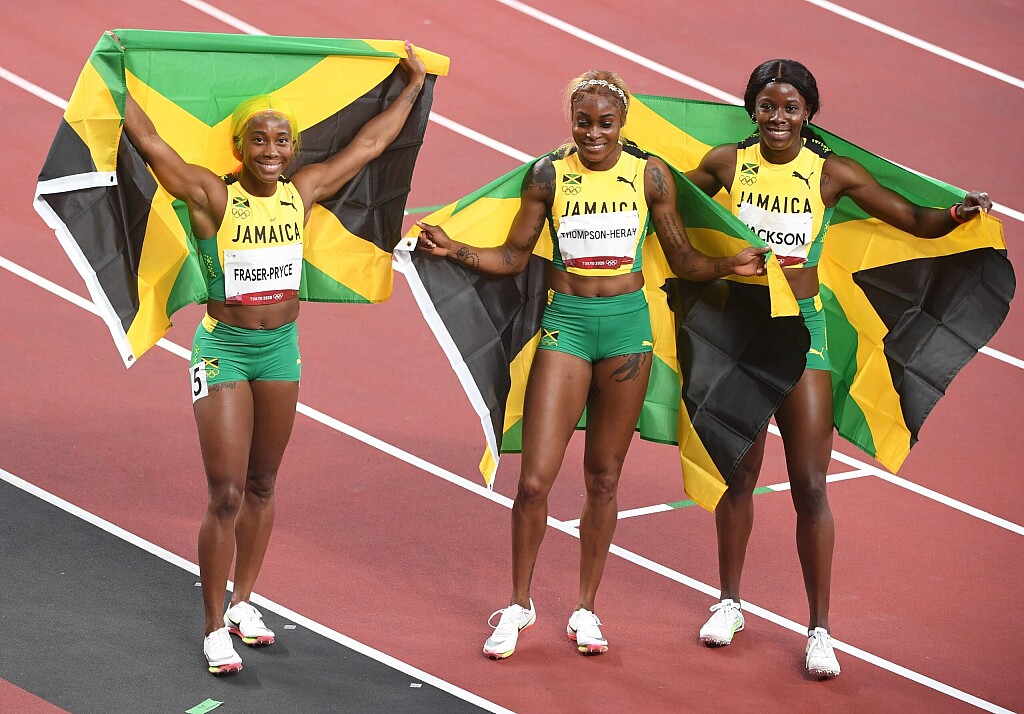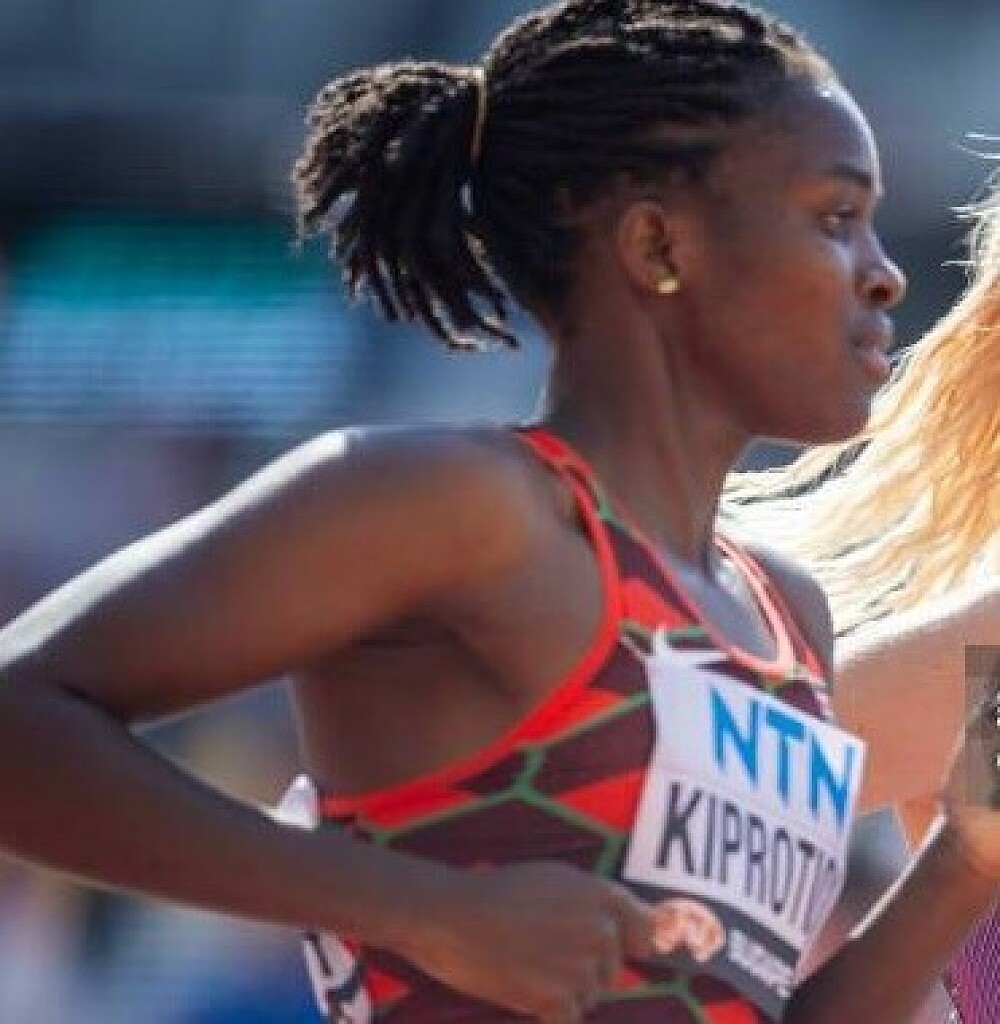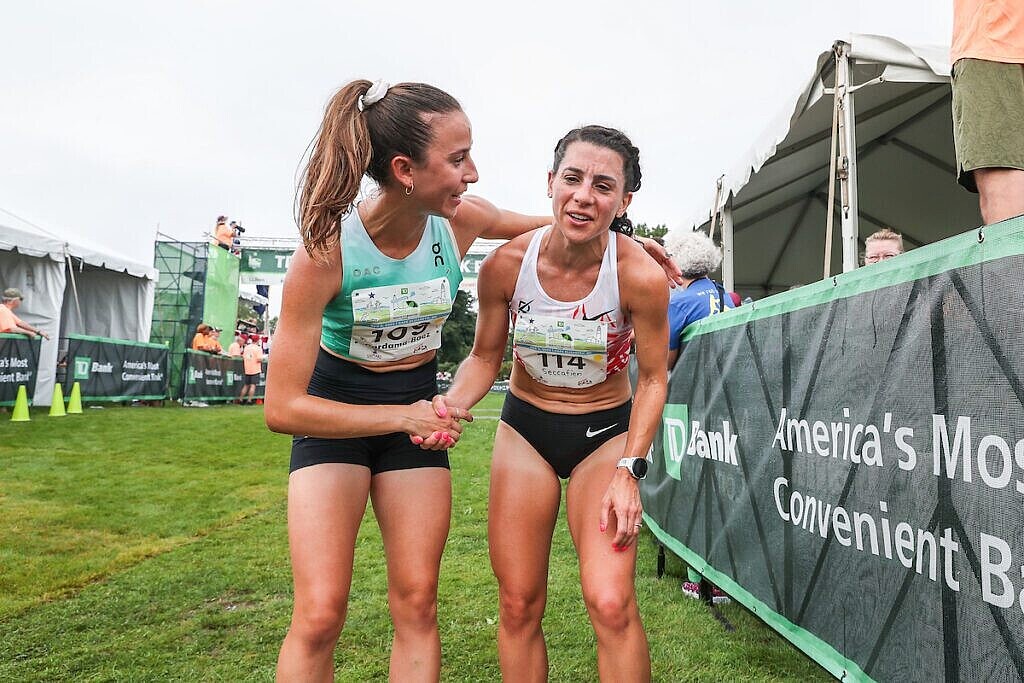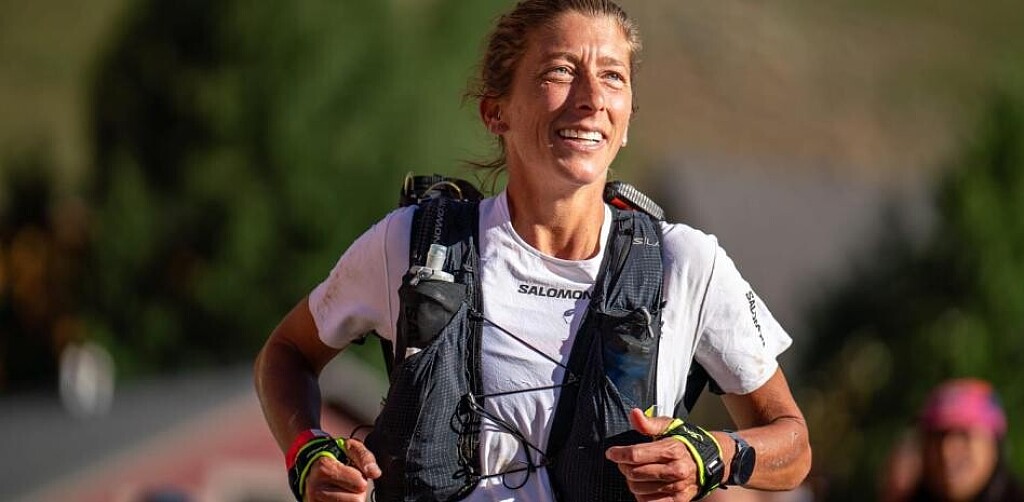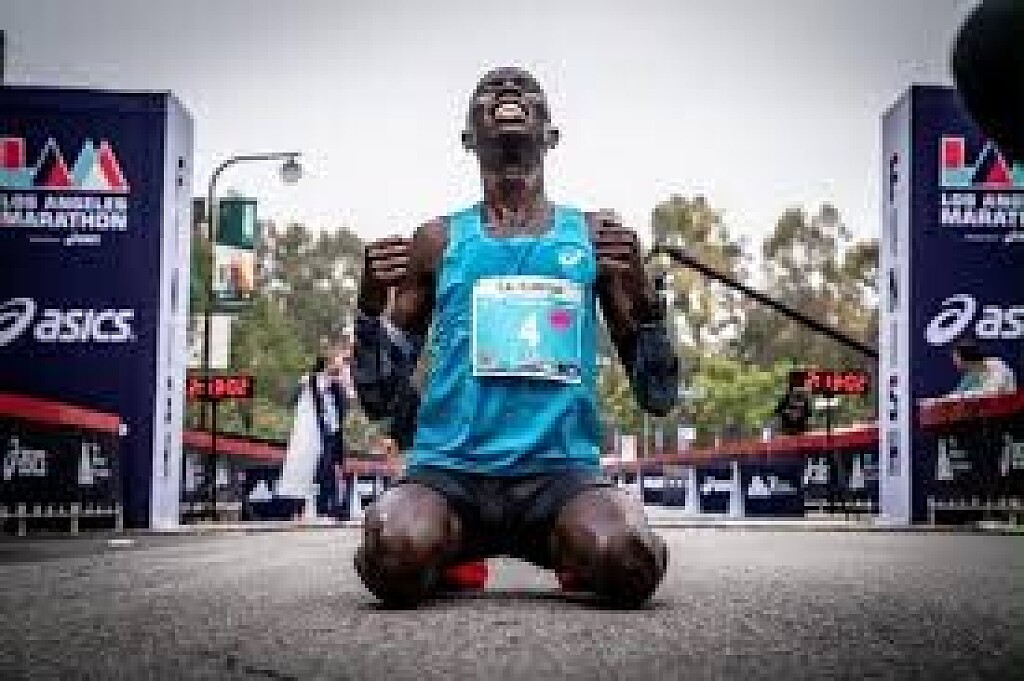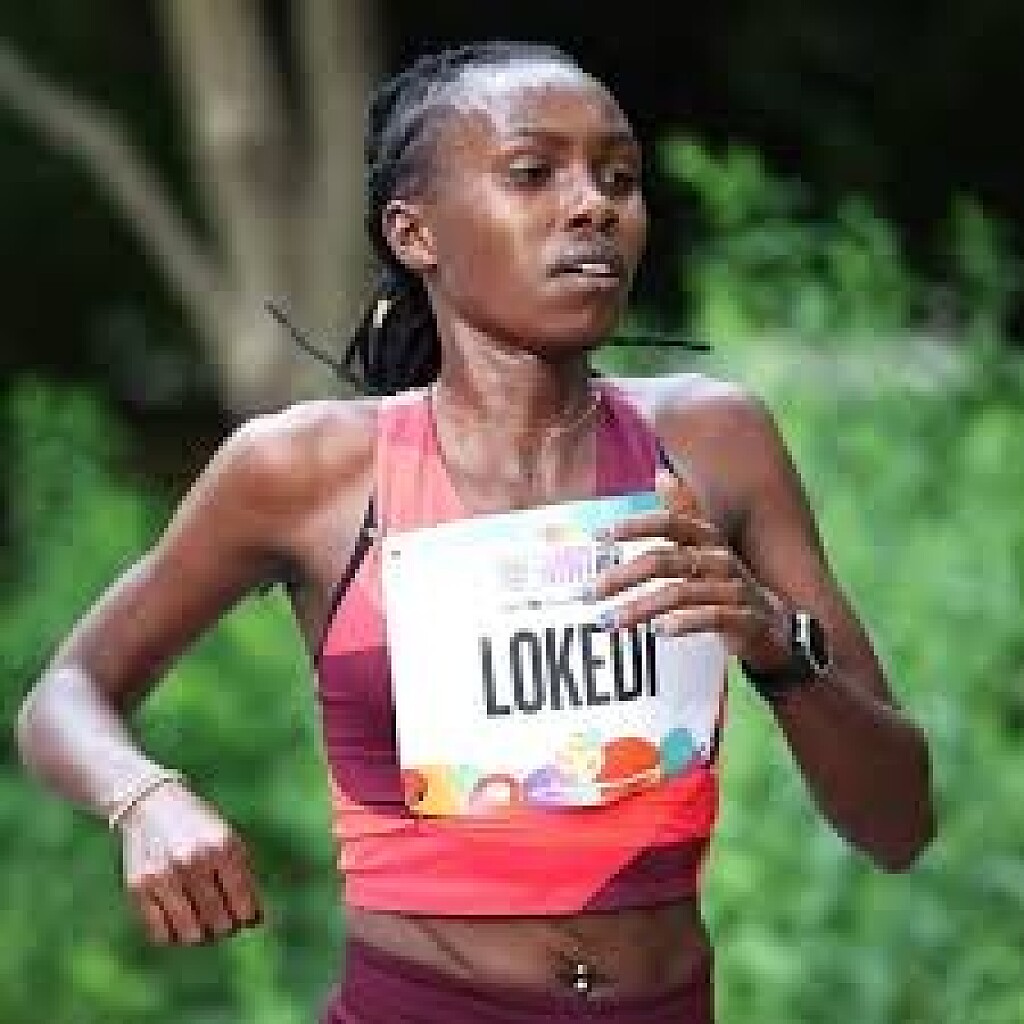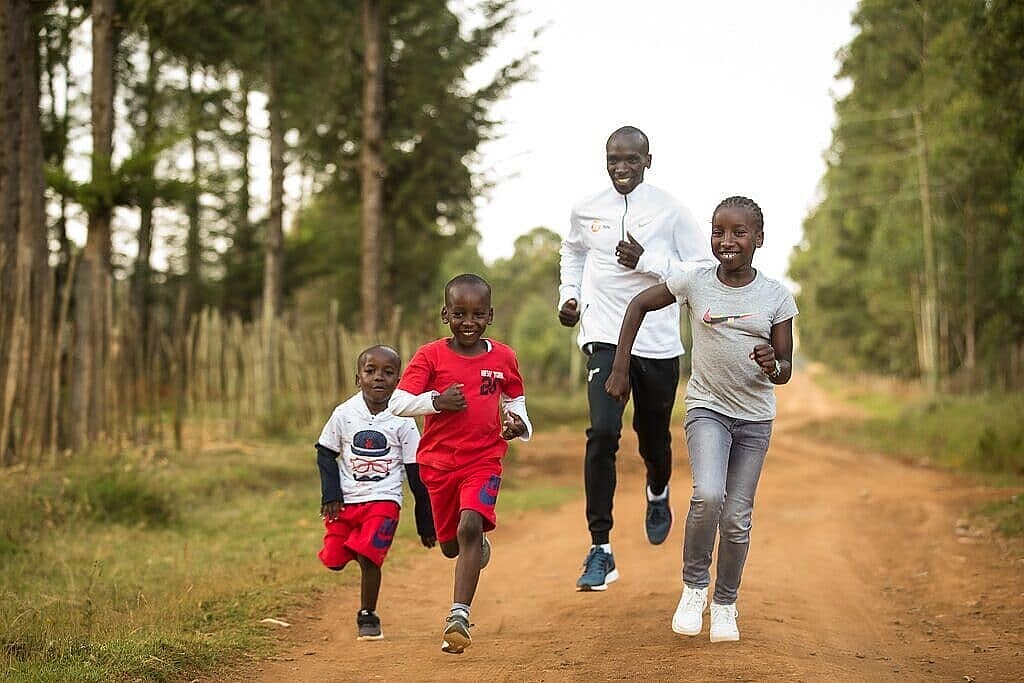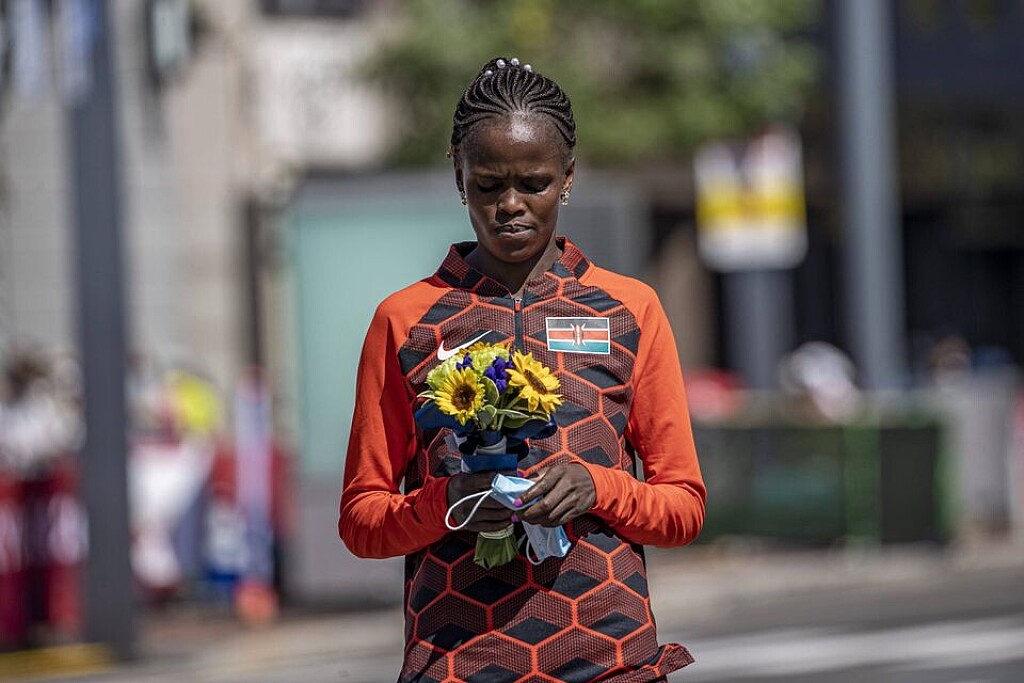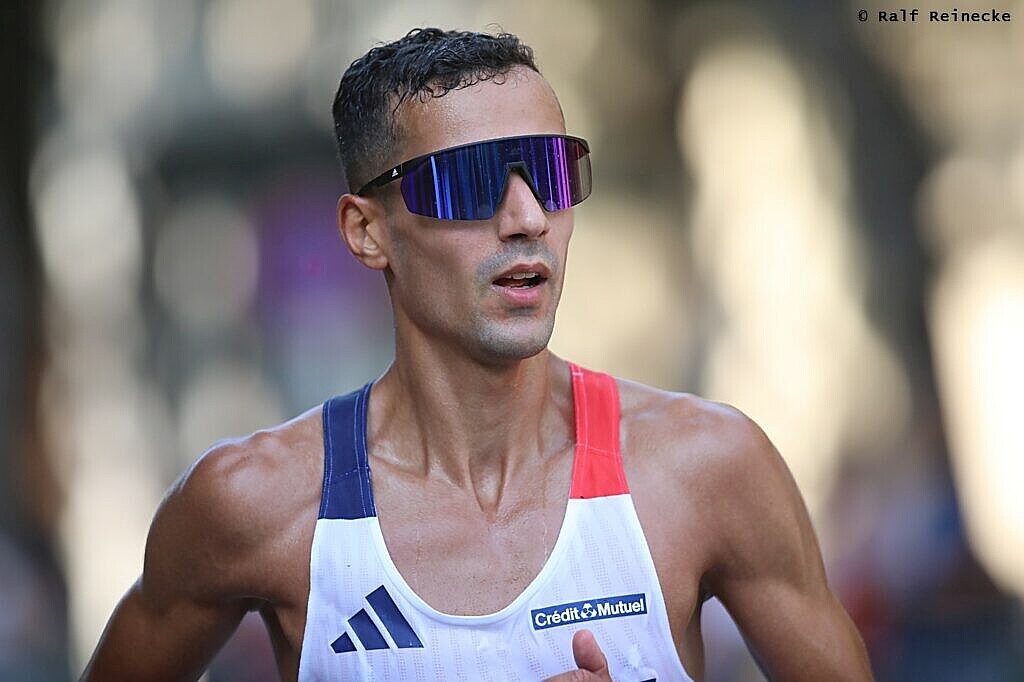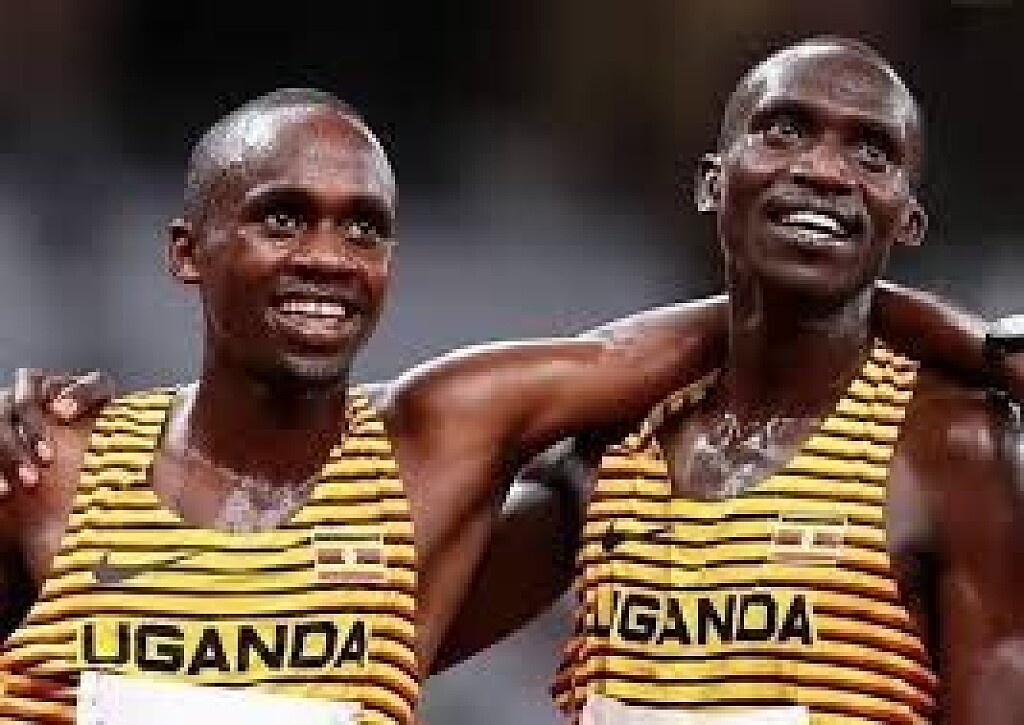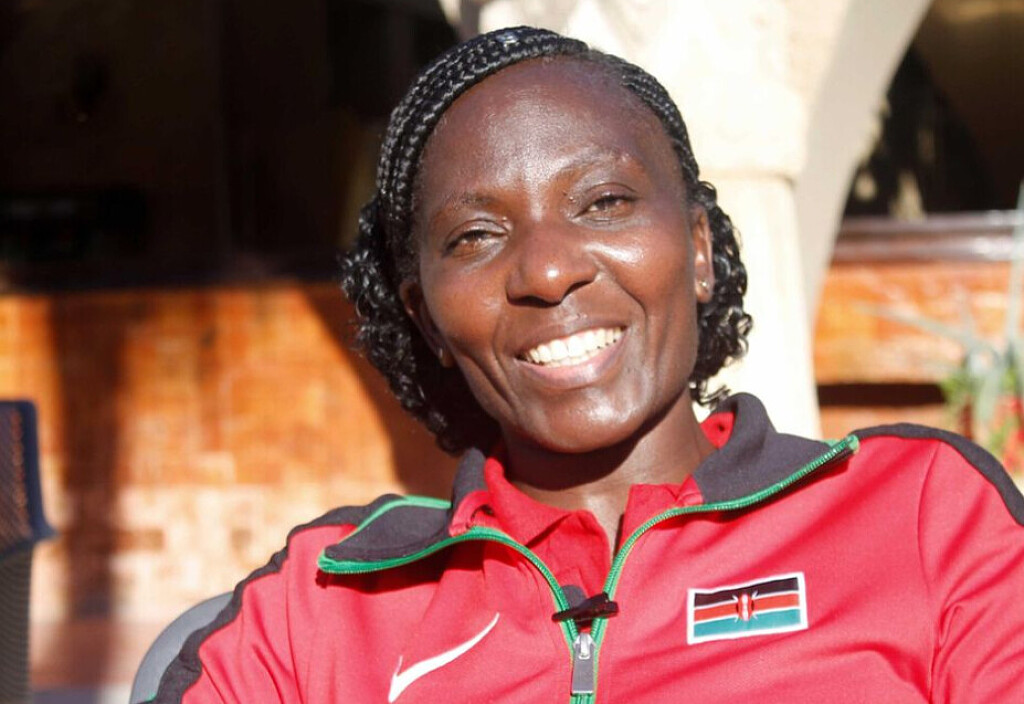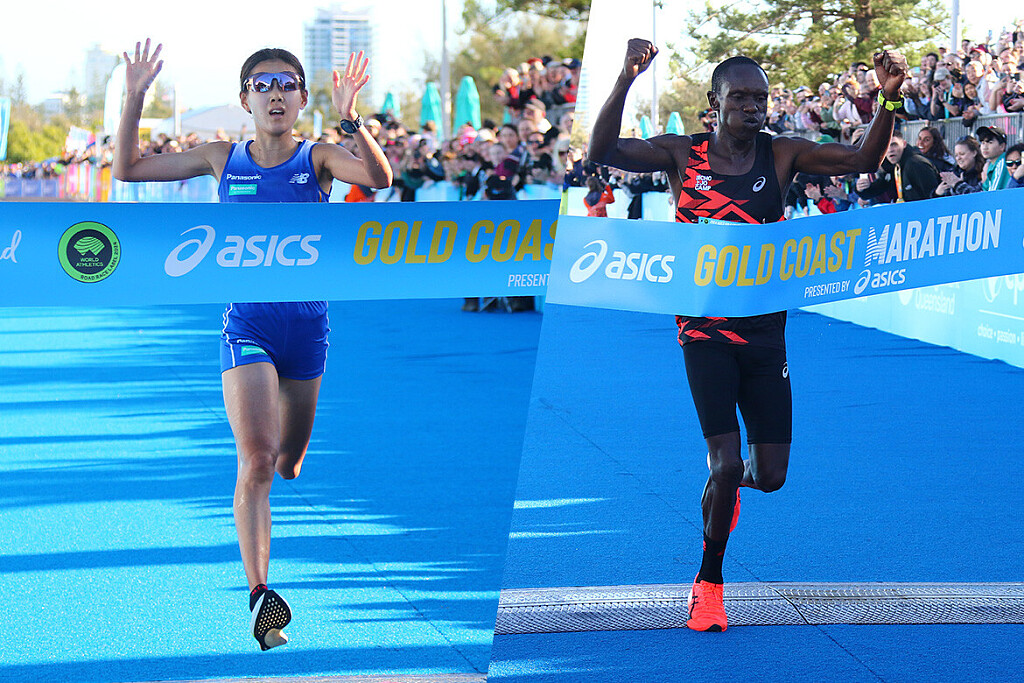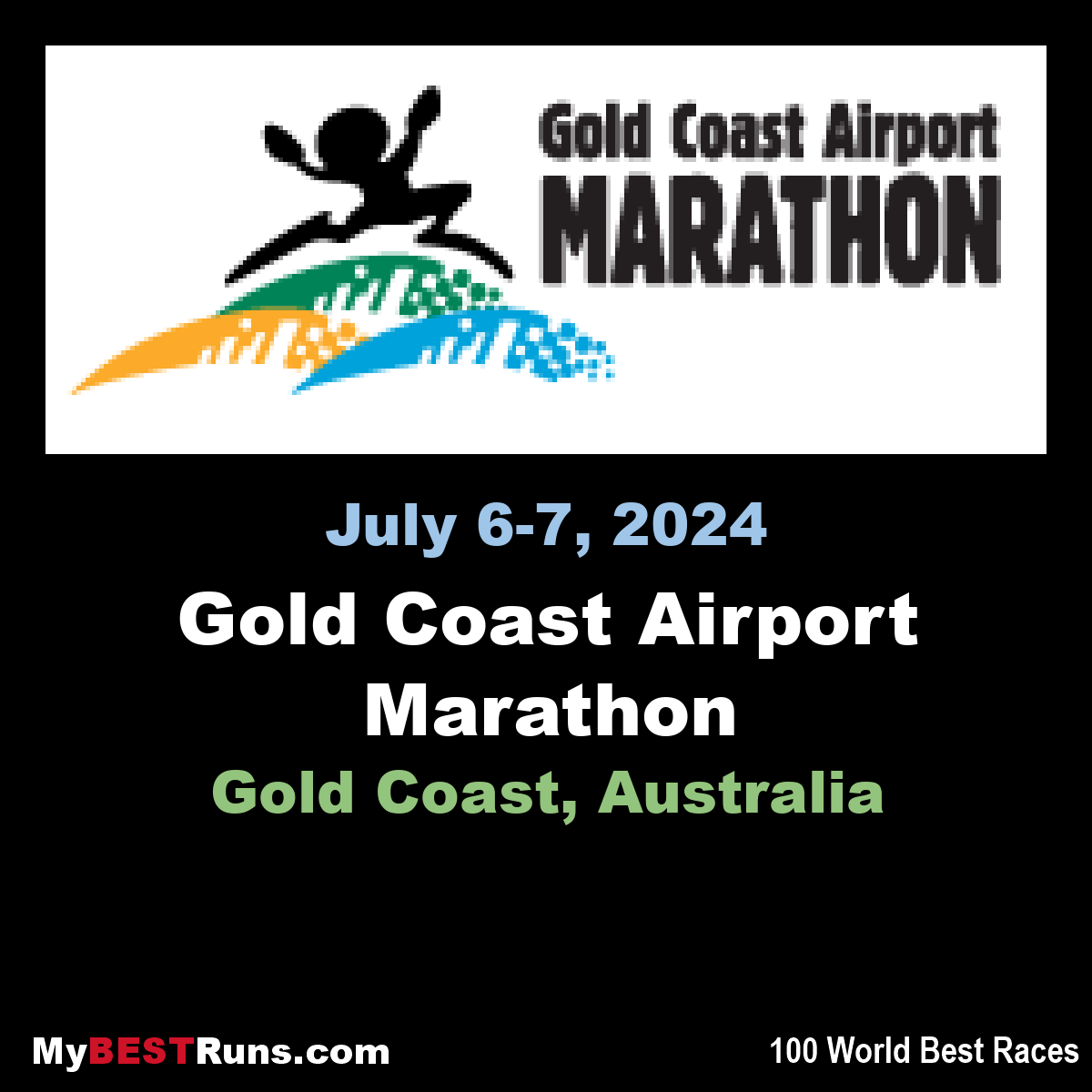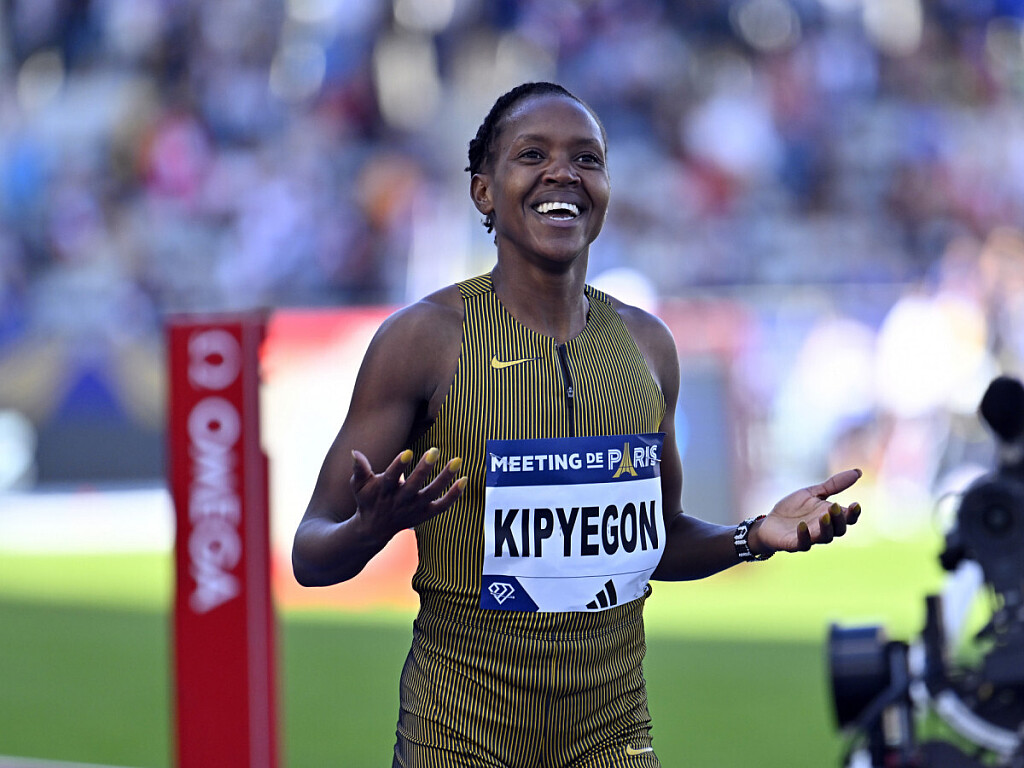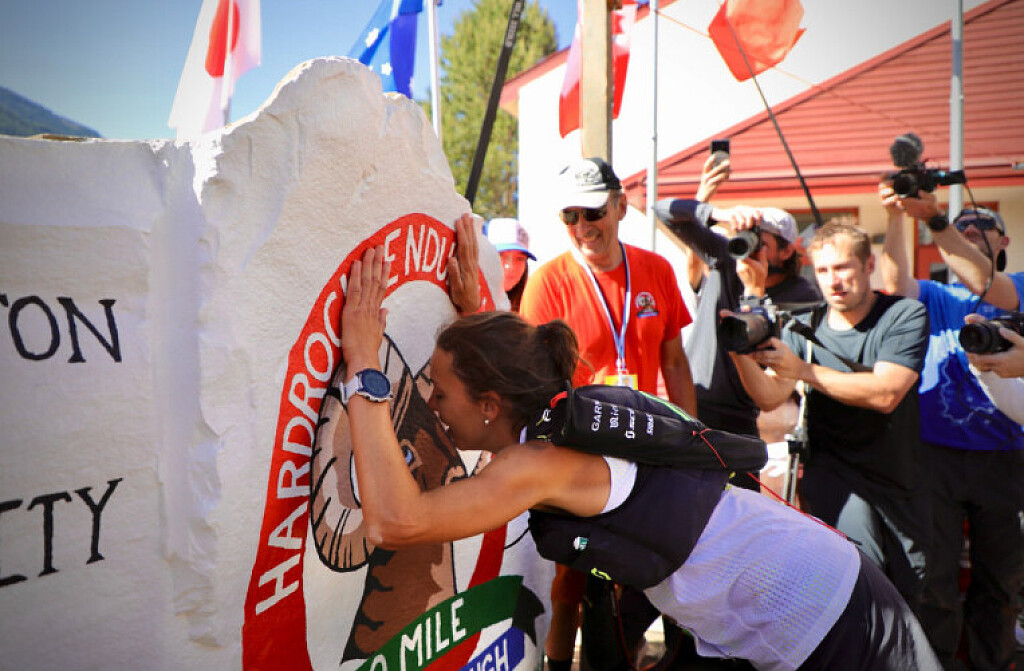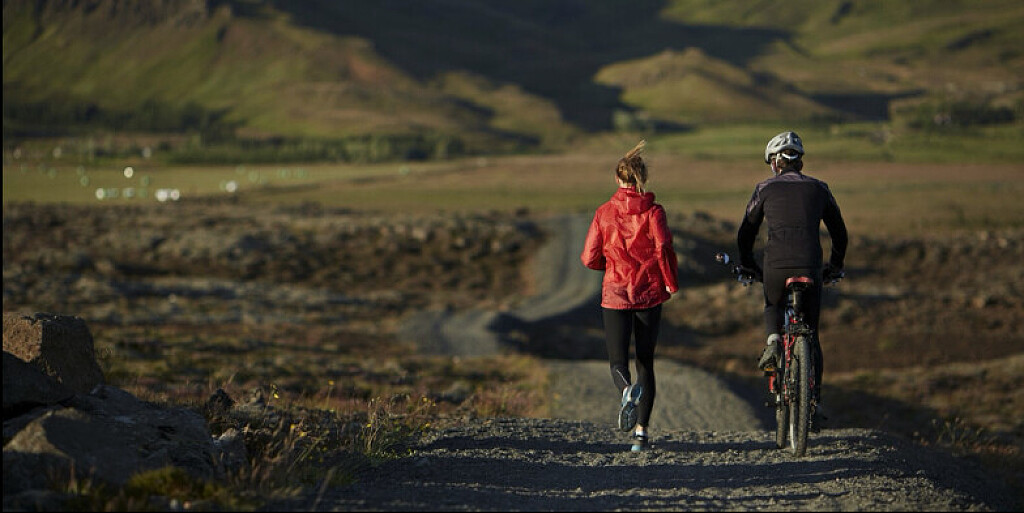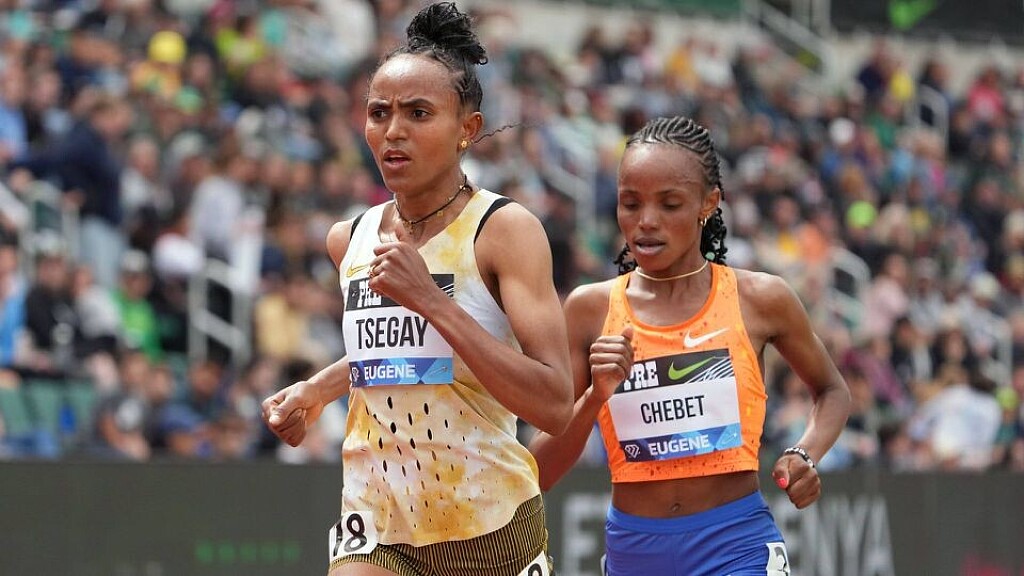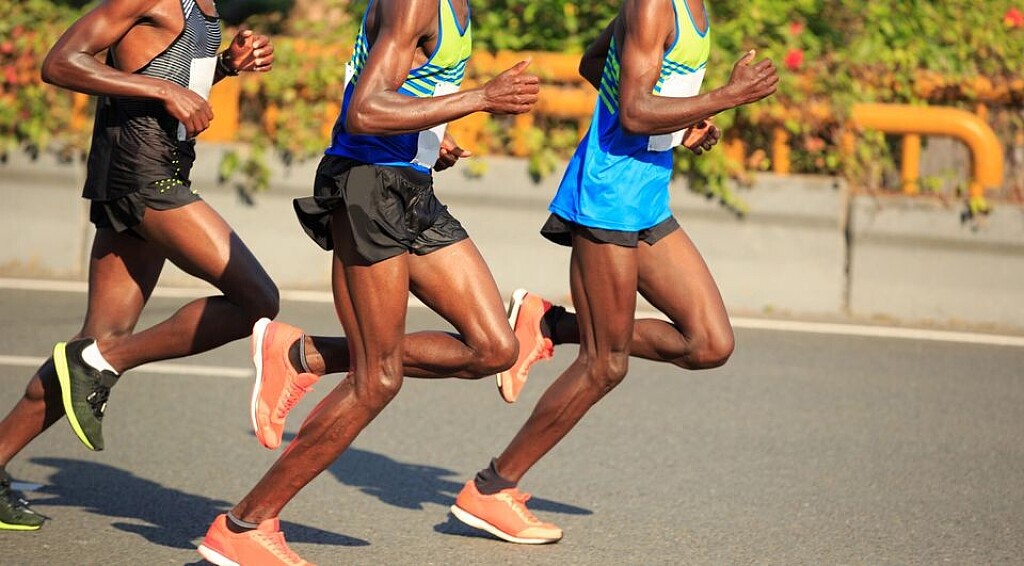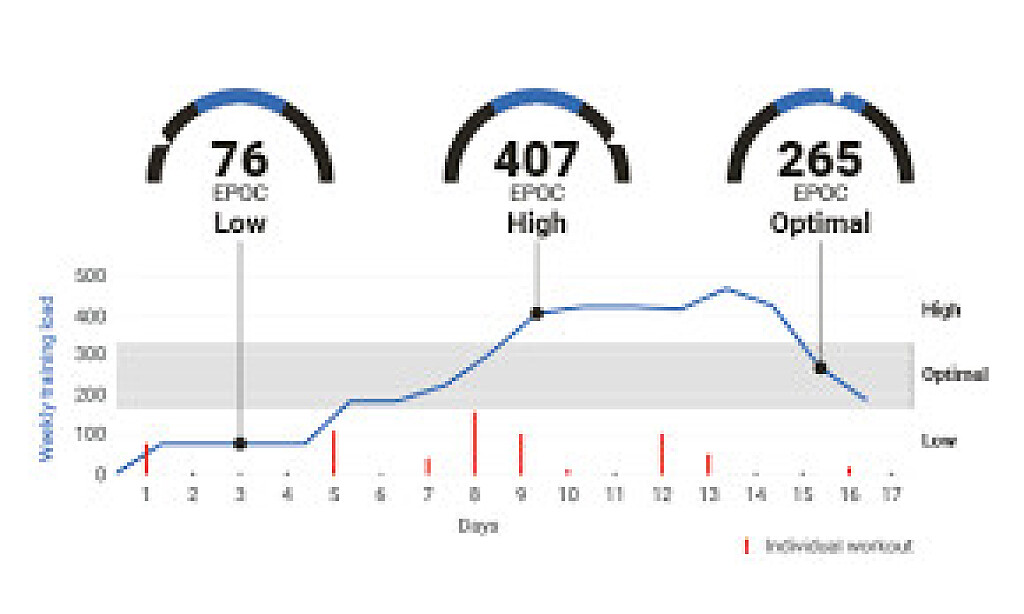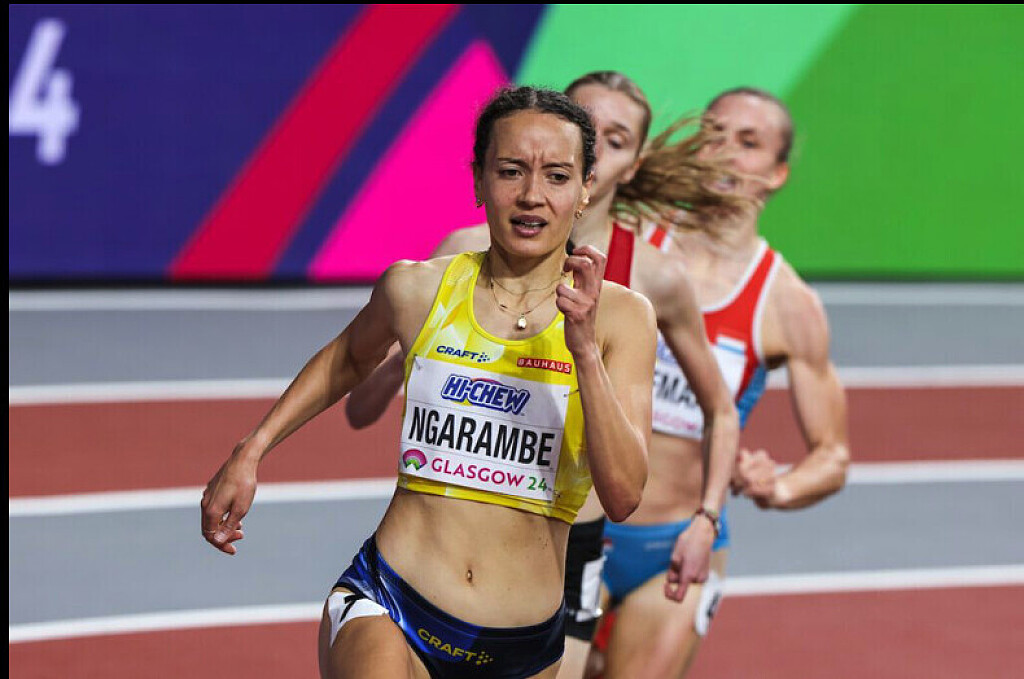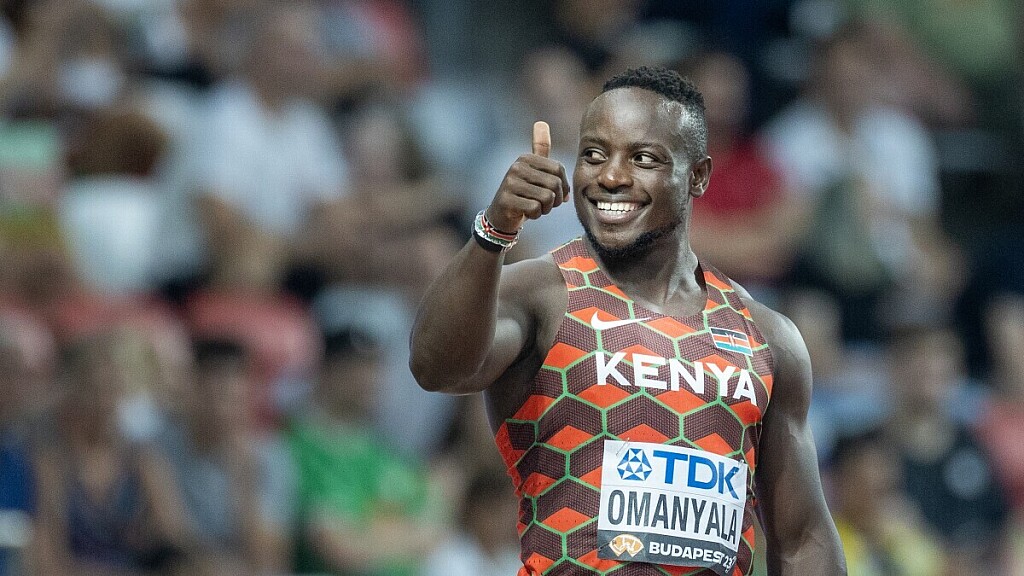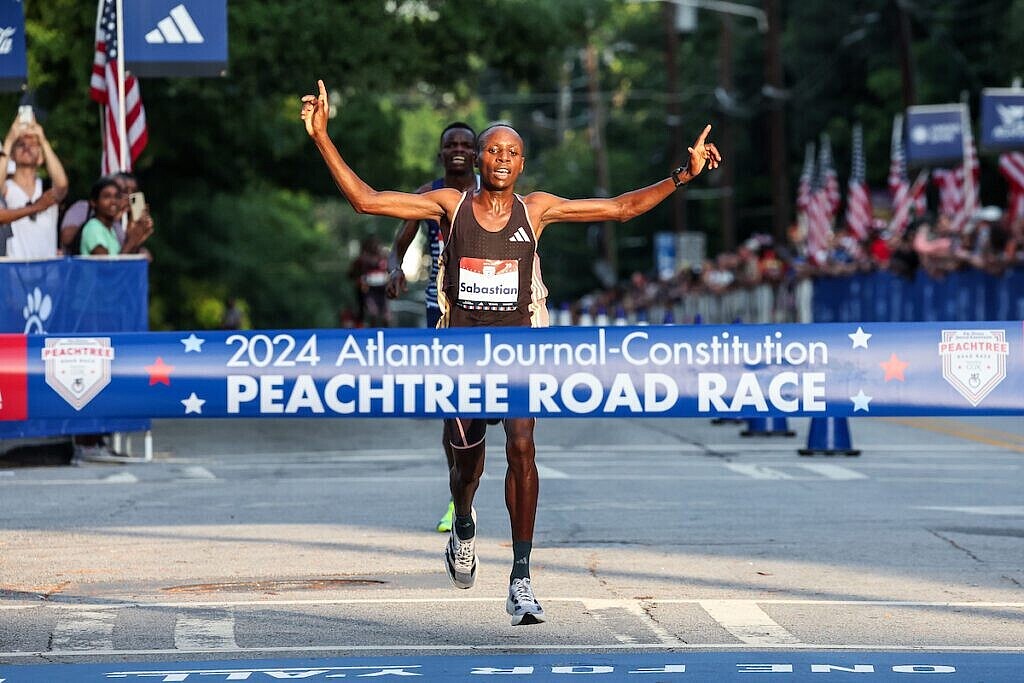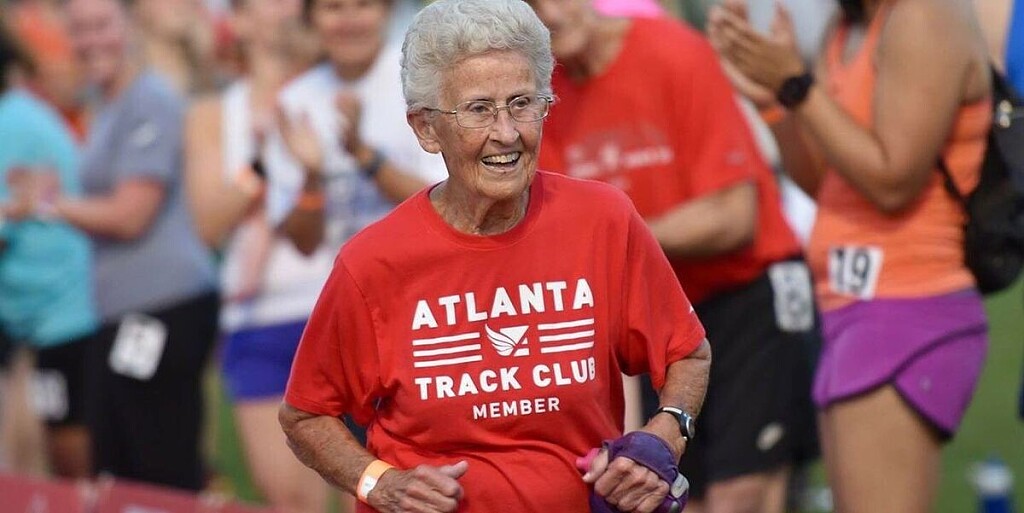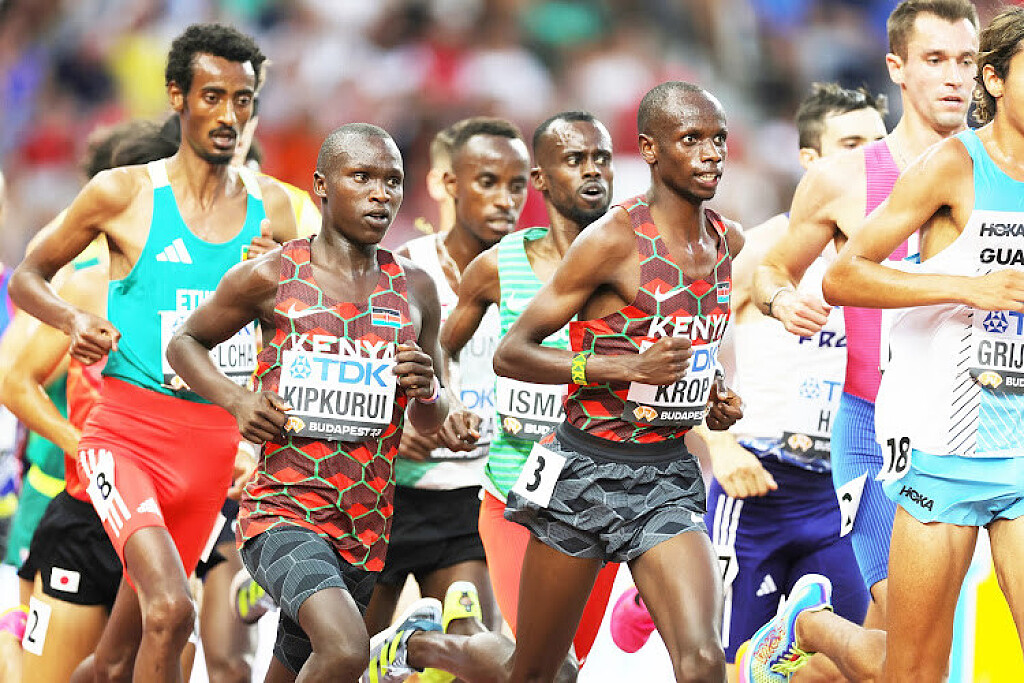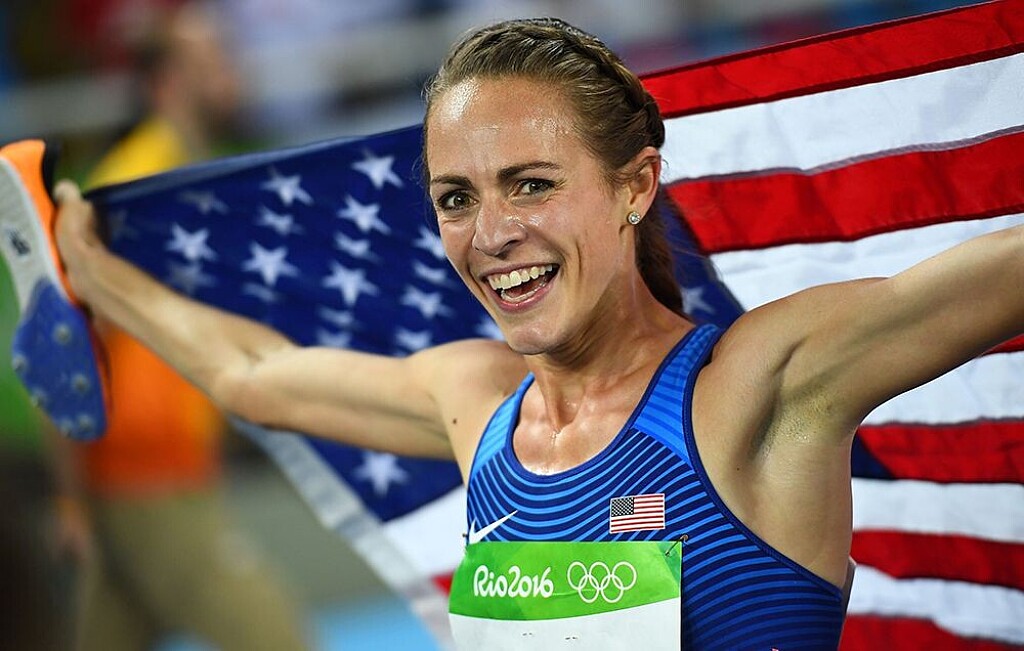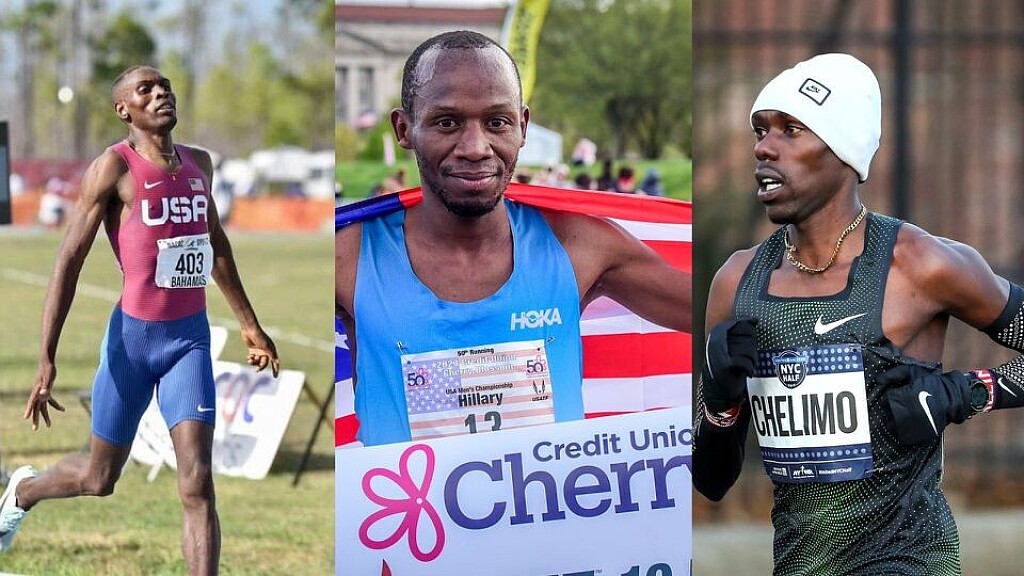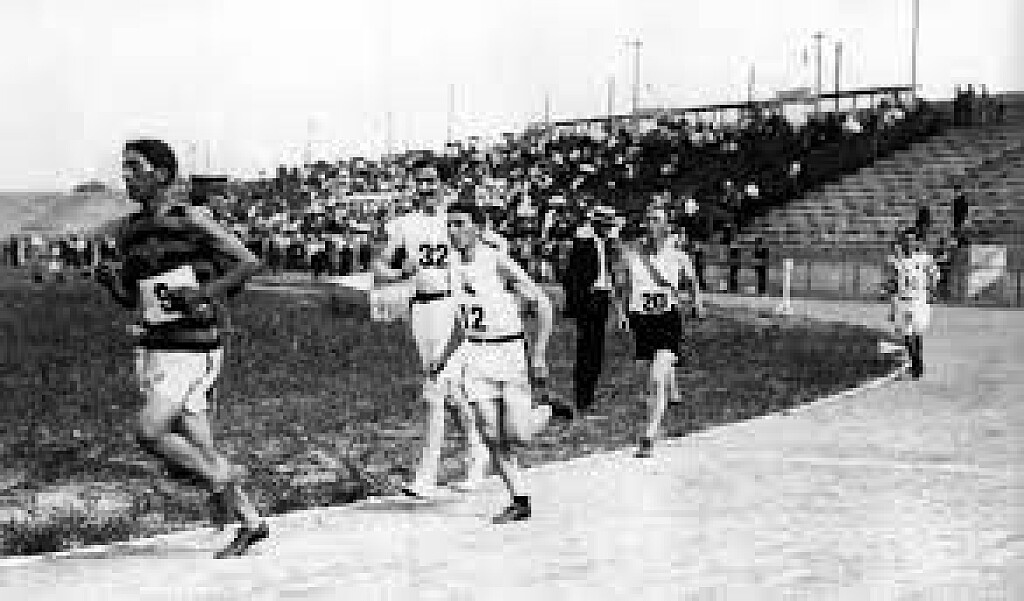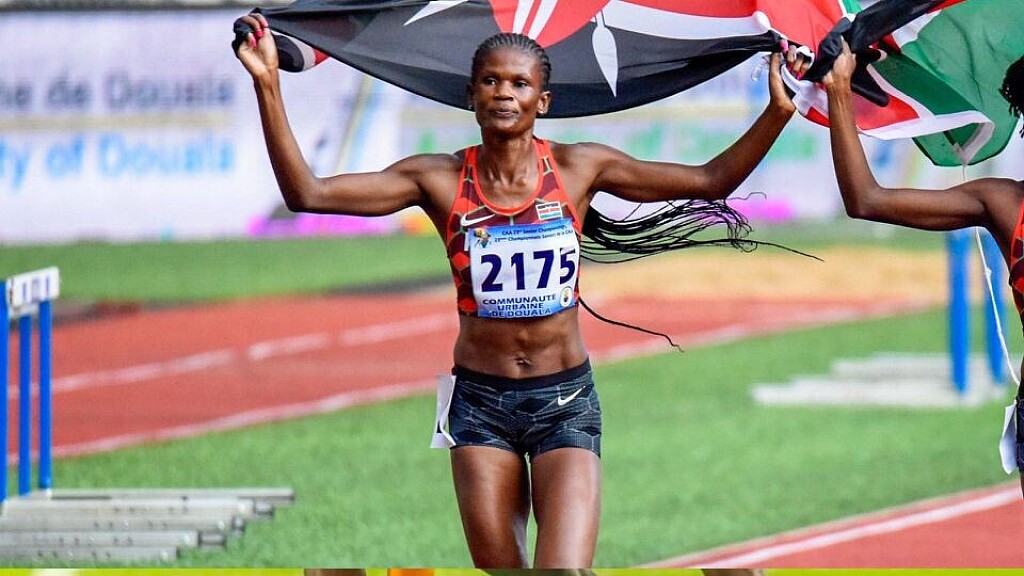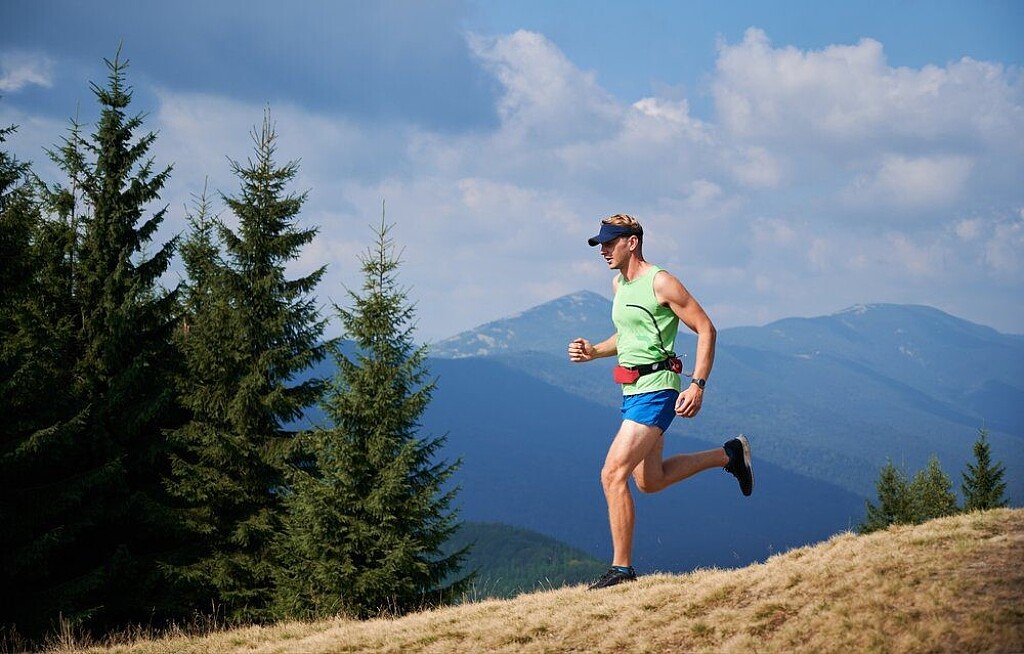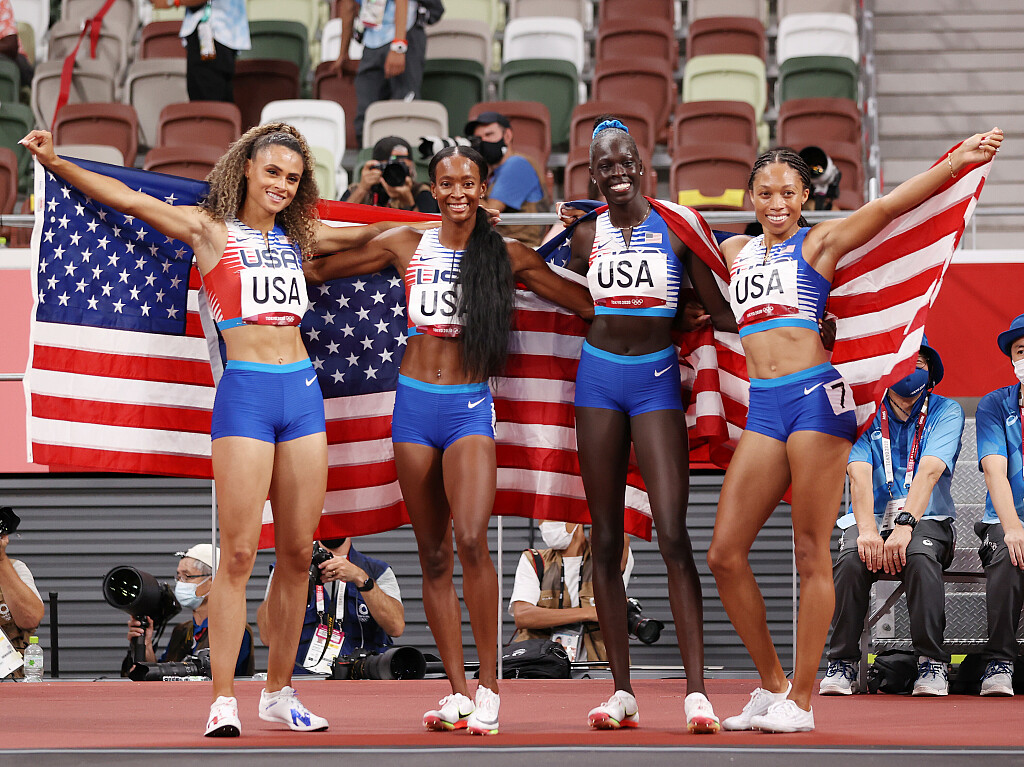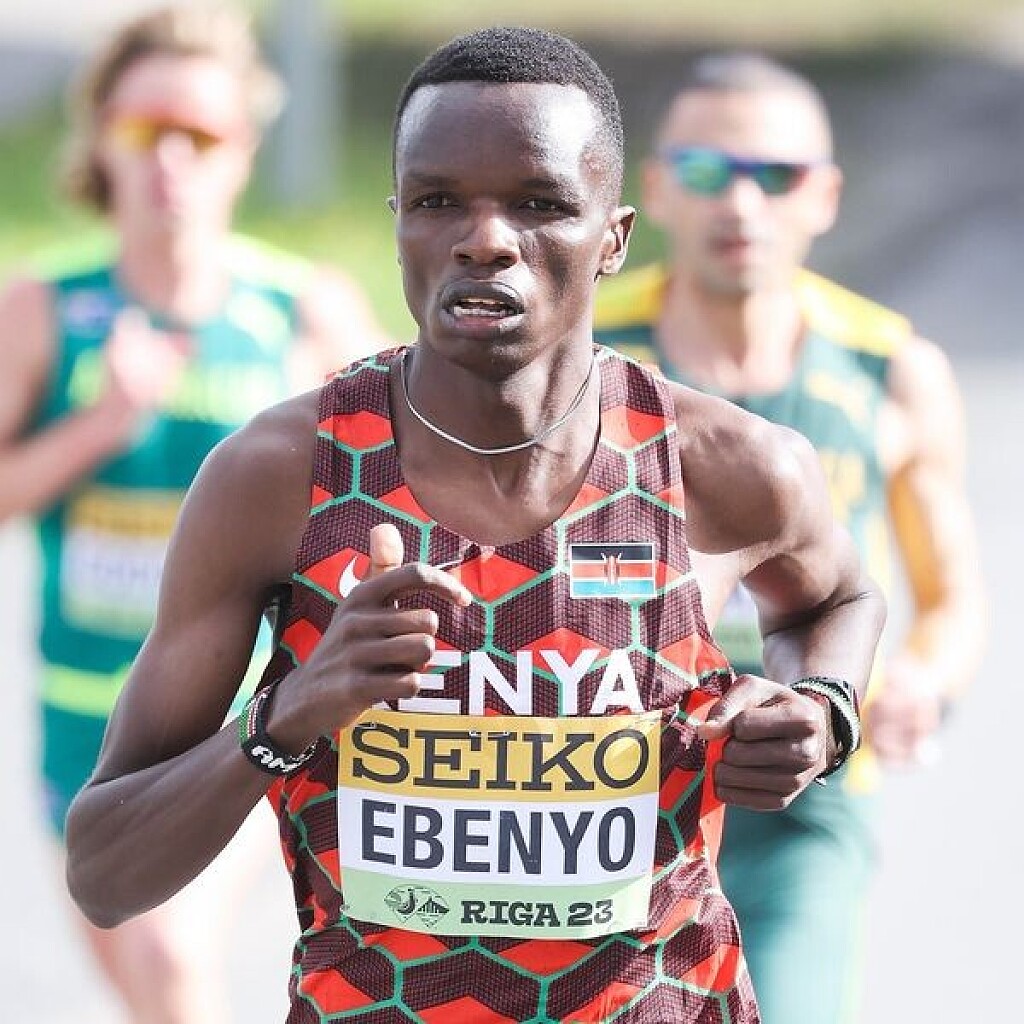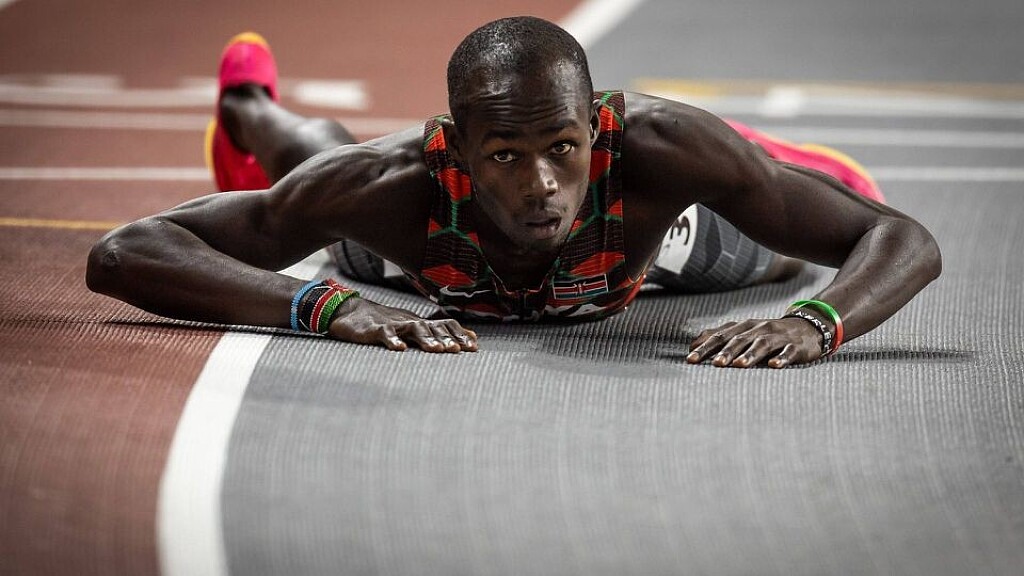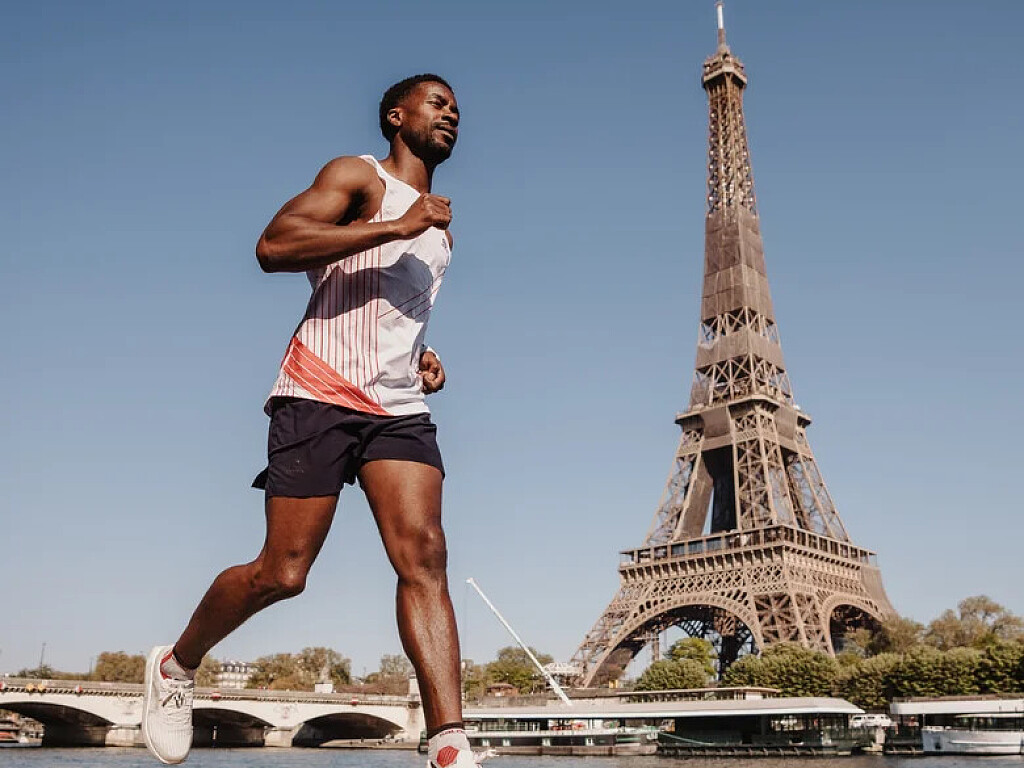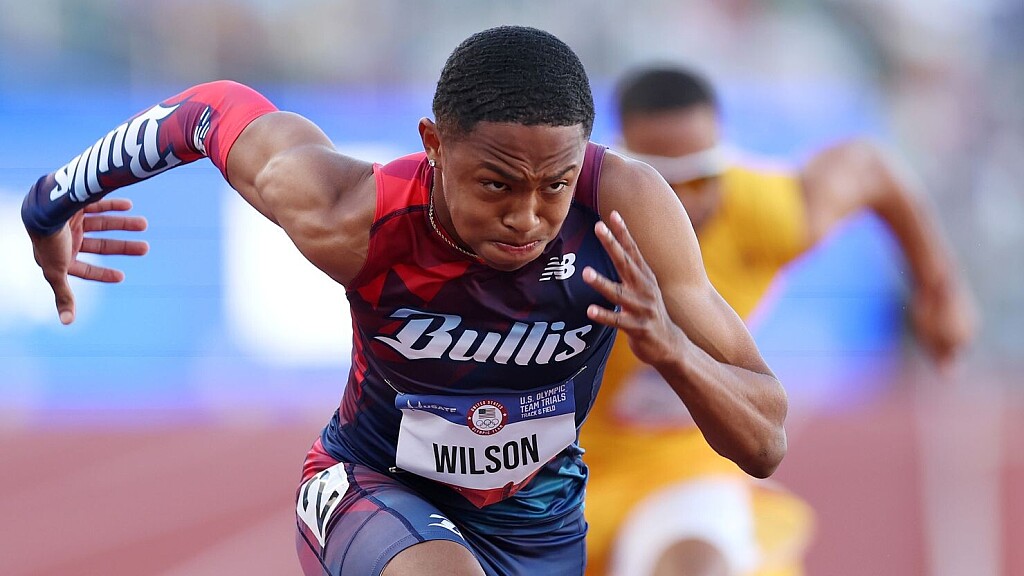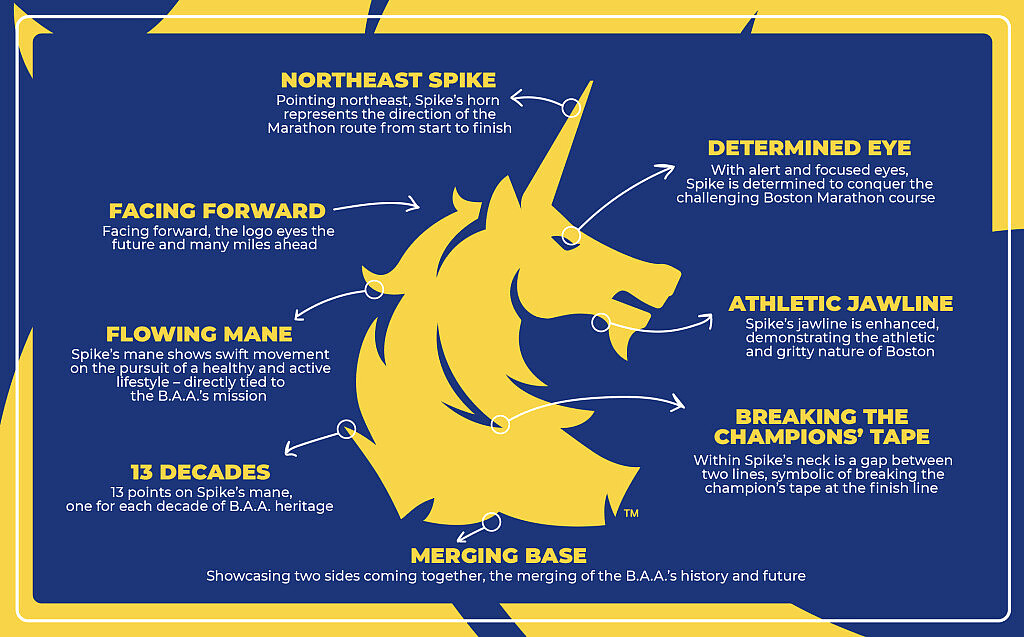Running News Daily
Running News Daily is edited by Bob Anderson. Send your news items to bob@mybestruns.com Advertising opportunities available. Train the Kenyan Way at KATA Kenya and Portugal owned and operated by Bob Anderson. Be sure to catch our movie A Long Run the movie KATA Running Camps and KATA Potato Farms - 31 now open in Kenya! https://kata.ke/
Index to Daily Posts · Sign Up For Updates · Run The World Feed
'That is the only record I regret' - Asafa Powell on the 100m race he set a World Record in accidentally
Powell set a then100m World Record of 9.74 in 2007 despite intentionally slowing down towards the end of the race.
Jamaican sprint legend Asafa Powell, renowned for his blistering speed and dominance in the 100 meters, has recently opened up about a race he believes could have resulted in an even faster time if he had given it his all.
The race in question is the 2007 Rieti meeting in Italy, where Powell set a then-world record of 9.74 seconds. Despite his remarkable achievement, Powell reflects on what might have been had he not intentionally slowed down towards the end.
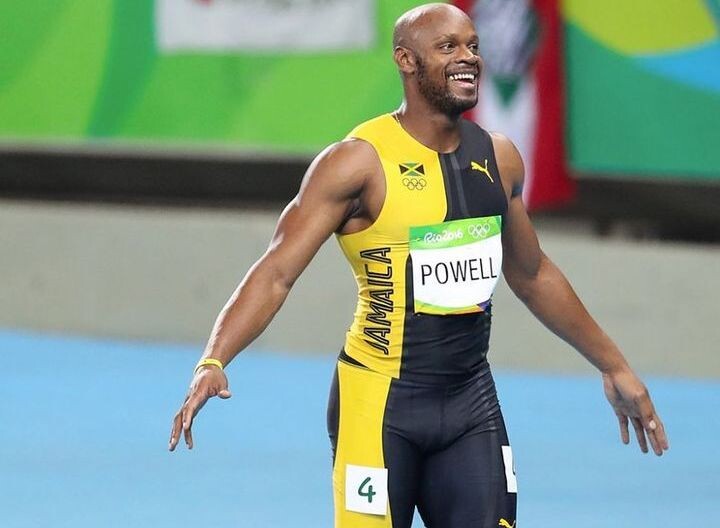
In a recent guest appearance on Justin Gatlin's Ready Set Go podcast, Powell shared his thoughts on the race and the strategy that led to his impressive but bittersweet performance.
The Rieti race took place shortly after the Osaka World Championships in 2007, and to this day, Powell holds the record for the most sub-10 second 100m races in history.
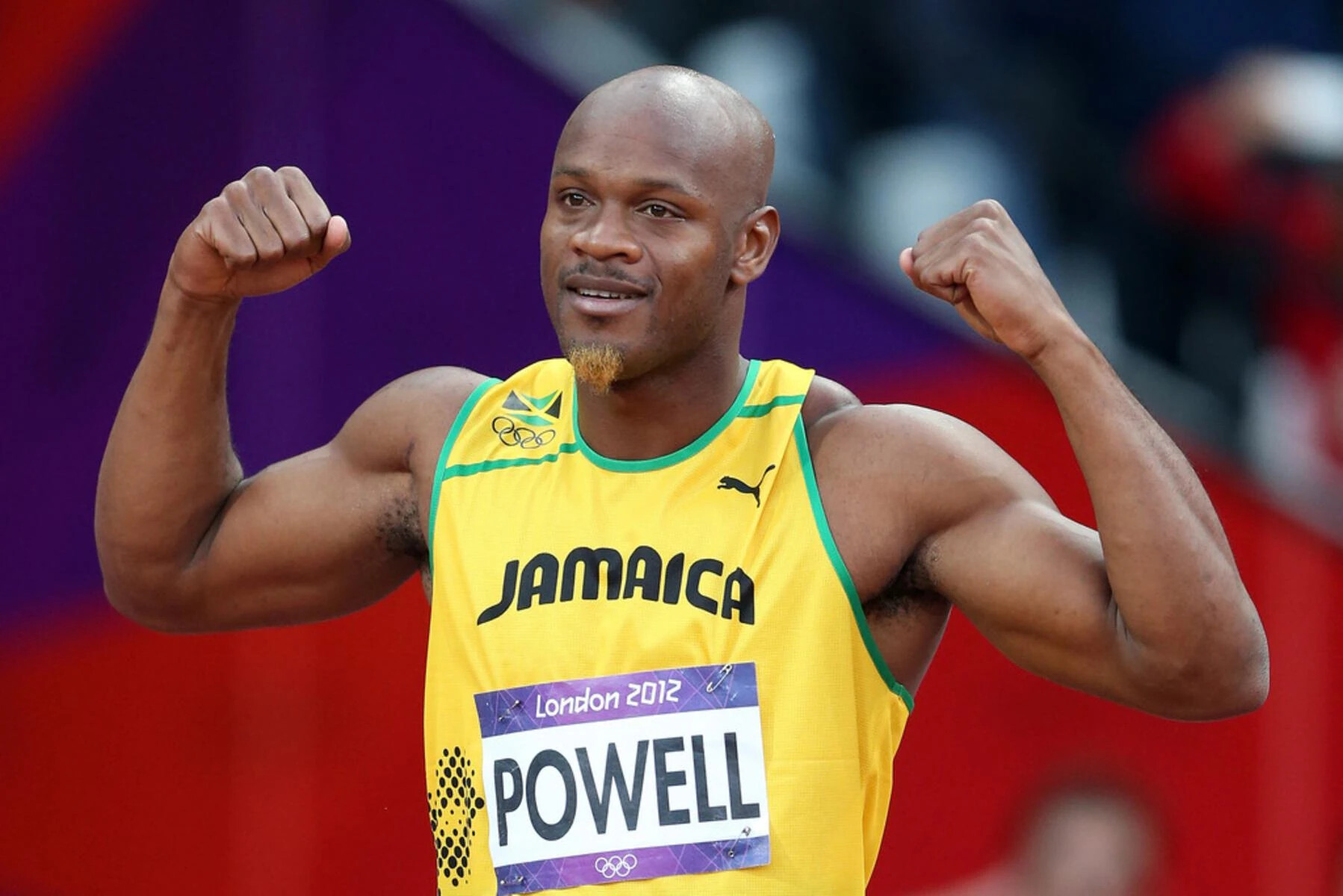
He previously held the world record in the event until fellow Jamaican Usain Bolt shattered it in 2008 with a 9.68-second run at the Beijing Olympics, followed by an astounding 9.58 performance in 2009 in Berlin, Germany.
Reflecting on his performance in Rieti, Powell explained his strategy and the circumstances that led to his record-setting but somewhat unfulfilled run.
"That is the only record I regret," Powell admitted. "This was after the world championships in Japan. We went to Rieti and in the warm-up, the coach was like, ‘make sure you get the 30 meters first.’"
Powell elaborated on the instructions from his coach, which focused on perfecting his drive phase and transition.
"When he makes a command, I am like, ‘I am going to do it,’ so the coach was like, ‘we are working on your drive phase and transition. When you get to 70 meters, just back off the gas,’" he recalled.
True to his coach's directive, Powell executed the plan flawlessly.
"I went out there and did just that, and when I crossed the finish line, I saw 9.74 and I was waiting for the clock to change or something. 9.74? I see everyone celebrating and I am like, I cannot even celebrate. This is just the heat. Am I going to go for the victory lap? I am just getting ready for the final. What am I going to do?" Powell recounted.
"I didn't even know what to do at that time. I see everyone celebrating. My manager was the first to get to the track and I am like, celebration? I need to get back to the warm-up. It was unexpected. I did not feel like I was running a world record at the time. I did not know what to do, but I think I ran that race flawlessly," he said.
Powell's reflection on the race leaves fans and athletes alike wondering what could have been. "I can’t even think about what I would have ran if I had kept on just going to the finish line. I would have ran 9.6 easily," he concluded.
Asafa Powell's legacy in the world of sprinting is undeniable, and his reflections on the Rieti race offer a glimpse into the mind of a true champion who continually strives for perfection.
Despite the "what ifs" that linger, Powell's accomplishments remain a testament to his remarkable talent and dedication to the sport.
(07/12/2024) ⚡AMPby Mark Kinyanjui
Why beginners shouldn’t do running drills
In endurance running, there is less of an emphasis on good biomechanics than there is in sprinting–understandably so, as our races don’t usually come down to the hundredth of a second that separates first and second place. However, good form will only help you run faster while lowering your risk of injury. Drills are basic running exercises that improve speed, agility, balance and coordination; but they may just be overwhelming for beginners.
Even though runners repeat the same forward running movements over and over, it is still important to move through your range of motion in other planes. This will activate different muscles to then support and aid the main muscles and joints that are active while running, giving you an extra boost. As an experienced runner, these are the drills I do in my warmup routine:
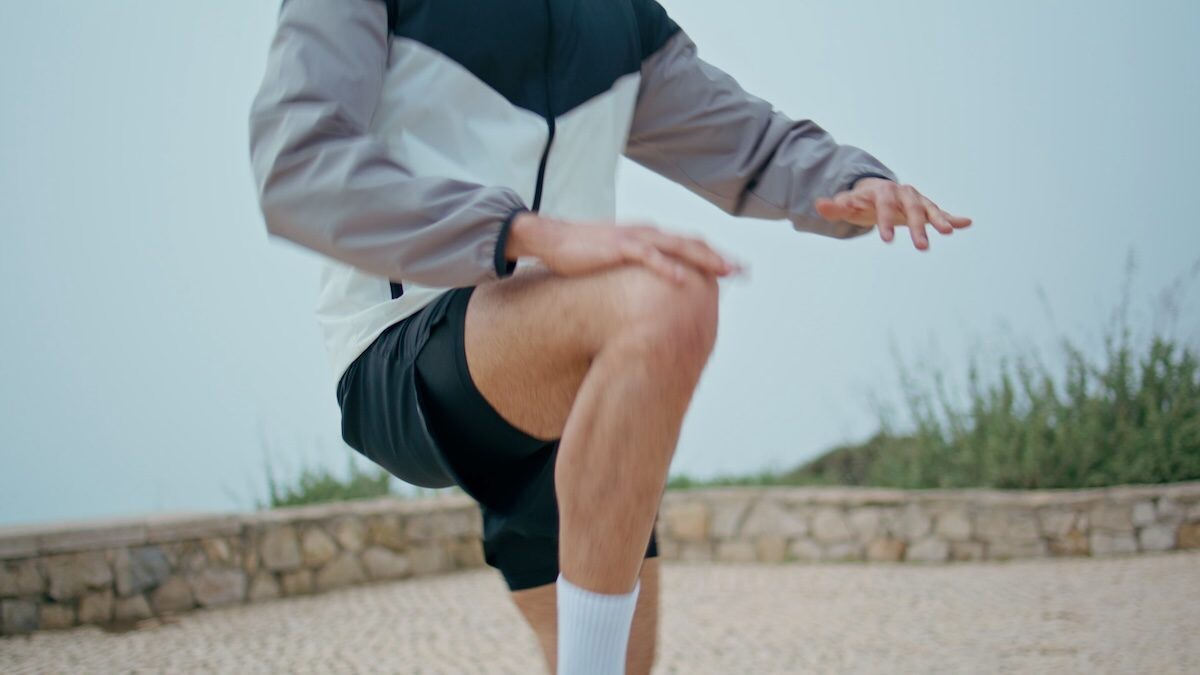
Heel walks and toe walks
Scoops
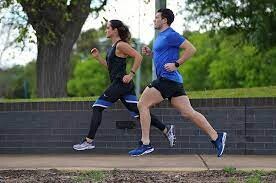
High kicks
Forward skipping with arm circles
Side skips
Carioca (grapevine)
A-skips
B-skips
Dribbling
High knees
One-foot hops
Two-foot hops
Skater jumps
If these sound like complete gibberish, that’s expected–I didn’t know what they were when I first started out, either.
As a beginner, your main focuses should be showing up and being smart as you introduce running into your fitness regime. If you are just trying to build fitness and endurance, first get the habit of running to really stick before trying out these drills.
You don’t want to add too much to your plate by adding technical exercises that will add more time to your workout and tire you out more quickly. Progressing your runs slowly and focusing on recovery until you build mileage and speed will be the key first steps when starting out.
Eventually, you will find yourself shifting your goals to running faster than you did in your last race–and that is when improving your form and adding an extra bounce to your step will make a significant difference in your results. When you no longer classify yourself as a “beginner,” introducing drills as the next step won’t feel as overwhelming. Keep in mind that these ABCs may be more difficult to learn than the ones you are already familiar with. Being patient, moving slowly and focusing on having good technique, above all, will help you become a stronger and faster runner.
(07/12/2024) ⚡AMPby Cameron Ormond
Jamaica names team for Paris Olympic Games
Shelly-Ann Fraser-Pryce, Shericka Jackson and Hansle Parchment are among the global champions who feature on Jamaica’s team for the Paris 2024 Olympic Games.
Fraser-Pryce claimed 100m titles at both the 2008 and 2012 Games and secured 100m silver in Tokyo. Jackson, a two-time world 200m champion, claimed 100m bronze behind Fraser-Pryce in Tokyo and in Paris she is entered for both the 100m and 200m.
Parchment will defend his 110m hurdles title, while Kishane Thompson, who won the national 100m title in 9.77, will contest that sprint event.
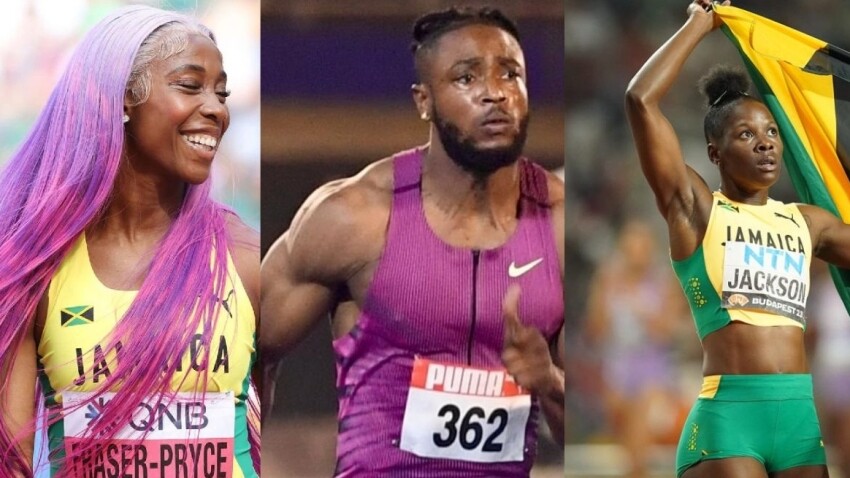
World U20 champion Jaydon Hibbert is entered for the triple jump and Danniel Thomas-Dodd, the 2019 world silver medallist, is confirmed for the shot put.
Jamaican team for Paris
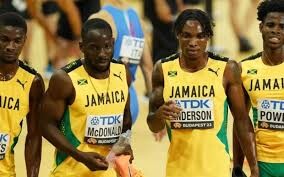
WOMEN
100m: Tia Clayton, Shelly-Ann Fraser-Pryce, Shericka Jackson
200m: Niesha Burgher, Shericka Jackson, Lanae-Tava Thomas
400m: Junelle Bromfield, Nickisha Pryce, Stacey Ann Williams
800m: Natoya Goule-Toppin, Adelle Tracey
1500m: Adelle Tracey
100m hurdles: Janeek Brown, Ackera Nugent, Danielle Williams
400m hurdles: Rushell Clayton, Janieve Russell, Shiann Salmon
High jump: Lamara DistinLong jump: Chanice Porter, Ackelia Smith
Triple jump: Shanieka Ricketts, Ackelia Smith, Kimberly Williams
Shot put: Lloydricka Cameron, Danniel Thomas-Dodd
Discus: Samantha HallHammer: Nayoka Clunis
4x100m: Tia Clayton, Shashalee Forbes, Shelly-Ann Fraser-Pryce, Shericka Jackson
4x400m: Junelle Bromfield, Stephenie Ann McPherson, Nickisha Pryce, Stacey Ann Williams
MEN
100m: Ackeem Blake, Oblique Seville, Kishane Thompson
200m: Andrew Hudson, Bryan Levell
400m: Sean Bailey, Jevaughn Powell, Deandre Watkin
800m: Navasky Anderson
110m hurdles: Orlando Bennett, Rasheed Broadbell, Hansle Parchment
400m hurdles: Roshawn Clarke, Jaheel Hyde, Malik James-King
High jump: Romaine Beckford
Long jump: Tajay Gayle, Carey McLeod, Wayne Pinnock
Triple jump: Jaydon Hibbert, Jordan Scott
Shot put: Rajindra Campbell
Discus: Ralford Mullings, Traves Smikle, Roje Stona
4x100m: Ackeem Blake, Jehlani Gordon, Oblique Seville, Kishane Thompson
MIXED
4x400m: Zandrian Barnes, Raheem Hayles, Andrenette Knight, Ashley Williams
(07/12/2024) ⚡AMPby World Athletics
Paris 2024 Olympic Games
For this historic event, the City of Light is thinking big! Visitors will be able to watch events at top sporting venues in Paris and the Paris region, as well as at emblematic monuments in the capital visited by several millions of tourists each year. The promise of exceptional moments to experience in an exceptional setting! A great way to...
more...Vivian Chebet's story of luck from finishing fifth at Olympic trials to receiving late call up to women's 800m team
Vivian Chebet had already lost hope of making the Olympic team after finishing fifth at the Kenyan Olympic trials but luck knocked on her door and she will be flying Kenya's flag high in the women's 800m following new developments.
Vivian Chebet, the latest addition in the women’s 800m team to the Paris 2024 Olympics had already given up on her dream of making it to the global stage this season.
At the Kenyan Olympic trials, Chebet finished fifth and she knew there was no chance for her to compete at the Olympic Games in Paris, France.
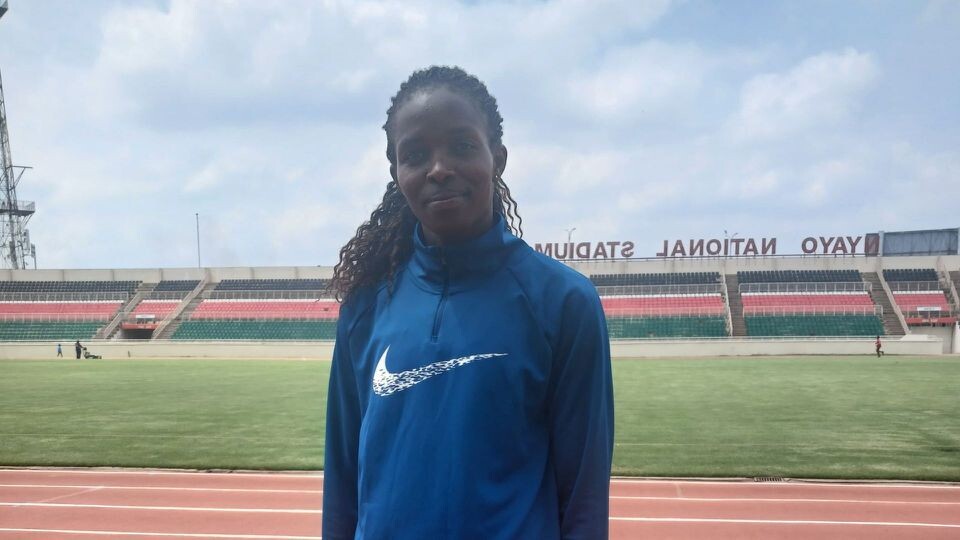
However, Mary Moraa’s sister cousin, Sarah Moraa, who finished third, failed to attain the qualifying time before the deadline and was forced to pull out of the Games.
That is when Chebet, who never thought luck would visit her, received a call inquiring whether she would want to join Moraa and Lilian Odira to the Olympic Games.
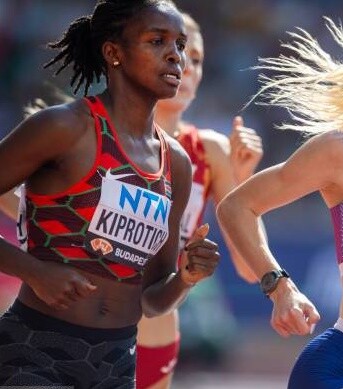
She noted that the news came as a surprise to her, however, she had prepared well and was ready for the huge task that awaited her.
“It was surprise somehow because I was well-prepared to join the team and when we held the trials and I was number five, I knew that I had missed the golden opportunity,” she told the media on Thursday, July 11.
“After sometime, I was called and asked if I could join Odira and Mary and that’s when I was surprised because I had already surrendered,” she added.
Chebet had qualified for the Olympics via world rankings and this season, she had claimed a bronze medal in the women’s 800m at the African Games.
She added that training alongside Moraa, the reigning world champion, is a morale booster since she is able to learn a lot from her.
“Being with Moraa is a morale booster because at least we are able to rectify each other’s mistakes because no one is perfect. If I don’t run well, she comes and tells me and I also try and be of help to her. Training as a team is something very helpful,” she added.
(07/12/2024) ⚡AMPby Abigael Wafula
Paris 2024 Olympic Games
For this historic event, the City of Light is thinking big! Visitors will be able to watch events at top sporting venues in Paris and the Paris region, as well as at emblematic monuments in the capital visited by several millions of tourists each year. The promise of exceptional moments to experience in an exceptional setting! A great way to...
more...Post-race blues: how to fight back
You’ve spent months training and preparing for your race–and then the big day comes along, flies by, and is gone before you know it. Now what? Going from intense feelings of anticipation building up to your major goal, to suddenly relaxing and wondering what your next step is, can feel like a massive letdown.
Even if you are ecstatic about your performance, you may still find yourself batting the post-competition blues.
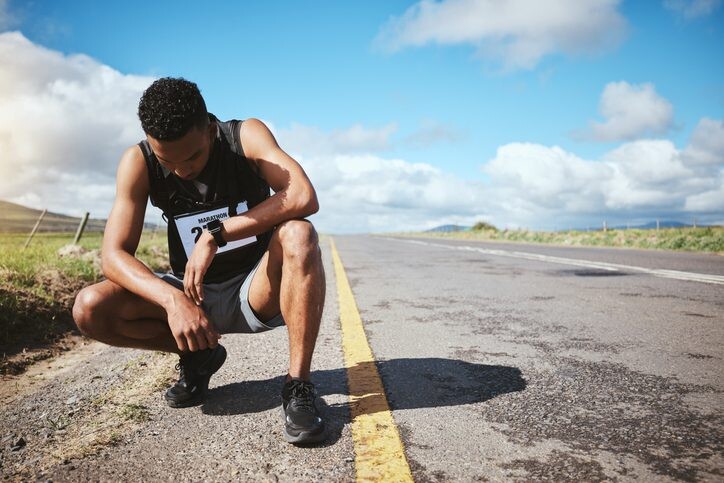
Try to remember that you are not alone. This is something even the most elite and experienced athletes struggle with. Especially in running, where so much mental resilience is required to push yourself, your mind and body can really take you on an emotional rollercoaster. Those rest days that follow competition to allow your body to recover physically, especially after a marathon, can be more mentally strenuous than you imagined. Post-race depression can be characterized by fatigue, lack of appetite and motivation, mood swings or insomnia, and being prepared for it is the best thing you can do.
Create a plan

Making a plan ahead of time for your return to training will help you stay accountable, even if you aren’t working toward anything specific. Make sure to give yourself those rest days to allow yourself to recover and heal, but it doesn’t have to (and probably shouldn’t) entail lying around doing nothing. A light walk, bike ride, or signing up for a yoga class can all be good opportunities to get in some active recovery while being social–without the focus of gaining fitness.
Set a goal
What is the next thing you want to accomplish? If you review your big performance, think about what went right, and what didn’t. You can keep working to meet your original target, set the bar higher or switch gears to try a new distance. Committing to achieving this next goal will give you the feeling of purpose and motivate you again.
To top that: pre-emptively commit to that next step, and avoid staring at an empty calendar. Overthinking and criticizing your recent performance will just amplify that low you are already experiencing. Looking ahead to the next phase of your journey as a runner and not treating this achievement as the end goal will soften that post-race crash–leaving you feeling like yourself and ready to get back to work.
Stay busy
If your training has kept your calendar full during the past few months, fill it with something else to shift your focus during your recovery period. Aim to do something you have recently had to turn down since training took precedence. This might be heading to your local ice cream shop, spending the day at the beach or grabbing a drink with a friend.
Another tip: try not to take things too seriously. You are allowed to (and supposed to) have fun with your running journey. Once you feel more recovered, drag your friends out for a leisurely local race, or even just a fun jog.
Talk about it
Don’t struggle silently. If you are dealing with the blues, your training partner may be feeling the same way. Reaching out to friends and family will reassure you that you are supported and have a purpose, plus occupying your time and mind until you feel like yourself again.
(07/11/2024) ⚡AMPby Cameron Ormond
The queen of ultradistance Courtney Dauwalter is set to defend her Hardrock 100 crown
Courtney Dauwalter , the queen of ultra-distance running, will once again put on trail running shoes this Friday to compete in the Hardrock 100 , the prestigious 165-kilometer mountain race with 10,000 meters of positive elevation gain that takes place in the San Juan Mountains in Colorado, United States.
The American runner will try to defend the title she won in 2023, when she won the race with a record time of 26h14:08 , although this year, unlike last year, the race will be run clockwise.
"It's a great race, very tough and difficult. I'm coming back because all my participations here have had very tough moments, and I hope to be able to soften those moments a bit and finish the race without so many difficulties," said Dauwalter in an interview with iRunFar.
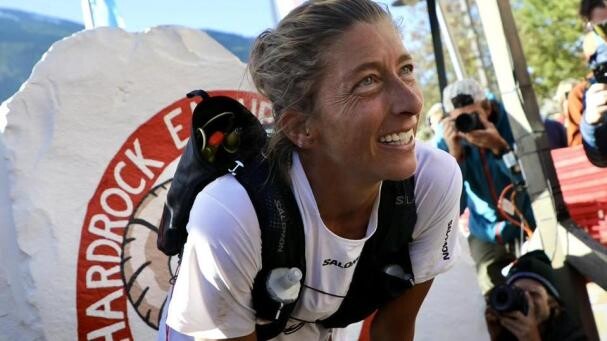
The reigning Transgrancanaria and Mt. Fuji 100 champion will face her main opponents in Germany's Katharina Hartmuth and France's Camille Bruyas , second in the UTMB Mont-Blanc in 2023 and 2021, respectively.
On the men's side, the main figure will be the French runner François D'Haene , who wants to repeat his victory from 2021 and, why not, beat the circuit record belonging to the Spaniard Kilian Jornet (21h36:24).

American Zach Miller is on the roster, although he is likely to miss the event due to recent appendix surgery.
The Hardrock 100 begins and ends in the town of Silverton and passes through some of the most spectacular mountain scenery in the United States, home to elk, bears and cougars. The highest point is Handies Peak, at 4,200 meters.
The race will start on Friday 12th July at 6am (2pm in Spain) and can be followed live on YouTube .
(07/11/2024) ⚡AMPby Matias Camenforte
Hardrock 100
100-mile run with 33,050 feet of climb and 33,050 feet of descent for a total elevation change of 66,100 feet with an average elevation of 11,186 feet - low point 7,680 feet (Ouray) and high point 14,048 feet (Handies Peak). The run starts and ends in Silverton, Colorado and travels through the towns of Telluride, Ouray, and the ghost town...
more...Korir targets improved display at Boilermaker 15k
Two-time Los Angeles Marathon champion John Korir returns to the Boilermaker 15K road race on Sunday, itching to go one step better after finishing second to Ethiopia’s Jemal Yimer last year.
Korir will use the race to gauge his body ahead of the Chicago Marathon on October 13.
“I am heading there to win the race after missing out last year,” said Korir. “I am well prepared. This will be a big event for me.”
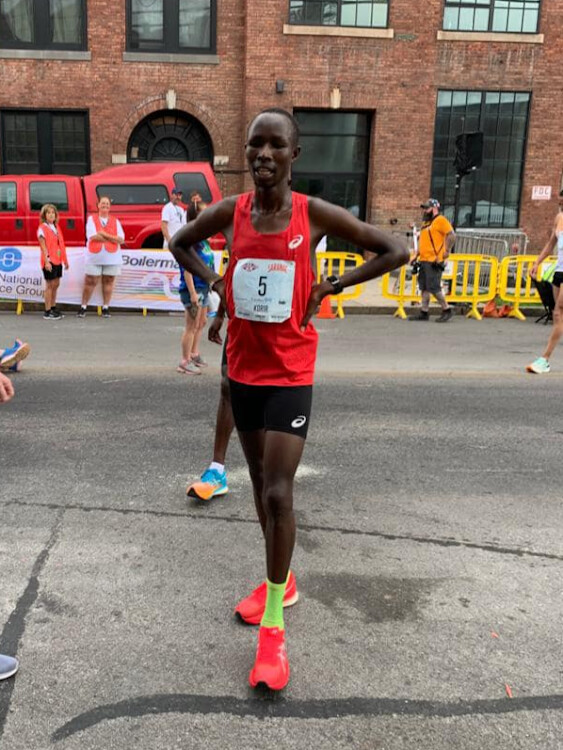
Korir, a younger brother to former Boston Marathon champion Wesley Korir, added: “I will use it as part of my speed work and endurance training for the Chicago Marathon. Chicago is no joke but a real battle for the title since it attracts top marathoners.”
Korir spoke at the Eldoret International Airport on Wednesday morning as he started his journey to the USA.
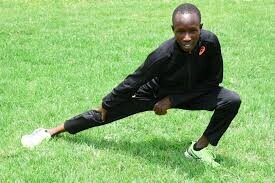
Last year, Korir finished second in 42:13 behind Yimer (42:06) as Kenya’s Charles Langat completed the podium in 42:28.
At the Chicago Marathon, Korir finished fourth in 2:05:09 in a race won by the late Kelvin Kiptum in a world marathon record time of 2:00:35.
The then defending champion, Benson Kipruto, was second in 2:04:02 as Belgium’s Bashir Abdi completed the podium in 2:04:32.
In 2022, Korir was third in 2:05:01 behind Kipruto (2:04:24) and Ethiopia’s Seif Tura 2:04:49.
(07/11/2024) ⚡AMPby Emmanuen Sabuni
Boilermaker 15k
The Boilermaker 15K is the premier event of Boilermaker Weekend. This world krenowned race is often referred to as the country's best 15K. The Boilermaker 15K is recognized for its entertaining yet challenging course and racing's best post-race party, hosted by the F.X. Matt Brewing Company, featuring Saranac beer and a live concert! With 3 ice and water stops every...
more...Runners: ditch your superstitions
As a runner, you know that race day can be incredibly nerve-wracking. Some days, you spend your time wracking your brain to make sure you follow the exact same steps you took last time you had a good race –right down to wearing the same (unwashed) “lucky” socks. If something doesn’t go to plan, or your luggage goes missing, this superstition now becomes a major obstacle, rather than a good luck charm. If superstitions aren’t helping you, why let them control you?
Having a routine that makes you feel good is important. But with traveling, eating at restaurants, sleeping in hotels, unpredictable race weather or items forgotten from the packing list, being adaptable can be beneficial and help set you up for success, no matter what.

These are some of the most common superstitions that I’ve seen.
Wearing the same race socks, despite massive holes

Needing very specific pre-race food, just because you once ate it before a good race.
Always sticking to the same hairstyle–dutch braids into a ponytail with a bow to match your race top.
Needing a specific brand of (takeout) coffee. Hotel coffee, McDonald’s coffee, home-brewed coffee–they just won’t do.
Completing a very specific warmup: fixed order of stretches, five reps of each drill and the same hype-up song.
News flash: wearing clean socks, skipping the braids, or eating a bagel with cream cheese instead of a PB&J is not going to deter you from having a good race.
My tip: have confidence that you have the fitness and the mental resilience to race your hardest. Don’t give the credit for an amazing race to a pair of socks! That is your hard work that got you there. If you feel yourself developing a superstition, why not fight it?Purposely try to lean away from relying on those very particular routines. If you are unafraid to switch things up, you will ingrain in your mind that you have the ability to race your hardest on race day. Good fortune has nothing to do with it!
With everything that could potentially go wrong, recondition your mind to interpret things as just going differently. If you avoid developing rigid superstitions and instead set goals to be flexible, positive and self-assured, “different” will have no effect on your long-awaited race.
(07/11/2024) ⚡AMPby Cameron Ormond
Sharon Lokedi finally gets the chance she deserved after late inclusion in Kenya’s Olympics team
Marathoner Sharon Lokedi will be heading to the Paris 2024 Olympics after profiting from Brigid Kosgei’s misfortune, having been controversially omitted from the team.
Sharon Lokedi has finally got the chance to represent Kenya at the Paris 2024 Olympics after her late inclusion as a replacement for the injured Brigid Kosgei.
Lokedi was widely expected to make Kenya’s final three, alongside two-time Boston Marathon winner Hellen Obiri and defending champion Peres Jepchirchir, but was controversially omitted for former world record holder Kosgei.
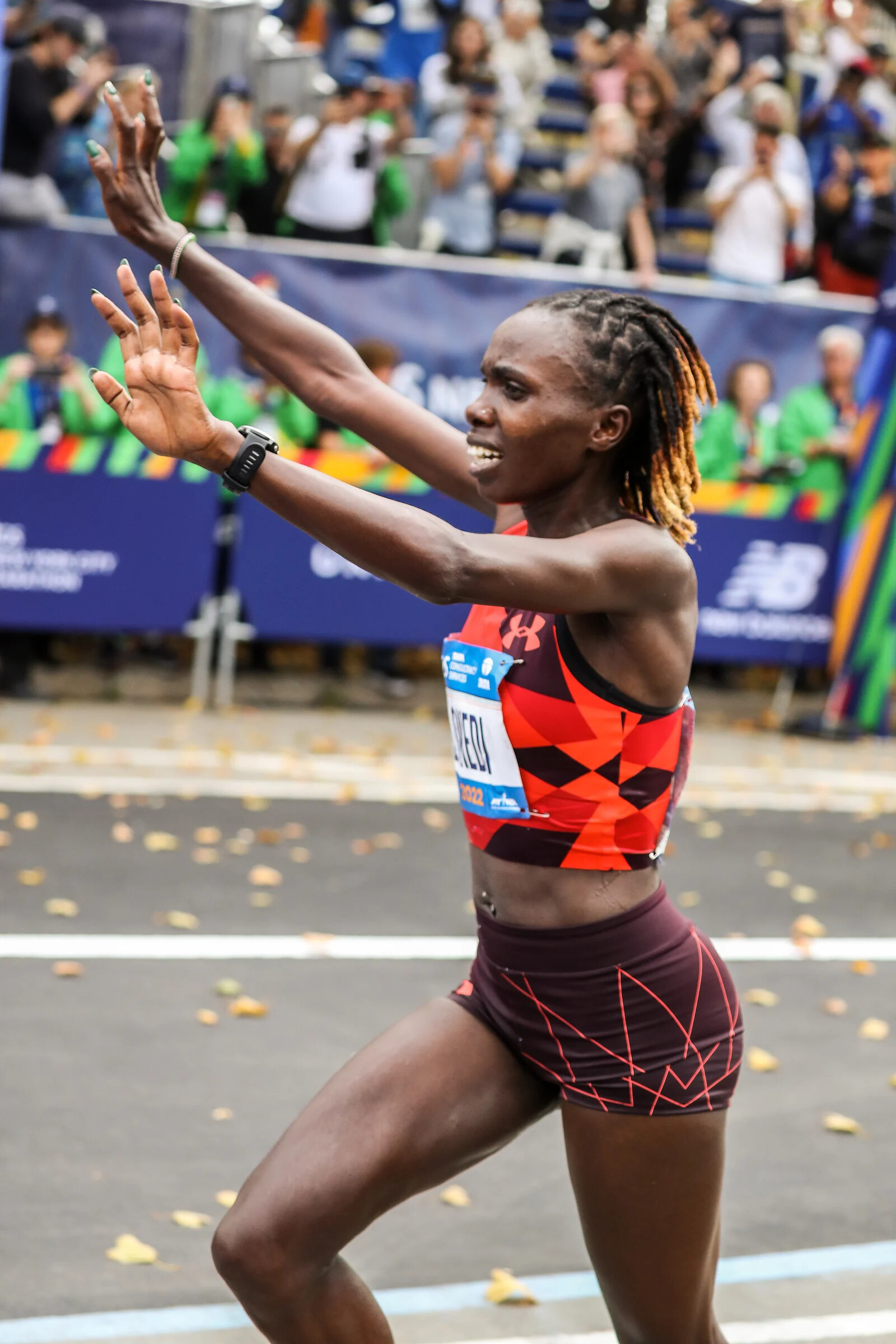
The decision drew the ire of fans who felt Lokedi deserved a slot in the team given her recent form that has seen her win New York Marathon in 2022 before a third-place finish last year and ran Obiri close in Boston in 2024 before finishing second.
Kosgei, meanwhile, won the Lisbon Half Marathon in March this year but could only manage fifth in London and has not won a race since the Tokyo Marathon in March 2022, with injuries and form disrupting her.
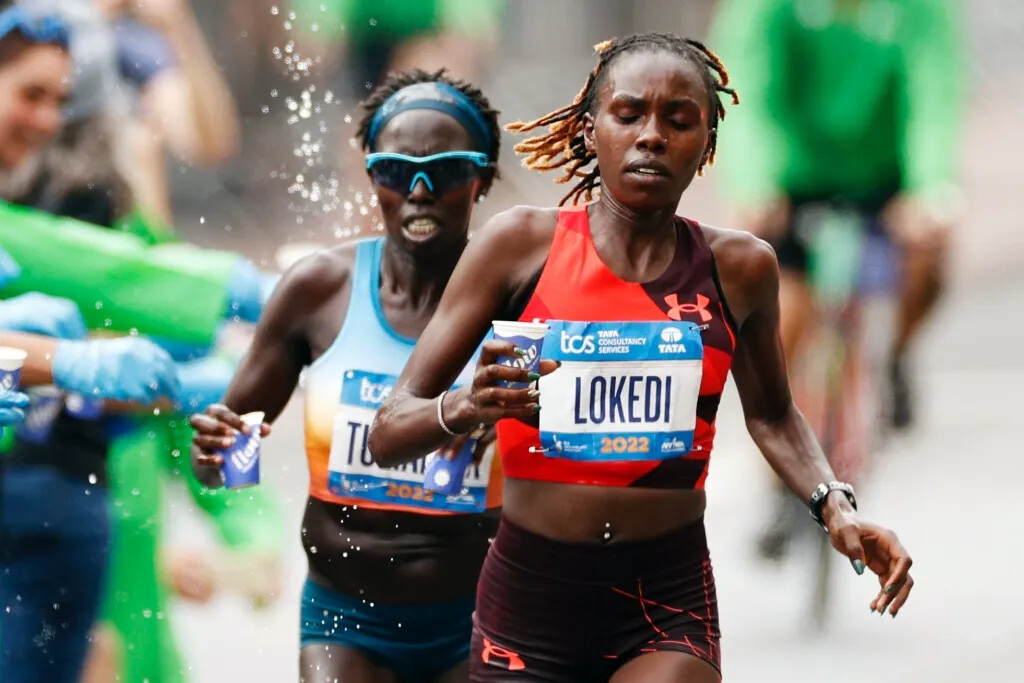
However, Kosgei will now not be on the plane to Paris due to another injury, paving the way for Lokedi, who had been named as a reserve.
“The Kenya Marathon team heading to the Olympic games in Paris has been training for slightly over two months, and the athletes continue to receive financial support and technical support,” read a statement from the National Olympics Committee of Kenya.
“It’s during the one of the regular monitoring sessions that Olympic silver medalist Brigid Kosgei expressed an injury concern to the technical team. Upon a review by the medical team led by the Chief Medical officer Dr Ondiege, Kosgei will not be heading to Paris for her second Olympics.
“Sharon Lokedi, who was named in the reserve team, will now join defending champion Peres Jepchirchir and Hellen Obiri to fly Kenya’s flag in Paris.”
(07/10/2024) ⚡AMPby Joel Omotto
Paris 2024 Olympic Games
For this historic event, the City of Light is thinking big! Visitors will be able to watch events at top sporting venues in Paris and the Paris region, as well as at emblematic monuments in the capital visited by several millions of tourists each year. The promise of exceptional moments to experience in an exceptional setting! A great way to...
more...Lawrence Cherono banned for seven years for doping and tampering
The 2019 Boston and Chicago Marathon winner admitted to three anti-doping rule violations
Lawrence Cherono, a two-time major marathon champion and the former world No.1 over 26.2 miles, has been banned for seven years for doping and tampering.
The 35-year-old admitted to three anti-doping rule violations, including tampering for attempting to mislead the investigation.
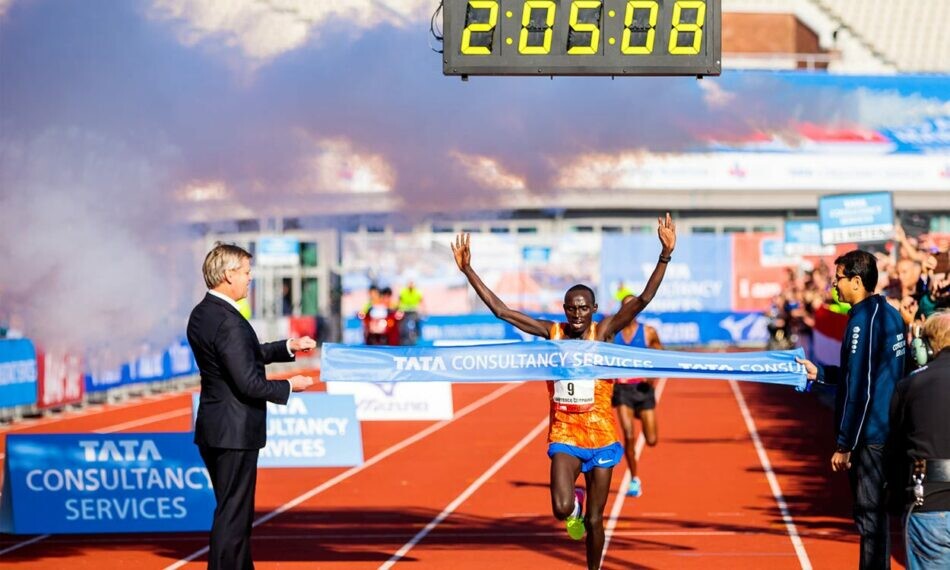
Cherono, who has a personal best of 2:03:04 in the marathon and is 12th on the world all-time list, was suspended by the Athletics Integrity Unit (AIU) in 2022 after testing positive for the banned substance trimetazidine, in an out-of-competition test.
He has now received a four-year ban for the positive test and was given another four years by the AIU for the tampering offence. However, as Cherono admitted to the violations, he has been given a one-year reduction to his ban.

In addition to Boston and Chicago, Cherono has won marathons in Seville, Valencia, Prague, Honolulu and Amsterdam.
The AIU said: “In attempting to explain the positive test, Cherono initially said he had been given the antibiotic Erythromycin and was also injected with an unknown substance by a doctor to treat stomach problems, but then also attempted to implicate his training colleagues for the failed test, claiming they were ‘jealous of his success’.
“However, in a subsequent written statement, Cherono said he had been inadvertently given Trimetazidine in the form of Carvidon tablets by his wife – instead of the painkillers he had requested – to treat muscle pain following training on 22 May 2022. According to the runner, his wife had been prescribed the Trimetazidine four days earlier at a medical centre.
“To support his explanation, Cherono provided a laboratory request from the medical centre, including hand-written details of medications prescribed for his wife, along with a photograph of the underside of tablets enclosed in their blister packaging. In collaboration with the Anti-Doping Agency of Kenya (ADAK), further investigations into the laboratory request and additional medical documents provided by Cherono as proof of his wife’s treatment at the medical centre, revealed “several inconsistencies”.
“Following a request from ADAK to the medical centre in November 2022 for additional information to verify the documents independently, the clinic director confirmed in December 2022 that they ‘were not genuine/official documents from the clinic and that the information they contained was not true and accurate’.
“Following this development, the AIU said its investigation into Cherono’s explanation and the submitted documents ‘was materially obstructed and substantially undermined’, with repeated attempts to obtain copies of medical records to corroborate the runner’s wife’s alleged medical treatment proving unsuccessful. After its attempts to secure the wife’s medical records were repeatedly impeded, the AIU – through ADAK – gained a court order in Kenya compelling the medical centre to surrender the documents. In response, the medical centre said there were no records available for any treatment to the athlete’s wife since May 1, 2022.”
On June 26, 2024, Cherono admitted to the violations in a signed letter to the AIU, marking the end of the two-year investigation.
“This decision is testament to the tireless and persistent efforts of the AIU in investigating doping and the explanations provided for positive tests,” said AIU Head, Brett Clothier.
“Since its inception, the AIU has remained steadfast in its commitment to clean sport, and this decision sends a strong signal to drug cheats that the AIU will leave no stone unturned in carrying out its mandate.”
(07/10/2024) ⚡AMPby Tim Adams
Eliud Kipchoge gets candid on his fatherhood journey
Eliud Kipchoge has spoken about his fatherhood journey and how he manages to balance family time and training.
Eliud Kipchoge has opened up about his fatherhood journey and how being raised by a single mother shaped how he treats his daughter and two sons.
The former world marathon record holder insisted that he is a great father and he believes he is raising confident children.
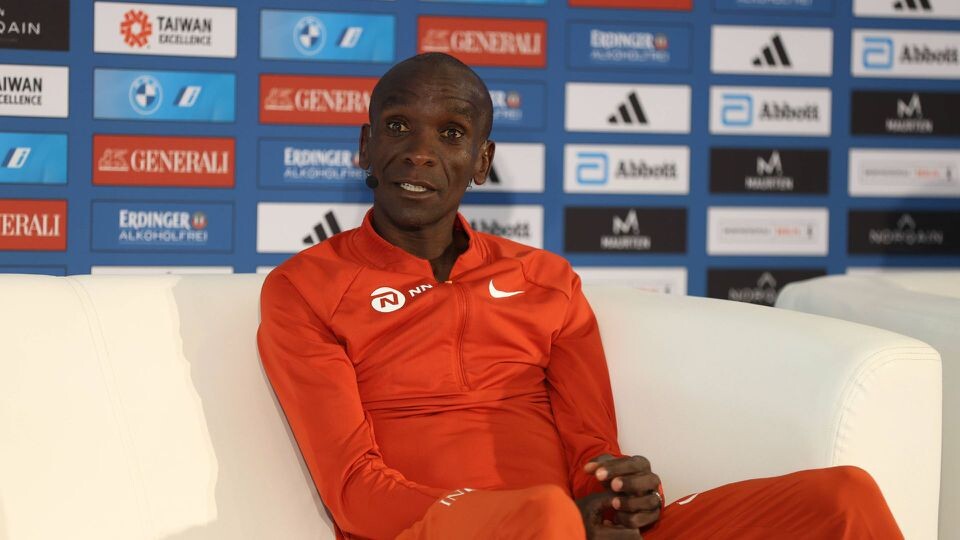
Speaking in an interview with NN Running team, the five-time Berlin Marathon champion noted that he learned most of his skills from his friends who are fathers.
“At home I am a husband and father…I can say I’m a responsible father. I don’t have the experience other than getting experience from other fathers. I was taken care of by a single mother and I’m trying all the best to be a good dad to my girl and two boys,” he said.
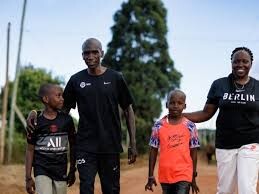
Speaking about his illustrious career, the four-time London Marathon champion noted that after spending about 10 years on the track, he took a shift to th roads.
He started his career with a 10km road race, then slowly rose through the ranks to the marathon where he has been dominant.
Kipchoge made his full marathon debut at the 2013 Hamburg Marathon where he won the race and has managed to establish his name on the global stage since then.
The two-time Olympic champion is undoubtedly one of the greatest marathoners in the world, thanks to his prowess. He has run four of the 10 fastest marathons in history.
He also lauded his coach, Patrick Sang for being a vital part in his career. He explained that they remain friends during training and even after training and they are able to talk about anything from sports to family.
“I spent a decade on the track and I guess I was successful on the track. After that, I decided to switch to road running,” Kipchoge said.
“I started with the 10km, then half marathon then the full marathon. For the last 11 years, I’ve been running the marathon and that’s why I always say the marathon is in my blood. That’s what actually made Eliud Kipchoge to be who he is now.
“I like reading, I like watching TV, I like going to the farm to refresh my mind. Patrick is critically important to me…I have been with him throughout my whole career. We exchange a lot, we think a lot, we critically comment a lot in business, in life, in sports.”
(07/10/2024) ⚡AMPby Abigael Wafula
Confirmed! Brigid Kosgei out of Paris 2024 Olympic Games
Changes have allegedly been made to the women's marathon team for the Paris 2024 Olympic Games.
Fans had caused an uproar concerning the women’s marathon team, questioning why Sharon Lokedi was selected as a reserve and Brigid Kosgei included in the main team.
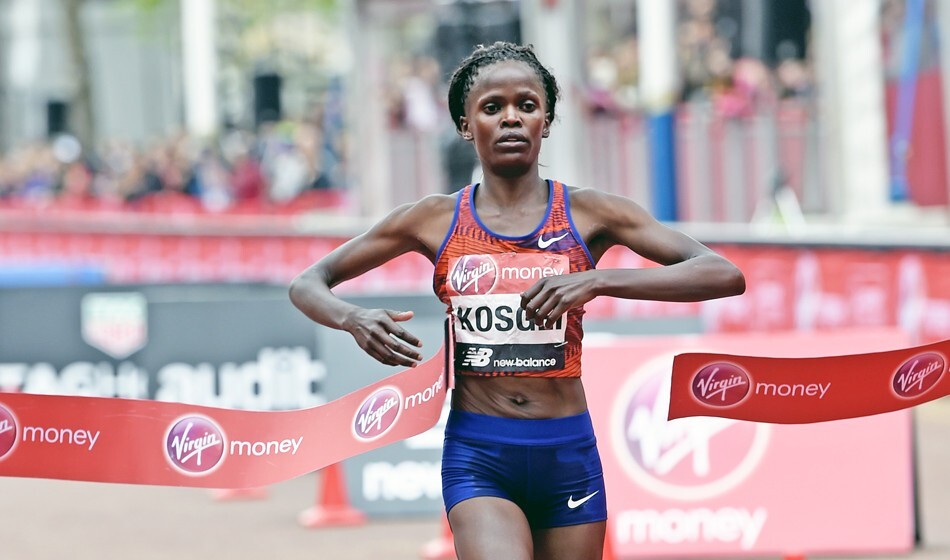
However, Pulse Sports has established that the 2022 New York City marathon champion Lokedi will now be included in the main team. Lokedi will join defending champion Peres Jepchirchir and two-time Boston Marathon champion Hellen Obiri.
In a press statement released by the National Olympic Committee of Kenya, Kosgei had expressed injury concerns and was forced to withdraw from the event. She will not be heading to the Paris 2024 Olympic Games.

NOC-K announced that upon a review by the medical team led by the Chief Medical Officer Dr Ondiege, Kosgei will not be heading to Paris for her second Olympics.
"Sharon Lokedi who was named in the reserve team will now join defending Champion Peres Jepchirchir and Hellen Obiri to fly Kenya’s flag in Paris," the statement read in part.
"The National Olympics committee would like to thank Brigid for the time to spent in training under the Team Kenya Umbrella and will continue supporting her throughout the season."
Lokedi has showcased her fighting spirit in her recent races, finishing second in the 10km road race at the Mastercard New York Mini 10K. She also stuck with Obiri until the finish line at the Boston Marathon, finishing second. Last year, Lokedi finished third at the New York City Marathon.
On her part, Kosgei has struggled with injuries, failing to live up to the billing in her recent races. In 2023, she failed to finish at the London Marathon and proceeded to finish fourth at the New York City Marathon.
The former world marathon record holder then ended her season with a win at the Abu Dhabi Marathon, crossing the finish line in 2:19:15.
This season, Kosgei opened her season with a win at the Lisbon Half Marathon before proceeding to the London Marathon where she finished fifth.
The women's Olympic race will take place on August 11, the day after the men's marathon.
(07/10/2024) ⚡AMPby Abigael Wafula
Paris 2024 Olympic Games
For this historic event, the City of Light is thinking big! Visitors will be able to watch events at top sporting venues in Paris and the Paris region, as well as at emblematic monuments in the capital visited by several millions of tourists each year. The promise of exceptional moments to experience in an exceptional setting! A great way to...
more...French marathoner named to Olympic team gets two-year doping ban
2:05 marathoner Mehdi Frère has been handed a two-year suspension for missing three doping tests within a year.
French marathon runner Mehdi Frère, recently named to France’s Olympic team for the men’s marathon, has been banned for two years for breaching anti-doping rules, his lawyer told Agence France-Presse (AFP) on Tuesday. Frère’s suspension is due to a whereabouts offence (missing three doping tests within one year).
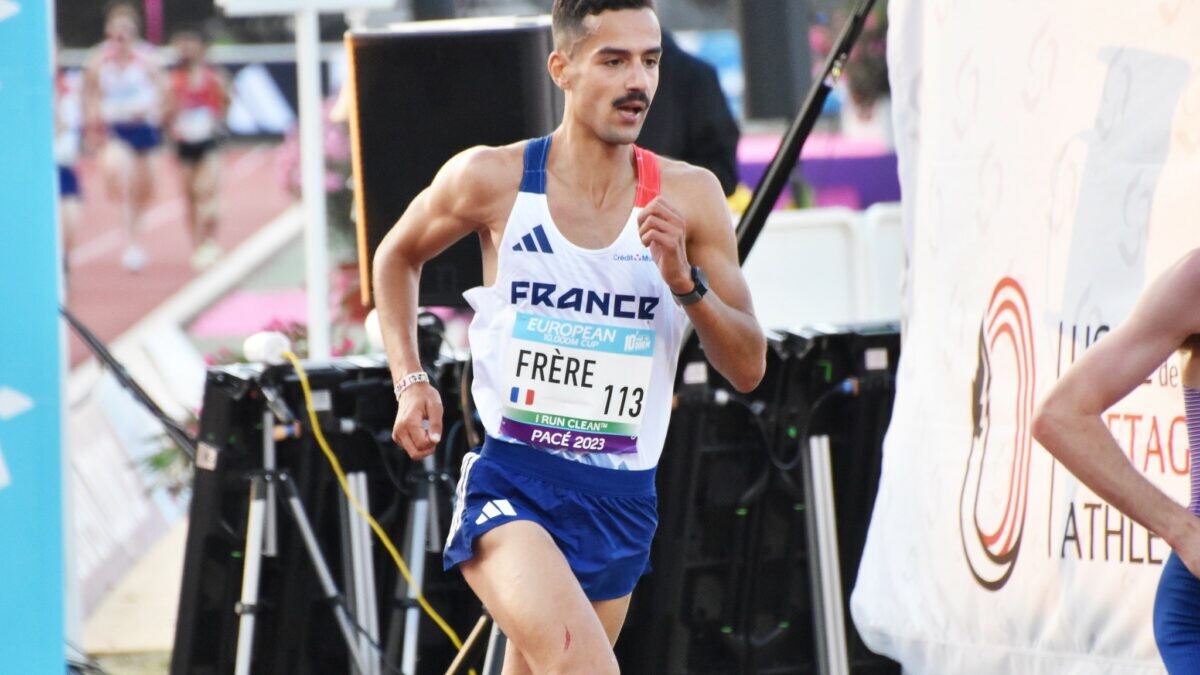
Frère’s personal best of 2:05:43 makes him the second-fastest marathoner in French history and the ninth-fastest European. He set this time at the 2023 Valencia Marathon, where he finished ninth. In May, Frère was named to the French Olympic marathon team alongside Morhad Amdouni and Nicolas Navarro. The Fédération Française d’Athlétisme (FFA) has opted for a conditional selection of Frère (instead of selecting another athlete) during the appeal process.
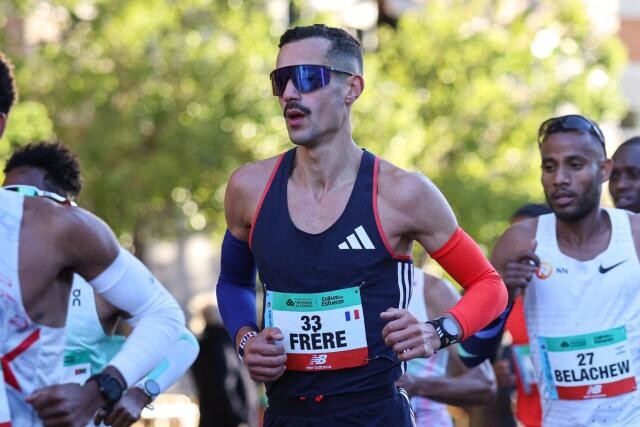
According to the AFP, Frère plans to appeal the ban at the Court of Arbitration for Sport (CAS) and believes a decision before the Olympics is possible. “We’ll be able to refer the matter to the Court of Arbitration for Sport as part of an accelerated procedure, to obtain an arbitration award by July 26, the opening day of the Olympics,” his lawyer told AFP.
During the appeal process, Frère is ineligible to compete, and he could face a longer ban if he loses the appeal. The men’s marathon is scheduled for Aug. 10, the penultimate day of the Paris 2024 calendar.
Frère is the latest recipient of a whereabouts suspension, which has affected some of the most high-profile distance runners this year. Spanish distance runner Mohamed Katir was suspended earlier this year, also for a whereabouts offence. Katir launched an appeal, then admitted to the wrongdoing, accepting a two-year ban–meaning he won’t be competing for his country at the Paris 2024 Olympics.
(07/09/2024) ⚡AMPby Marley Dickison
Paris 2024 Olympic Games
For this historic event, the City of Light is thinking big! Visitors will be able to watch events at top sporting venues in Paris and the Paris region, as well as at emblematic monuments in the capital visited by several millions of tourists each year. The promise of exceptional moments to experience in an exceptional setting! A great way to...
more...Spicing up your ice bath
Athletes should remember that recovery is as important as training; while sleeping and hot tubbing sound like pretty enjoyable and relaxing methods to promote muscle healing, foam rolling and stretching definitely lean toward the more strenuous end of the recovery spectrum. Sitting in a tub of ice water is difficult to describe as “enjoyable,” but if you combine your favourite and least favourite recovery routines, you can make the perfect formula for recuperating post-workout: contrast baths. However, there are times where this recipe isn’t as beneficial for your fitness.
Contrast therapy requires a hot tub and a cold tub, at temperatures of 100-104 C and 46-60 C, respectively. Submerging yourself in the hot tub for three to four minutes, followed by a dip in the cold tub for one minute, is said to generate a pumping motion of the blood vessels as they dilate and constrict. This cycle can be repeated for about 20-30 minutes.
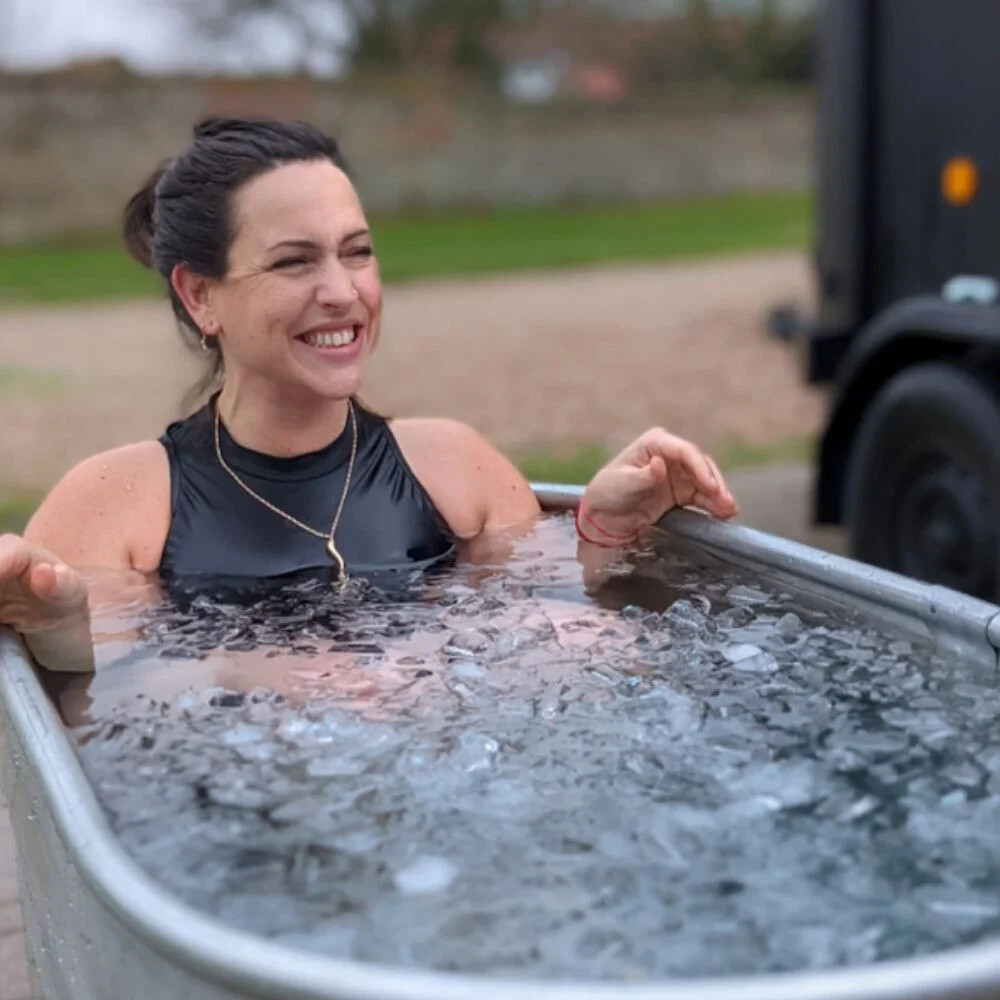
Benefits of contrast baths
Contrast baths promote circulation and muscle recovery, helping to reduce pain, fatigue, stiffness and inflammation. They aim to flush lactic acid buildup from your muscles, decreasing delayed onset muscle soreness (DOMS) that may otherwise arise after your workout. With more controlled inflammation and pain management, range of motion (ROM) can also be improved. There is no evidence deeming contrast therapy more effective than ice baths, but by breaking up the frosty sessions, contrast baths are perceived as more enjoyable.

When to contrast bath
The process is most beneficial for acute recovery, and frequently used by athletes dealing with muscle soreness, joint irritation or following a tough race or workout, when they’re looking to bounce back to train or compete the following day. It is less favourable for long-term gains, as the acute inflammation that it blunts is actually crucial for signalling the body to initiate muscle repair to grow stronger and faster following a training session.
Ice baths involve sitting in a cold tub for up to 15 minutes–a shorter, but more uncomfortable, process. Some say ice baths shut the body down more, suggesting that contrast baths are better for feeling refreshed more quickly.
There isn’t a limit to how frequently you should include contrast therapy in your recovery routine, but it’s very important to consider your performance goals. If your legs feel achy the night before your 10K race or you aggravated your knee on your run, contrast therapy will help to create an analgesic effect by reducing inflammation and fatigue to prepare you mentally and physically for the next day. If you are looking for muscle gains, wait until 48 hours post-workout to do your bathtub polar plunge. This is the crucial period needed for proper muscle adaptation to benefit from the session you just completed.
(07/09/2024) ⚡AMPby Cameron Ormond
The Issam Asinga Case: Evil Coverup or Did The Fastest High School Sprinter Ever Test Positive For Drugs After Eating Gatorade Gummies?
Six weeks ago, 19-year-old Issam Asinga, the fastest teen sprinter in world history, was handed a four-year ban from the sport of track & field after testing positive for the banned substance GW1516. Asinga’s positive sample came in July 2023, just days before he ran 9.89 seconds to become, at the time, the youngest person in history to break 10 seconds for 100 meters. Asinga, who had been provisionally suspended since August 2023 by the Athletics Integrity Unit (AIU), appealed the decision to the AIU’s disciplinary tribunal, who ruled against him and upheld the four-year suspension on May 27.
Until then, the details of Asinga’s case had been kept secret. Now they are public, and potentially explosive.
Asinga, who maintains his innocence, blamed the positive test on contaminated Gatorade gummies he received at the company’s National Athlete of the Year ceremony in Los Angeles last summer, where he was honored as high school track & field athlete of the year. Asinga has already appealed his case to the Court of Arbitration for Sport, where it is expected to be heard later this year. He is also mulling whether to launch a civil suit against Gatorade because the gummies in question falsely carried an NSF Certified for Sport label, which signified that the product did not contain any prohibited substances. NSF has made a public statement saying the gummies from Asinga’s lot number were not NSF Certified and the NSF Certified mark was being used without authorization.
“They distributed a supplement that wasn’t NSF Certified for Sport that had a banned substance in it,” said Asinga’s lawyer Paul Greene. “That’s violation of product liability law, negligence, implied warranty, New York state consumer protection law. I mean, it’s bad. He had the possibility of getting endorsement and NIL deals that were going to be in the millions of dollars and he lost all that as a result of this. He also lost out on the chance to compete in the World Championships and the Olympics.”
The AIU, however, was not satisfied that the gummies were the source of Asinga’s positive test, and its disciplinary tribunal agreed.
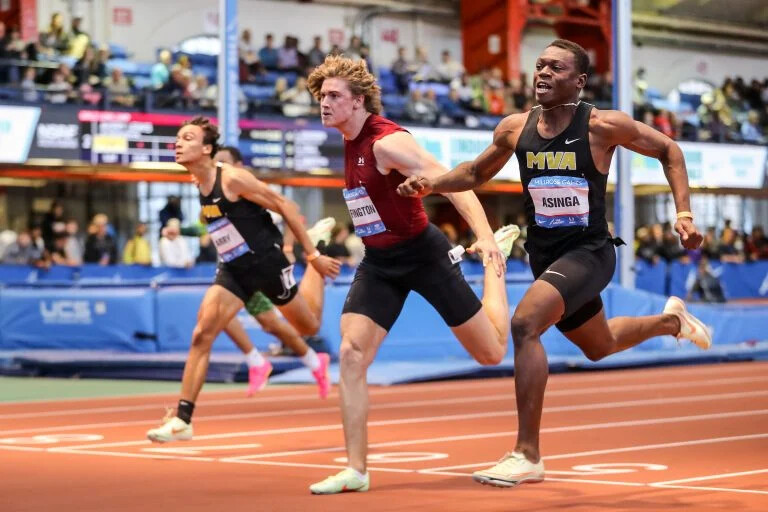
Incredible 2023 high school season
Asinga’s is one of the highest-profile doping cases in recent years. After running personal bests of 10.44 seconds in the 100m and 20.76 in the 200m as a junior in 2022 at Principia High School in Missouri, Asinga transferred to Montverde Academy in Florida for his senior year, where he improved enormously and produced one of the greatest seasons ever by a high school sprinter.
During the 2023 indoor season, Asinga won national high school titles in the 60m (6.59) and 200m (20.48) at New Balance Nationals, tying the national record in the former event (he ran 6.57 in the semis) and breaking the national record in the latter. Outdoors, Asinga ran a wind-aided 9.83 in the 100m to defeat Noah Lyles, who would go on to win the world title in that event four months later. Asinga, who was born in the US but represents Suriname internationally, then ran 19.97 in the 200m in April (#2 all-time among US high schoolers) and 9.89 in July to win the South American 100m title in Sao Paulo, Brazil. The latter time ranked Asinga in a tie for ninth in the world in 2023. It was also a world U20 record and was the first time a US high school athlete had broken the fabled 10-second barrier.
Now that world U20 record has been stripped as Asinga finds him at the center of controversy. The 43-page decision in his case released by the AIU presents only two possible versions of events.
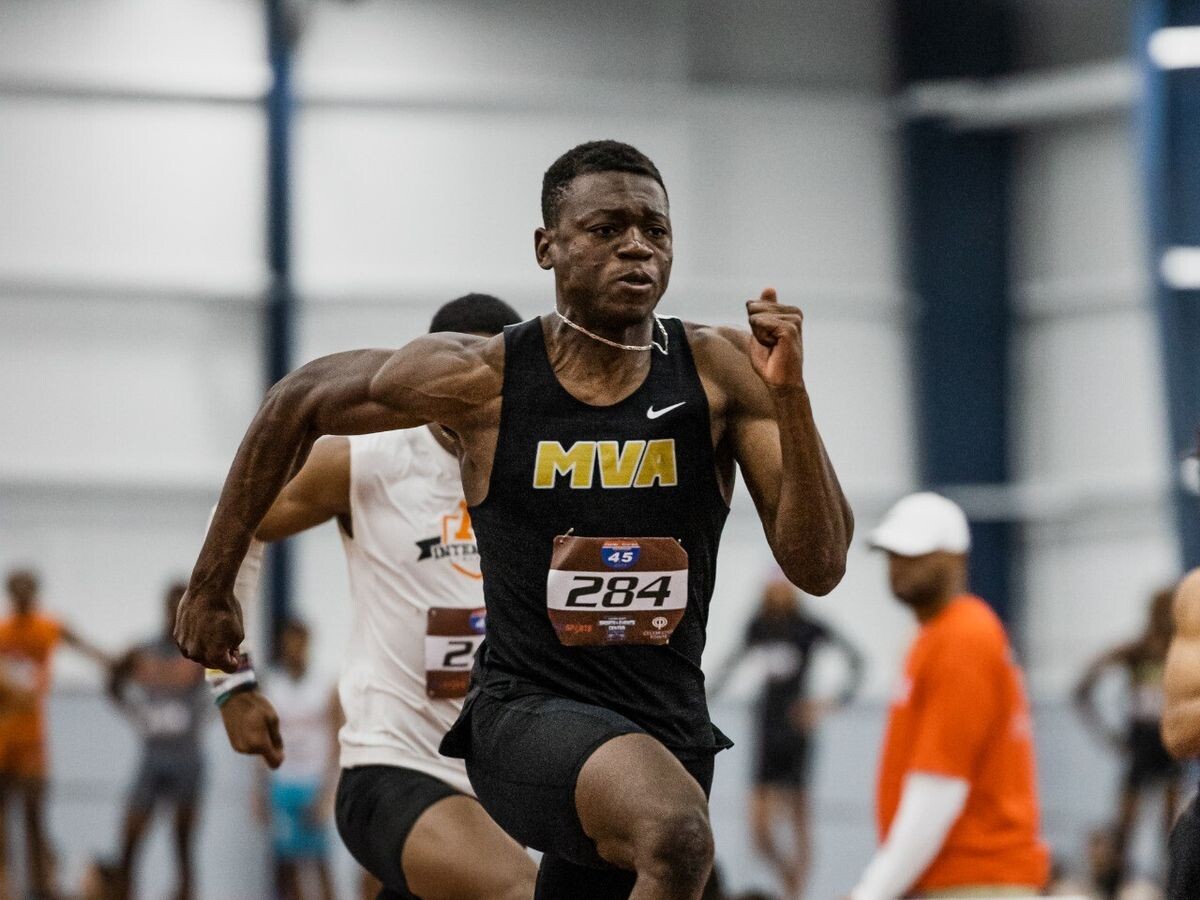
Option A: An 18-year-old was caught doping barely a month after being added to the international testing pool. Then he or someone in his camp tried to cover up his doping by manipulating evidence and defaming Gatorade, one of the world’s largest sports nutrition companies.
Option B: One of the greatest sprint talents in history was unjustly banned after consuming a tainted supplement given to him by one of the most famous brands in sports.
Neither picture is particularly rosy for the sport of track & field, but one of them must be true. After reviewing the evidence, the AIU and its disciplinary tribunal is clear which version it believes: Option A. As a result, Asinga is banned from competition until 2027 barring a successful appeal to CAS.
Background: Asinga enters the testing pool
Most high school track athletes, even elite ones, are rarely drug-tested. But by the spring of 2023, Asinga was running so fast it was becoming clear he could be a factor at that summer’s World Championships in Budapest. He was added to the World Athletics Testing Pool on June 1.
Asinga was tested on June 11 and returned a negative result. He was tested again out-of-competition on July 18 (in his training base of Clermont, Fla.) and again at the South American championships on July 28. The July 18 sample tested positive for GW1516, a banned substance that modifies how the body metabolizes fat and has been found to cause cancer. Specifically, Asinga’s sample tested positive for low levels of two metabolites of GW1516 — a metabolite is a substance produced when the body breaks down a specific drug. In this case, Asinga’s urine contained the GW1516 sulfone metabolite (at a concentration of 0.2 nanograms per milliliter in both his A sample and B sample) and the GW1516 sulfoxide metabolite (at a concentration of 0.5 ng/mL in his A sample and 0.4 ng/mL in his B sample).
On August 9, Asinga was informed of his positive test and provisionally suspended from competition. Shortly after, in an effort to prove his innocence, he began sending his supplements to be tested for contamination at the Sports Medicine Research and Testing Laboratory (SMRTL), a WADA-accredited lab in Salt Lake City. The first supplement Asinga sent, melatonin gummies, tested negative. Asinga then sent a larger set of supplements, including Airborne and Skratch Lab Hydration packets as well as Gatorade Immune Support Gummies and Gatorade Recovery Gummies, two new products he had received at the Gatorade National Athlete of the Year ceremony on July 10.
All of the supplements tested negative for GW1516 except the Gatorade Recovery Gummies. In December, SMRTL informed the AIU that of the five gummies tested, four were positive for GW1516. That much, the parties agree on. From there, the narratives diverge.
Contaminated during manufacturing or as part of a coverup?
Asinga said he began taking the Recovery Gummies shortly after the ceremony on July 10 — initially two per day, then less consistently before traveling to Brazil for the South American championships on July 25. He said he did not take any gummies to Brazil. Asinga declared the gummies as a supplement on the doping control form for his July 18 test and said he had no concerns about the gummies because the container carried the NSF Certified for Sport label.
Greene said the AIU was initially reluctant to share the results of the SMRTL analysis with Asinga because it viewed the test results of products from an opened container as unreliable. (LetsRun.com reached out to the AIU for comment on June 2 but had not received an answer as of publication).
“Normally, SMRTL’s process and the AIU’s process is if there is a preliminary finding in a supplement, they don’t initially just tell the athlete straight away,” Greene said. “They try to go and find their own sealed version and test that too and then go to confirmation testing.”
But neither SMRTL nor the AIU could find a sealed version from the same lot number as Asinga’s gummies. So, after several weeks, the AIU relented and shared the news that the Gatorade Recovery Gummies had tested positive for GW1516. Asinga said he felt he was on his way to clearing his name.
“I was like okay, boom,” Asinga told LetsRun.com. “When I got that message, I was like, okay, finally we’re going to move forward.”
But the AIU did not agree with Asinga’s assessment and hinted at something far more sinister. In the disciplinary tribunal hearing, which took place over Zoom on April 30, Martial Saugy, former director of the WADA-accredited lab in Lausanne, Switzerland, served as an expert witness for the AIU and noted that the exterior of the gummies contained much higher concentrations of GW1516 than the interior of the gummies.
“I cannot see how these results would be consistent with a contamination during the manufacture of the gummies,” Saugy said. “These results point to an adulteration of the gummies at a later stage.”
Another key point: Asinga had opened both containers of gummies before sending them to SMRTL. And in SMRTL’s analysis, it noted a “large discrepancy” between the concentration levels of GW1516 between the containers. The two gummies tested from the first container each featured a concentration of at least 610 ng of GW1516 per gummy. Meanwhile of the three gummies tested from the second container, the highest concentration of GW1516 was 1.5 ng per gummy, and one of the gummies did not test positive for GW1516 at all.
This fact left open the possibility for manipulation; to be satisfied of his innocence, the AIU demanded to see a positive test from a separate, sealed container of gummies from the same lot number as Asinga’s.
Separate lot numbers bring questions
This is where things get complicated. The lot number printed on Asinga’s gummy containers was 22092117150234. NSF has issued a statement saying this lot number was not NSF Certified and the NSF Certified mark was being used without authorization. As part of the case, the Lausanne lab did test a sealed container of Gatorade Recovery Gummies, which tested negative. But that container was from a different lot number — lot 22092117150213, which was one of the lots that did receive NSF certification.
The gummies were not manufactured directly by Gatorade, but rather by a company contracted by Gatorade called Better Nutritionals, who manufactured the gummies for Gatorade at its plant in Gardena, Calif. As part of its case, the AIU called a former Better Nutritionals employee as a witness who testified that, for all intents and purposes, lots 22092117150234 and 22092117150213 were identical. This witness, referred to only as Witness B in the decision, made the following argument:
Witness B said lots 22092117150213 and 22092117150234 were part of the same batch of 20,000 jars’ worth of gummies cooked on the same day. That batch of 20,000 jars was separated into two lots: 7,500 jars (lot 22092117150213) would enter the marketplace immediately without the NSF Certified for Sport logo, of which a few would be sent to NSF for testing. The remaining 12,500 jars (aka lot 22092117150234, which included the gummies Asinga received) would be held back and given the NSF Certified logo predicated on NSF testing on lot 22092117150213.
Before NSF testing had been completed, lot 22092117150213 entered the marketplace without the NSF Certified logo.
By October 4, the 12,500 jars from lot 22092117150234 had been labeled NSF Certified. On October 18, Better Nutritionals received confirmation that lot 22092117150213 had been granted NSF certification, which was confirmed on the NSF website.
As proof that the two lots were part of the same batch, Witness B noted that the first six digits of the lot number, which refer to the cook date, were identical: 220921, or September 21, 2022. Furthermore, Witness B said the seventh digit refers to the specific production line used at the factory. Again, both were the same — 1, referring to the first production line.
Witness B said it would not be feasible to produce two separate batches on the same day, noting that a batch with 20,000 jars’ worth of gummies would take roughly 19 hours to complete with a minimum of eight hours to clean the production line between batches.
Witness B and another witness from Better Nutritionals (Witness A) noted there was no logical source for contamination as GW1516 is not an ingredient of any of the other products manufactured in the Gardena plant.
To simplify: one lot of 7,500 jars (lot 22092117150213) was NSF Certified but did not bear the NSF label. Another lot of 12,500 jars (lot 22092117150234) was not NSF Certified but did bear the NSF label, and that is the lot Asinga’s gummies came from. Better Nutritionals claims the two lots were cooked as one large batch of 20,000 jars, and as a result, the fact that one lot was NSF Certified means that both lots should be considered NSF Certified.
To represent him in his appeal, Asinga hired Greene, the sports lawyer who previously represented Jarrion Lawson, Shelby Houlihan, Peter Bol, and many others in their high-profile doping cases. Greene said he does not buy Witness B’s argument.
“There’s no such thing as two lots of the same,” Greene told LetsRun.com. “They’re not the same. Every lot is separate according to NSF and according to FDA rules.”
After it was informed of Asinga’s positive test by the AIU, the NSF conducted its own investigation and issued the following public notice on June 4:
Gatorade® Immune Support Gummies (citrus; lot number 22091937150233) and Gatorade® Recovery Gummies (cherry; lot number 22092117150234), manufactured by Better Nutritionals LLC, have been found in the public domain bearing the NSF Certified for Sport® Mark without authorization. These specific lot numbers, for these products, have not been tested, evaluated or certified by NSF and are not authorized to use the NSF certification mark or make any claims of NSF certification.
Furthermore, Greene noted that Witness B was terminated for cause by Better Nutritionals in December 2022 — the same month Better Nutritionals filed for bankruptcy.
Asinga asked a representative at Gatorade for a sealed container from lot 22092117150234 — the lot from which Assinga’s gummies came — but was informed that Gatorade Recovery Gummies had been discontinued for “manufacturing reasons” (Witness A said the gummies were discontinued because Better Nutritionals went bankrupt). The AIU and SMRTL also requested sealed containers from the same lot, yet Gatorade/Better Nutritionals only made containers from lot 22092117150213 available. Greene says that makes no sense. If the two lots are identical, Greene argues, why not send one from the same lot number as Asinga’s?
“Somehow they had several sealed versions from the 7,500 lot but nothing from the 12,500 lot,” Greene said. “I find it hard to believe they don’t have anything out there and it was an intentional choice to withhold it. It had to be. Why else wouldn’t they give us one from both? What’s the difference?”
If Gatorade has no sealed version, Greene says, they are in violation of FDA regulations, which state that supplement manufacturers must hold reserve samples from each lot they produce.
(07/09/2024) ⚡AMPby Jonathan Gault
20 athletes to represent Uganda in Olympic Games Paris 2024
The Uganda Athletics Federation (UAF) has unveiled a team of 20 athletes to represent the country at the Paris 2024 Olympic Games later this month.
Over 10,000 top athletes from around the world will take part in the Games slated for July 26 to August 11 in France.
Announcing the track and field squad, UAF President Dominic Otuchet said the team boosts experienced athletes who have what it takes to win medals for the country.
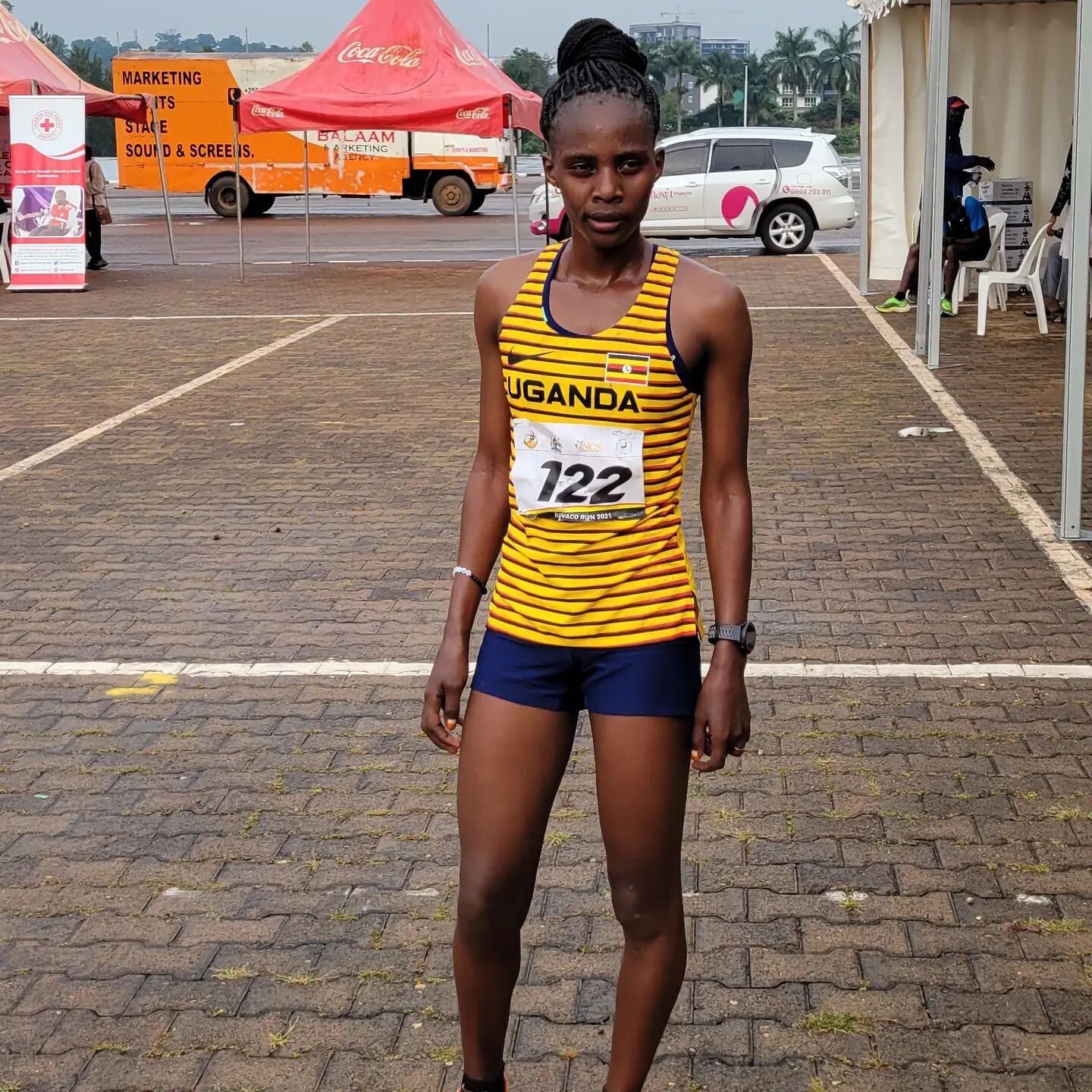
“We have athletes who have been proven and tested at the big stage,” said Otuchet.
World star Joshua Cheptegei who bagged a gold and silver medal at the Tokyo Olympics in 2020 will lead Uganda’s team together with half-marathon world record holder Jacob Kiplimo. The duo will battle in the 5,000m and 10,000m final.
“After getting a bronze medal at the last Olympic Games in Tokyo, my target is now to improve and win a gold medal. I know it will call for a lot of hard work to be able to achieve this and I am already working hard,” says Kiplimo.
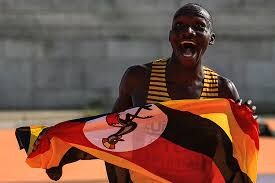
Female athlete Peruth Chemutai who won a gold medal in the women’s 3000m steeplechase will also be another medal hopeful for the Ugandan team.
The team has 10 male and 10 female athletes, with another two, Belinda Chemutai and Loice Chekwemoi, on the waiting list. Besides track and field athletes, Uganda will also have two swimmers, a cyclist and a female rower.
Uganda Team:
Men:
Tarsis Gracious Orogot (200m),
Tom Dradriga (800m),
Jacob Kiplimo, Joshua Cheptegei (5,000m/10,000m),
Oscar Chelimo (5,000m),
Martin Magengo Kiprotich (10,000m),
Leonard Chemutai (3,000m SC),
Victor Kiplangat, Stephen Kissa, Andrew Rotich Kwemoi (Marathon)
Female:
Halimah Nakaayi (800m),
Winnie Nanyondo (1,500m),
Joy Cheptoyek (5,000m/10,000m),
Esther Chebet (5,000m),
Sarah Chelangat, Annet Chemengich Chelangat (10,000m), Peruth Chemutai (3,000m SC),
Stella Chesang, Rebecca Cheptegei, Mercyline Chelangat (marathon),
Reserves: Belinda Chemutai (5,000m),
Loice Chekwemoi (3,000m SC).
(07/09/2024) ⚡AMPby Xinhua News
Paris 2024 Olympic Games
For this historic event, the City of Light is thinking big! Visitors will be able to watch events at top sporting venues in Paris and the Paris region, as well as at emblematic monuments in the capital visited by several millions of tourists each year. The promise of exceptional moments to experience in an exceptional setting! A great way to...
more...When to visit your athletic therapist
Many recreational runners only visit their chiropractor, physiotherapist or athletic therapist after an injury pops up. If I’ve learned anything as a runner, it’s that athletic treatment should be viewed as an injury prevention method, rather than just a miraculous solution for whatever has flared up.
Since visiting your nearby clinic may be inconvenient and pricy, most people avoid them until absolutely necessary. With the countless appointments and rehab exercises that come with injury recovery, you will probably end up spending more time and money than if you stayed on top of your treatment in the first place.
So why not invest in maintenance? Being consistent is one of the best ways for you to continue running and improving, so sitting on the sidelines due to injury will stand in the way. The best thing you can do is listen to your body, and stop if you feel pain. No matter how tough you are, running through pain will usually make it worse.

When seeing your athletic therapist, or AT, for maintenance, nothing has to be wrong. I typically walk into my appointments asking for a tune-up, and my AT assesses my gait, balance and mobility to find what isn’t working the way it should.
This allows me to address and fix an issue before it becomes significant enough to cause pain or affect my stride. The frequency of visits you should make to your clinic is very dependent on your history of injury and the volume and intensity of your training. This could range anywhere from once a month to once a week, and your treatment may be covered by your private health insurance.

Maintenance also involves keeping up with your rehab exercises prescribed by your AT between appointments, ideally three or four times a week. These simple exercises target areas of weakness that are noticeable by your clinician during your session. As horrible as I am at actually completing this “homework,” the movements are helpful for not only reducing imbalances and preventing injury, but can overall make you stronger and in turn, faster.
(07/09/2024) ⚡AMPby Cameron Ormond
Halifax man completes run across Canada in 99 days
Ryan Keeping ran from St. Johns to Victoria in 99 days to raise money for the Heart and Stroke Foundation.
As a touching tribute to one man’s hero, Terry Fox, and to support the Heart and Stroke Foundation, Ryan Keeping of Halifax has run across Canada in 99 days. On Sunday, July 7, Keeping completed his 7,386-kilometer trans-Canada journey in Victoria, running more than 75 kilometers daily and raising more than $200,000 for the Heart and Stroke Foundation.
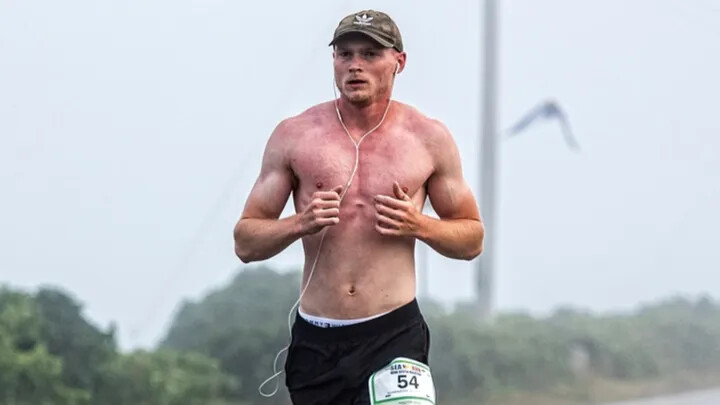
Keeping began his journey on April 1 in St. John’s, intending to end in Victoria within 100 days. He says his goal was not to chase any records, but to meet amazing people, hear the stories of Canadians along the way and raise money for a cause close to his heart.
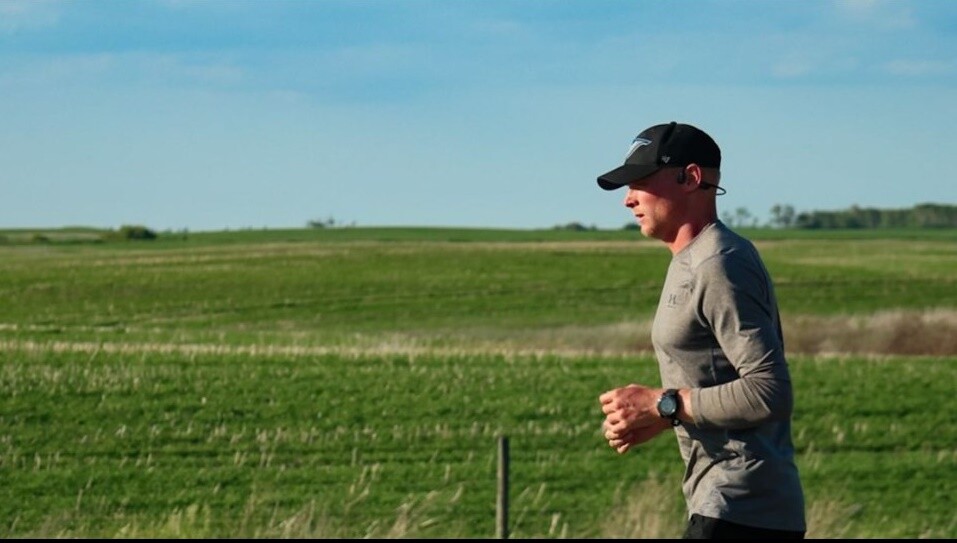
“This wasn’t about a record, a time, or bragging rights,” Keeping wrote about his achievement. “This was about Canada, the children, and the amazing people along the way. The interactions throughout the 99 days changed my life forever, and I thank everyone for that. I am forever grateful for this journey, and I hope we can all take a lesson from this, that anything is possible, whether you’re a couch potato or an athlete.”
Like his hero, Fox, Keeping had a reason for his cross-country run. Several of his family members, including his dad and his grandfather, have been affected by heart disease. Recently, both of his siblings have tested positive for the gene causing heart issues. His decision to run across Canada to raise funds and awareness was to help other families like his, who have been affected by heart disease.
Keeping ran through nine of Canada’s 10 provinces, holding meet-and-greets and running events as he passed major cities: Toronto, Winnipeg, Calgary and Vancouver. He celebrated his finish by pouring a jug of water from the Atlantic into the Pacific Ocean. “It’s what Terry wanted, and I’m happy to say I could honor my run for him,” said Keeping.
(07/08/2024) ⚡AMPby Marley Dickison
Marathon legend Catherine Ndereba finally explains why she retired unconventionally
Ndereba is widley regarded as one of the greatest female marathoners of all time, but she retired quite unceremoniously.
Marathon icon Catherine Ndereba has explained why she decided to retire without a lot of glamor back in 2012.
Known for her unparalleled achievements in the marathon world, Ndereba’s decision to step away from the sport without fanfare was driven by persistent health issues.
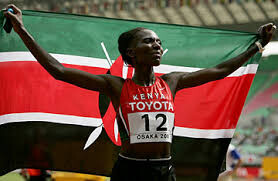
Between 2003 and 2008, Ndereba consistently finished in the top two in five successive global championship marathons.
She twice won the marathon at the World Championships in Athletics and secured silver medals at the Summer Olympic Games in 2004 and 2008, making her Kenya’s first female multi-medalist.

Her accolades also include four Boston Marathon victories and two Chicago Marathon wins. It was at the latter in 2001 that she broke the women’s marathon world record with a time of 2:18:47. In 2008, the Chicago Tribune’s Philip Hersh described her as the greatest women’s marathoner of all time.
Despite these incredible accomplishments, Ndereba chose to retire quietly in 2012. In an interview on the Safari Za Mabingwa show with comedian Obina on KTN News, Ndereba revealed the reasons behind her understated retirement.
“I stopped unceremoniously because I developed some problems. Just like with your car, as you continue driving it, you know it needs service. It may get in an accident or break something,” Ndereba explained.
A problematic ankle, which she had managed throughout her career, became overwhelming towards the end.
“For me, I developed an injury that could not be fixed there and then. It is something that needs a lot of attention. I needed surgery but decided against it. I wanted to heal naturally,” she shared.
Ndereba’s right ankle ligaments were gradually torn over time. “I went to the doctor, who assessed and did all the images, including the MRI that showed exactly what was wrong.”
Despite the possibility of prolonging her career through surgery, Ndereba opted against it. “I did not want to have it. All that time in the hospital? And yet, I could not make a bigger name for myself after what God gave me. I was totally content,” she stated.
Ndereba’s decision to retire without seeking further medical intervention reflects her contentment with her illustrious career. Her legacy as a marathon icon remains intact, celebrated for her remarkable achievements and her graceful exit from the sport.
(07/08/2024) ⚡AMPby Mark Kinyanjui
Timothy Kattam and Yuki Nakamura secured the victory in the Gold Coast Marathon
A diminutive 23-year-old Japanese surprise packet today smashed the ASICS Gold Coast Marathon women’s race record, stunningly in just her second marathon.
Yuki Nakamura came into Sunday’s race at the lower end of the top 10 but turned the form guide upside down with a 2:24:22 run that eclipsed American Lindsay Flanagan’s race record of 2:24:43 set in 2022 by 21 seconds.
It was the third fastest women’s marathon time on Australian soil, the other two fastest achieved by the gold and silver medalists at the Sydney 2000 Olympic Games.
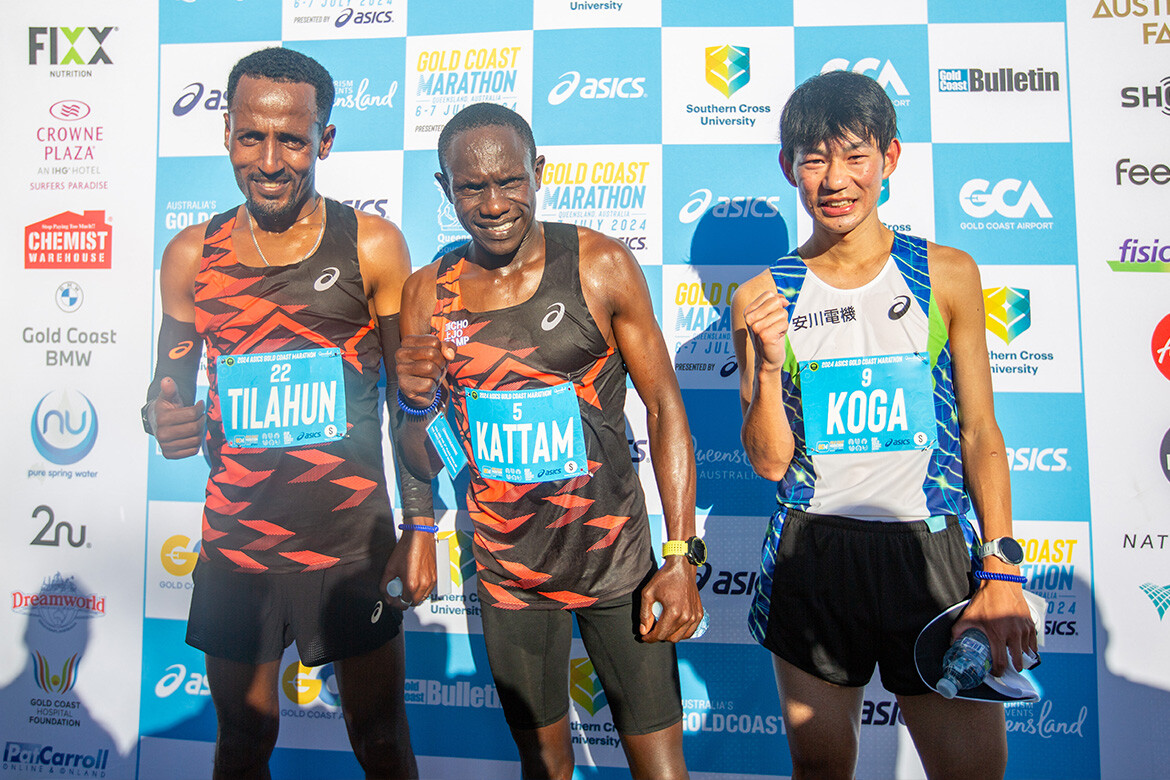
Ethiopia’s Kumeshi Sichala (2:25:25) and pre-race favourite Kenyan Visiline Jepkesho (2:26:17) took the minor placings.
Nakamura’s out-of-a-hat record was achieved on a perfect-for-running Gold Coast morning alongside a record 10,000-plus fellow marathoners who competed on the day.
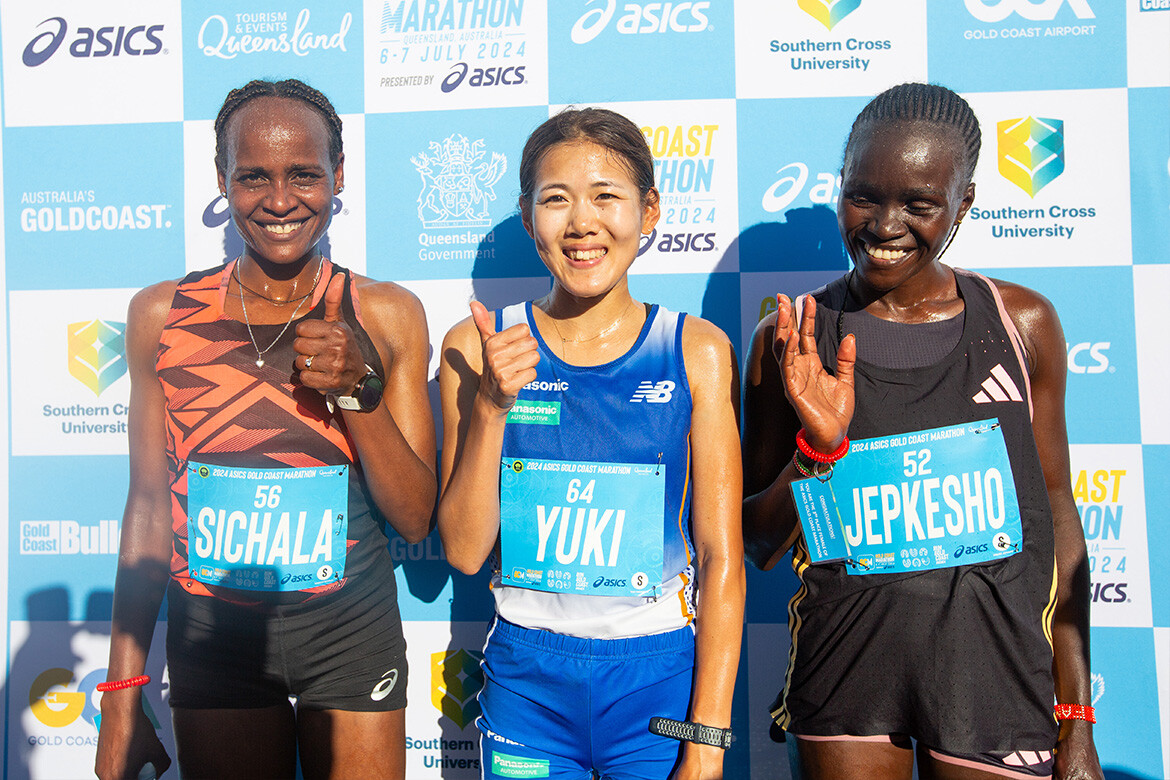
The men’s event was taken by Kenya’s Timothy Kattam in 2:08:52, six seconds ahead of Ethiopian Belay Tilahun (2:08:58) and Japan’s Kiyoshi Koga (2:09:22).
Nakamura said she had a slightly more conservative target time on the start line.
“I was aiming for a 2:26 result, that was my objective, however, to come here and win the race, I am so happy with the result,” she said.
Nakamura said she went with the early pace.
“In the beginning, it was faster than I anticipated but I was feeling great and enjoying the ambiance of the Gold Coast, so I just went for it and then I realised there was nobody else around and I was winning.
“At the 30km mark I wanted to drop off the group, but then it was downhill, so I tried to hang in there and catch up on the speed and when I got to the 35/36km mark it was good and I made my move.
“I have no idea how this feeling is, however later on I will feel the power of standing on the top step of the podium,” she said.
Second place Sichala said she was happy to achieve a personal best at her first ASICS Gold Coast Marathon.
“My race went to plan, it was good, and I am very happy,” she said
“I loved the people cheering along the course and I will come back to the Gold Coast again,” she said.
Jepkesho was happy enough with her debut appearance on the Gold Coast
“It wasn’t my personal best, but I felt good,” she said.
Men’s champion Kattam said he surprised himself with his first run in Australia.
“This is my first time coming to Australia, I am so grateful for today’s race, it was fantastic; I like the course, everything was well, I am very happy for the day. “It was about the win, [and] we were very tight over the ASICS athletes, it was a very tough race.
“[Our team tactics] come out during training and that is what motivates us,” he said.
“The pace was 3:01, 3:02, but then it went to 3:07 and that is when I decided to make a move, to control the speed, “This is a very good season for me; today I wanted to try for a podium, but I didn’t expect to win today’s race and I am very happy, and I am looking to be back in Australia next year,” he said.
Tilahun was happy with his run. “It was a personal best for me, so how can you not be happy with that?”
Third place Koga wanted to do it his way. “The last few races I haven’t done well in the marathon, so I just wanted to run the way it should be and stay steady and this was the result,” he said.
“The winner last year was Japanese, so I was aiming for first place but at least I am on the podium and for that I am grateful.
“Many people were cheering, and it was a really fun and enjoyable run,” he said.
The best Australian in the men’s race was Liam Boudin (2:13:56) who was eighth overall in his debut marathon while Victorian Sarah Klein (2:31:58) was the first Australian woman across the line and fifth overall in the women’s race.
(07/08/2024) ⚡AMPGold Coast Airport Marathon
The Gold Coast Airport Marathon is held annually in one of the most popular holiday destinations in the world. It is Australia’s premier road race and was the first marathon in the country to hold an International Association of Athletics Federations (IAAF) Road Race Gold Label. The event is held on the first weekend of July and attracts more than...
more...Faith Kipyegon shares two reasons behind her record-breaking 1500m display at Paris Diamond League
Kipyegon reveals two reasons behind her record-breaking display at the Paris Diamond League, despite it only being her second race of the season which has been hindered by injuries.
Faith Kipyegon has offered an insight into the factors that have been fueling her seemingly nonchalant ability to dominate races.
Kipyegon, who launched her Diamond League season in Paris on Sunday, took the world by surprise as she shattered her own record in the 1500m, running 3.49.04, some seven microseconds faster than when she broke the record again in Monaco a year ago.
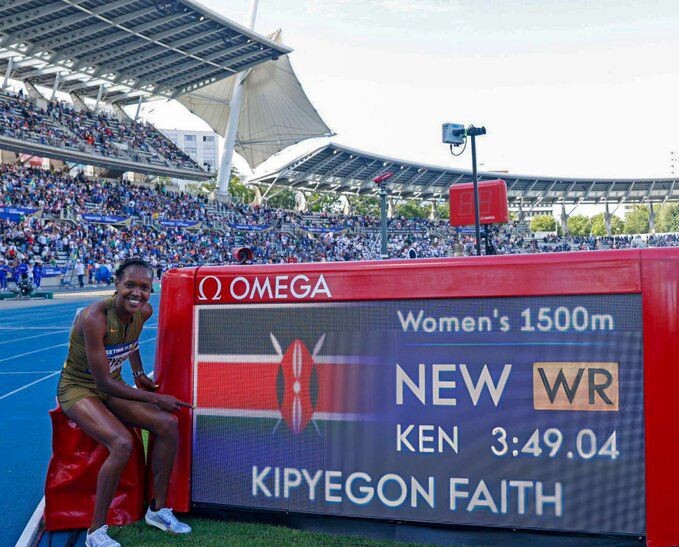
Kipyegon showcased why she is a force to be reckoned with as she eyes a historic third consecutive Olympic gold in the 1500m.
Speaking to Citius Mag, Kipyegon revealed the two crucial factors fueling her dominant display: belief in her training and the competitive push from fellow athletes.
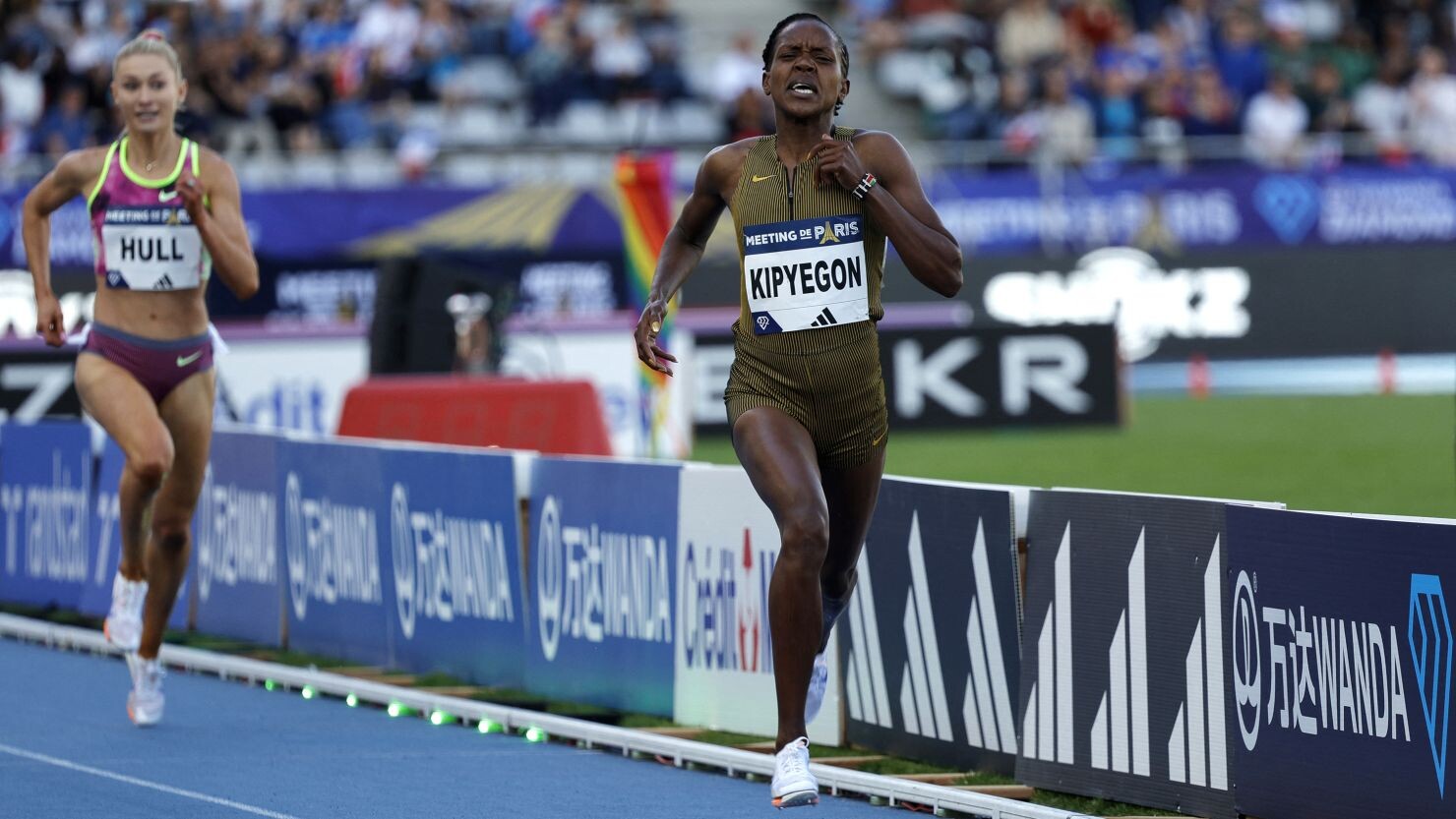
1. Unwavering Belief in Training
Kipyegon attributed her record-breaking performance to her confidence in the rigorous training she underwent. Despite the long absence from the track, her belief in the hard work and preparation was unwavering.
“I think it is all about believing in the training I have done so far. After I asked my coach what was possible in Paris, he told me, ‘Yeah, everything is possible, you never know, the training you have done (could reap reward),” Kipyegon explained.
This confidence propelled her to execute her race strategy flawlessly, leading to her remarkable finish. “I came here and just believed in myself, executed it just to see what was possible. I came here and ran a world record in my first Diamond League classic of the season,” she added.
2. Competitive Push from Jessica Hull
Another significant factor in Kipyegon’s stellar performance was the intense competition from Australian runner Jessica Hull. Hull’s relentless pressure throughout the race kept Kipyegon on her toes, ultimately pushing her to new heights.
Hull's impressive time of 3:50.83 not only set a new Australian record but also became the fifth quickest ever run by a female athlete. Reflecting on the race, Kipyegon expressed her admiration for Hull’s performance.
“I was like, who is following me? But I turned back and saw Jessica Hull behind me. It was really feeling great to push each other towards the finish line. I am really really happy for her,” Kipyegon said.
Hull’s presence and competitiveness provided Kipyegon with the energy and drive needed to break her own world record.
(07/08/2024) ⚡AMPby Mark Kinyanjui
The Western States 100 and Hardrock 100: A Metaphorical Comparison
With the Western States 100 taking place last weekend and Hardrock 100 taking place next weekend, this is the time of year when all ultrarunners look to California and Colorado.
I’ve been privileged to run both of these iconic events, and in recent years, I have traveled to Auburn, California, and Silverton, Colorado, each year to spectate and volunteer. I’ve had the opportunity to observe and experience what makes these events so different from each other and yet, on some level, very much the same.

Vibes
I like to compare the vibes of Hardrock and Western States to rock concerts.
Hardrock is that concert that takes place in a modest venue with a few thousand seats, think the Beacon Theatre in New York City. Think of the last concert you attended that brought you close to the artist and allowed you to interact socially with other concertgoers. That’s Hardrock.
Western States, on the other hand, is the massive stadium show, think Kenny Chesney at Gillette Stadium in Massachusetts. These concerts take on a festival atmosphere and bring thousands of people out long before the concert is scheduled to start. Loud, chaotic, and celebratory, Western States shares the vibe with these large stadium shows.
Track Versus Cross Country
In my previous professional life as a high school principal I attended more than my fair share of track and cross-country meets. Over the years I made some observations that remind me of the difference between Western States and Hardrock.
Track meets are slick and fancy. Track athletes wear crisp kits and sleek shoes. Western States is track.
Cross-country meets are loose and in the woods. Cross-country runners are a ragtag group with unkempt hair and oversized kits. They know how to run they just do it a little differently. Hardrock is cross country.
Pace
Hardrock weekend moves at a pace akin to a small town. Sure, the runners up front need to move fast, and those at the back may feel the pressure of meeting the cutoffs, but by and large, the race moves at a laid-back pace. Runners spend time regrouping at aid stations, volunteers linger to chat and share stories, and race officials and veterans of the event make everyone feel welcome and embraced by the community.
The pace at Western States is more like New York City during rush hour. Intensely competitive at the front of the pack and challenging with tight cutoffs at the back, there is little time for dilly-dallying for anyone. It’s an intense, fast-moving pace, the rewards of which are a shiny belt buckle and big city memories to last a lifetime.
Community
Both events celebrate and embrace community. In fact, they both endeavor to nurture a sense of community in the many activities surrounding their events. Additionally, the phrases “Western States family” and “Hardrock family” are part of the language around each race.
As you might expect, Hardrock is a close-knit family — the kind where many still live in the same area, get together often, and share many common characteristics. The Western States family is a massive extended family that is spread around the world, getting together only occasionally and with disparate goals, attitudes, and temperaments. Both families share common connections but do so in very different ways.
Regardless of their differences in vibes, type of race, pace, and community, both Western States and Hardrock have earned their places on the top step of North American ultrarunning culture. In spite of, or perhaps because of, their unique characteristics, these two events have been able to stand the test of time, doing so in their own unique ways and on their own independent terms. As a result, they continue to be the two of the most sought-after events in American trail running and ultrarunning.
(07/07/2024) ⚡AMP
by I Run Far
Does Running Make You Shorter? The Answer May Surprise You
Experts explain this physiological phenomenon.
Social media and online forums are full of tall tales, but this latest one had us scratching our heads: Some runners swear they’ve shrunk an inch or more because of their workout routine.

Is that claim bogus? Not entirely. Keep reading for the long and short of this quirky physiological question.
Does running make you shorter?
The short answer: Yes, it actually does. Fortunately, though, it’s only for a brief period of time. “It is true that people potentially can lose height when they run,” Todd McGrath, M.D., sports medicine physician at Hospital for Special Surgery in New York City tells Runner’s World. “Middle- and longer-distance runners can experience this, but it’s a slight difference and seems to be very transient.”
How slight? Think less than a centimeter, according to older research.
In the 1990s, researchers measured people before and after they ran six to 10 miles and established that they tended to lose 7 to 8 millimeters of height, Abigail Campbell, M.D., director of NYU Langone Orthopedics Center for Women’s Sports Medicine in NYC tells Runner’s World. “That effect was fairly similar between young and older patients; the older people actually lost less height, which is interesting,” she notes.
Why does running make you shorter?
The exact mechanism responsible for running making you shorter is still unknown, says McGrath, but it’s likely due to temporary volume loss in the intervertebral discs—the spongy, gummy-like pads between each of the vertebrae that make up your spine.
A temporary water loss in these discs was observed after running in several studies part of a new systematic review in the journal Sports Health mentions this phenomenon. “The short-term loss of running seems to be about 6 percent of disc height—though that doesn’t translate to 6 percent of your overall height,” he clarifies. “It’s a very small amount.”
“The bones aren’t changing as you run, but studies have found that the discs themselves can decrease about 3 millimeters total from the load of running,” says Campbell. That effect is most notable in the lumbar spine, a.k.a. your lower back.
Exactly what causes the diminished disc height is up for debate, says McGrath. “It could be compression sort of squeezing the discs or a fluid shift, we don’t really know,” he says. “There’s not great evidence into what the underlying mechanism is.”
What doctors do know: The shortening side effect is super temporary. “It’s been found to basically reverse after a night’s sleep,” says Campbell. The reprieve from gravity that lying down for seven or eight-ish hours is like R&R for your spine, giving the discs a chance to rehydrate and bounce back. That makes sense, notes Campbell: “I’ve been running for 25 years, and I’d be gone if I were truly losing every time I run.”
However, running does affect your height in another, more long-lasting way. “As we age, compression fractures of the vertebrae can happen, especially among older women,” notes Campbell. They aren’t always caused by trauma, such as pounding pavement, but by low bone density. These can cause the vertebrae to go from a nice square to flattened or a wedge—and that’s when people start to get a curved back,” Campbell explains.
Multiple micro compression fractures like these can ultimately decrease your height by possibly an inch or two over a lifetime. While running may have something to do with these injuries, it’s likely more your hormones and genetics. “I haven’t seen any data that unequivocally pairs [running and micro compressions] together. If anything, running should be protective because it does help with bone density throughout the whole body,” says Campbell.
How much do you have to run to get shorter?
This is another detail that’s a little up in the air. “We know the slight decrease in height happens in marathon runners,” says McGrath. But you don’t necessarily need to be pounding the pavement for hours at a time for the effects to be measurable. In fact, young runners lost around six percent of their intervertebral disc height after only 30 minutes of moderate-intensity running, according to a study published in Medicine & Science in Sports & Exercise in 2012.
But again, that’s temporary and in truth, being a longtime long-distance runner may actually be good for your intervertebral discs—and maybe your height—in the long run. Middle-aged endurance runners who averaged more than 50 kilometers per week for 10-plus years showed less age-related decline in their lumbar intervertebral discs than non-runners in a PLoS One study published in 2020. On average, the runners had 20 percent greater disc height than others.
What other activities can cause disc-related changes in your height?
In general, people lose a slight amount of disc height every day whether they’re runners or not, McGrath and Campbell agree. The effect can be more prominent for those who are on their feet a lot throughout the day, adds McGrath, noting that “most people are tallest first thing in the morning.”
Besides running, other sports can have a similar temporary shortening effect. Researchers have also looked at swimming, weight-training, soccer, basketball, says Campbell. “Heavy weight training, running, and basketball were similar, with significantly decreased heights noted after each sport,” probably due to the load-bearing nature of them, she says. “The others didn’t have much of an effect.”
So, should you be concerned about running making you shorter?
In short, no. Running has a ton of great physical benefits, from burning fat and boosting your heart health to improving bone density. This side effect of running isn’t really a negative issue, just a weird thing that happens in our body, says McGrath. “The concerning thing for some people may be whether they’re going to get shorter over the long run from running, and the answer is no.”
You don’t need to hang from a pull-up bar or stretch like crazy to counteract the effect. But strength training or exercise that targets your core in particular is a good, proactive step, say McGrath and Campbell. “Runners tend to focus on running and not always core strength, but strengthening the back and the core is really important to prevent a lot of running-related injuries,” says McGrath. “In general, it’s great for injury prevention, back health, and overall health, too.”
(07/07/2024) ⚡AMPby Runner’s World
Research Confirms Rotating Running Shoes Could Save You From Injuries—Here’s How Your Body Benefits
Having a shoe collection is not a frivolous obsession. Here’s how you could possibly benefit from having more than one pair of running shoes.
Once you’ve found yourself the perfect pair—you know the ones you want to spend every run in—it’s kind of hard to give them up. However, doing so could actually work to your advantage by keeping you healthy and strong for each run.
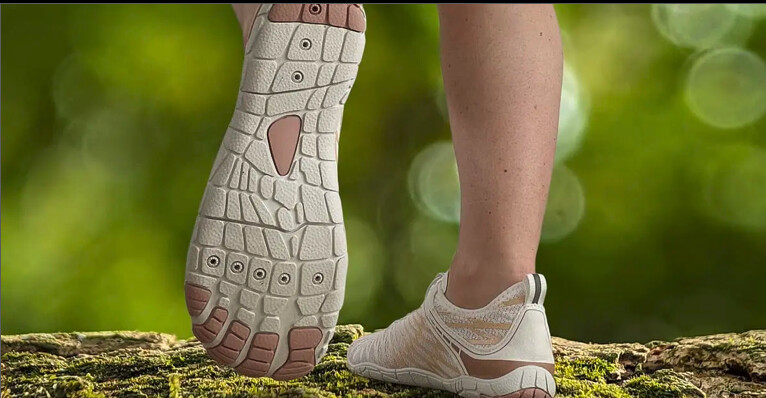
“These days, a lot of people use one shoe for everything, and that puts you at risk for injury,” says Priya Parthasarathy, D.P.M., spokesperson for the American Podiatric Medical Association and partner at USFAS in Silver Springs, Maryland. Running, walking, and weightlifting all require different demands of your feet, so you’ll want to wear different shoes for these activities, she says. Plus, wearing one shoe for all of your workouts can increase the wear on the shoe, so they won’t last as long as you want.
That’s where having a running shoe rotation becomes very helpful. Research and experts back up this idea, and it’s especially helpful to have a shoe rotation if you’re training for a long distance race like a marathon. Here’s what you need to know in order to build a running shoe rotation that meets all of your needs.
Why do you need a running shoe rotation?
Naturally, running places stress on multiple parts of the body, including muscles, bones, and tendons, which can be good for you provided the stress is not too large or frequent that you can’t recover fast enough, says Andrea Myers, D.P.T., who owns a sports performance practice located in Westport and Ridgefield, Connecticut.
”We know from many research studies that different running shoe properties expose the body to different stressors,” Myers says. “We know that minimalist shoes—those with a low or zero drop, flexible sole, and minimal to no stability features—increase the demands on the ankle, foot, and calf muscles, as compared to shoes with a higher drop, which increase the demands at the knee but reduces the demands at the foot and ankle.”
A carefully crafted shoe rotation can possibly offset some of these demands.
To identify characteristics that might contribute to the development of running related injury, a 2013 research study published in the Scandinavian Journal of Medicine and Science in Sport followed 264 runners over the course of 22 weeks. The study found runners who used more than one shoe, a term which they coined “parallel use,” had a 39 percent lower risk of injury. This suggests having more than one pair of running shoes can help you ward off injury.
The reasoning behind it, if you have a cushioned shoe and you let a shoe sit for 24 to 48 hours, the foam in the shoe can de-compress before your next run, says Parthasarathy.
How many shoes do you need in your rotation?
If you’re just starting out, you don’t have to worry about rotating your running shoes, instead, invest in one good pair of running shoes. Parthasarathy recommends finding a shoe with a flexible toe box, firm heel cup, and removable insoles. The one shoe should overall be comfortable to you.
The seasoned recreational runner who runs three to four miles, three days per week, does not need a rotation of four different shoes either, says Myers. Instead, Myers recommends two pairs of shoes that you can rotate every run.
For marathon runners, racking up 35 to 60-plus miles a week with a variety of workouts (easy, long, and speed runs) on their calendars, Myers recommends keeping a shoe rotation of three to four pairs of shoes. This can include one to two pairs of shoes for easy runs and speed workouts, and one pair of shoes for long runs that can handle a variety of different paces. Your long run shoes can also double as a performance trainer, or a lightweight daily trainer, Myers says.
What types of running shoes can you add to your running shoe rotation?
Here are three different types of shoes you can consider adding to your collection, according to Myers:
Daily Trainer: These shoes are primarily for easy running, but can also handle different paces. you can use them to run strides or up-tempo long runs. Good examples of daily trainers include: the Brooks Ghost 15, Saucony Ride 17 or Guide 17, Nike Vomero 17, or Hoka Clifton 9.
Performance Trainer: Best for speed workouts, performance trainers are lightweight shoes that perform best at faster paces and can double as daily trainers as long as you feel comfortable in wearing them for longer distances. Plus, they tend to be more affordable than top-end race performance shoes. A few styles to consider include: Saucony Endorphin Speed 4, Topo Cyclone 2, Mizuno Wave Rebellion Flash 2, and Brooks Hyperion Max.
Racing Shoes: Commonly referred to now as super shoes, racing shoes tend to be more expensive and less durable, considering some shoes have a life expectancy of about 100 to 150 miles. This is why you shouldn’t do the bulk of your training in super shoes, instead you should take them out for a test run or two to ensure they’ll meet all your comfort needs on race day. Saucony Kinvara Pro, Asics Superblast, Adidas Adizero Prime x 2 Strung, and On Cloudeclipse are a few super shoes to consider.
How to find the right shoe to add to your rotation?
Before adding any a shoe to your rotation, you should consider if the shoe is a good fit for your foot arch (flat arch, high arch, or medium arch), running gait (neutral, pronated, or supinated), shoe size, preferred comfort level, and the terrain (treadmill, pavement, or trail) you’ll run on.
“Building a running shoe rotation, especially if you run on different terrains, is important because the shoe wears in different ways,” says Parthasarathy. Meaning where you run will influence some of the characteristics you look for in a shoe. For example, running on hard pavement will require increased cushioning, whereas trail running calls for more stability and traction, she explains.
If you want to change the type of shoe you’re training in, then the recommendation is to ease into the number of miles you try in the new shoe (i.e., don’t go for a long run in a drastically different shoe).
You may experience some soreness if you transition to a different type of shoe, however, you shouldn't experience pain that lasts for days or interferes with your normal running gait pattern on subsequent runs, Myers adds.
Lastly, you’ll want to get rid of your running shoes every so often due to wear and tear that may go unnoticed. ”We recommend you replace your running shoes, especially if you’re doing long distance running every six months or 300 to 500 miles, depending on how hard you are on them,” says Parthasarathy. If you can fold or bend your shoes in half, it’s often an indication the structure of the shoe and cushioning has been broken down, and it’s time for a change, she adds. As mentioned, the new high performance racing shoes tend to have a shorter shelf life when it comes to mileage.
Who should avoid rotating running shoes?
There’s no need to rotate your running shoes if you’re only running a couple of times a week because you’re likely not racking up enough miles to overstress your tissues, says Myers.
Also, don’t rotate running shoes if you have specific biomechanical or orthopedic needs due to injury, foot structure or shape. For example, runners who have arthritis that affects the big toe, a.k.a, hallux limitus, should prioritize running in shoes that can address this condition, which there are few of, Myers says.
(07/07/2024) ⚡AMPby Runner’s World
How to Maintain Your Running Fitness When an Injury Has You Sidelined
Follow this expert advice to avoid losing all those aerobic gains.Whether you’re nursing a serious injury, dealing with a nagging illness, or you’re too swamped with a busy schedule, every runner now and then comes up against a setback that keeps them from their regular pavement-pounding routine. A little time off won’t hurt you (in fact, some R&R might be just what the doctor ordered). But trade in your sneakers for the sofa too long and your fitness will quickly take a nosedive.
While a few factors play into exactly when your fitness declines, like your fitness level before you took time off and whether you stop exercising completely, metabolic changes can happen within just two weeks, Jeff Gaudette, owner and head coach at RunnersConnect tells Runner’s World.In 21 days of no activity, older research has found a 7 percent reduction in VO2 max, a marker of your fitness. That might sound negligible, but it could add minutes to your race times, Gaudette says. Newer research published in 2022 backs this up, saying VO2 max can decline as much as 20 percent after 12 weeks.

But good news: Taking a total break from running doesn’t mean you have to wind up totally out of shape. Keep reading for expert tips about the best ways to cross-train, including the best non-weight-bearing exercises to do to keep up your aerobic fitness when you can’t handle impact. Plus, learn exactly what you should put on your calendar for the weeks you need to take off.
One important note: If you are injured and need to stay off your feet, make sure you get your doctor’s clearance before
Recognize When It’s Time to Take a Break from Running
A lot of times, you can run with various aches and pains as long as you’re giving yourself some TLC as you work through them—though it’s always good to check in with a doctor to be sure it’s safe to keep running. But there are, of course, injuries that require time off.
Stress fractures are the most common injuries that sideline runners for extended periods of time, says Anh Bui, D.P.T., C.S.C.S., a former collegiate runner, physical therapist, and biomechanics specialist in Oakland, California. “The other reason someone may need to take time off is tendon ruptures, usually partial, which can require immobilization or surgery,” she says.
How long you have to take off with any injury will vary. Times even vary with a stress fracture, though you can expect to hang up your running shoes for at least a month and a half. “Time off from running depends on the location of the stress fracture and the severity, which we usually determine with an MRI,” says Bui. Fractures in the tibia (i.e., your shinbone) typically require six to eight weeks of rest, for example, while one in the femoral neck (at the top of your thighbone) takes 12 to 16 weeks of rest to heal. (A stress fracture in the latter is rare, accounting for only 3 percent of sport-related stress fractures, but is most common among long-distance runners, according to a 2017 review from the U.K.)
Whatever time off your doc recommends, you have to stick to it, says Bui: “Run on a stress fracture too soon and you’ll risk delaying and complicating the healing process.”
Figure Out the Type of Non-Weight-Bearing Exercise That Works for You
You might think there’s no cardio quite like running. But many other workouts can keep you in good aerobic shape while also going easy on your joints. “The best activities are going to be the ones that mimic running the most,” says Gaudette.
His number-one pick is aqua jogging if you have access to a pool: It gets your heart rate up, mimics the posture and movements of running on dry land, and is non-weight-bearing. “Your pool-running form is like your regular running form, except you have a little more upright posture and lift your knees a little higher with less back kick,” he notes. If a pool isn’t in the cards, time on the elliptical is a close second (in terms of form).
If your doc nixes all weight-bearing exercise, riding a bike or swimming are also good choices, says Gaudette. Cycling in particular helped improve 3,000-meter running performance and hip extensor strength among high-school runners in a 2018 study in the Journal of Strength and Conditioning Research.
And when deciding what activity to fill your schedule for your weeks without running, it’s also important keep in mind what you enjoy, Gaudette adds: “If getting in the pool is logistically difficult or you hate it, but you love biking, then getting on the bike consistently is the better option.” Just be careful to stay seated on the bike: “Cycling is considered to be non-weight-bearing unless you ride out of the saddle,” adds Bui.Consider this more extension list of non-weight-bearing exercises to determine what’s right for you when you can’t run:
Aqua jogging
Cycling
Swimming
Rowing
Seated exercises
How to Schedule Cross-Training to Maintain Your Fitness
Look at the calendar and pencil in the runs you’d normally be doing—noting mileage or time, intensity (whether it’s an easy run or sprint workout, for instance). Then go back over the days and mark in what activity you’ll do in place of the run, aiming to move for the same amount of time you would’ve spent on your feet and hitting the same effort level.
“So, if you run for an hour four days per week and one of those sessions is a harder workout/effort, I’d do the same with your cross training,” advises Gaudette. “Most people should be able to jump into this on week one.”
If you tend to gauge your effort by heart rate, it’s okay to keep that up—but it can be a little tricky because your heart rate can differ depending on the type of exercise you’re doing, says Gaudette. “In the pool, your heart rate is lower due to the water, and on the bike it can be harder to get your heart rate up because you’re not using your arms,” he explains. “RPE works just as well and is easier to adjust to different situations.”
Consider the Importance of Strength Building
You’ll want to add in a couple strength sessions per week, though you might need to take a couple weeks off before you do so; make sure to talk with your PT or doc about when you can start and what exercises to include, says Bui. A physical therapist should offer up moves to help you rehab that you can regularly include in your routine. Keep in mind that if you need to do non-weight-bearing exercises that would include only moves you perform while sitting or lying down.
If you have an injury like a stress fracture, consulting with your medical team is important because “the type of strength exercise you should do depends on the location and severity of your fracture—for instance, squats are not advised for someone on crutches recovering from a femoral neck stress fracture but can be okay for someone with a stable tibial stress fracture,” says Bui. (In any case, it’s best to work with a PT for any type of fracture.)
Working in some plyometrics the last couple weeks before you plan to run again is also a good idea, Bui adds, because it preps your body for the impact of running. But don’t do plyometrics before getting clearance from your doctor.
Bui also recommends scheduling time for mobility work. “Maintaining range of motion is extremely important when you have to be non-weight-bearing,” she explains—especially if you’re using crutches or a boot, which can cause joints to stiffen and muscles to atrophy. Talk with your PT for mobility drills and schedule a little time to work on them daily.
(07/07/2024) ⚡AMP
by Runner’s World
Gudaf Tsegay, Lamecha Girma head Ethiopia's 43-athlete squad to battle Kenya in Paris Olympics
In the 2021 Tokyo Olympics, Kenya bested Ethiopia as the top African nation, finishing 19th overall with 10 athletics medals.
World record-holders Gudaf Tsegay and Lamecha Girma are set to lead a formidable Ethiopian squad of 43 athletes at the upcoming Paris Olympic Games.
The robust team comprising top-tier talent across various track and field events promises to offer fierce competition to their long-time rivals Kenya in the race for Olympic medals.
Tsegay will be competing in the 10,000 meters, 5,000 meters, and 1,500 meters events.
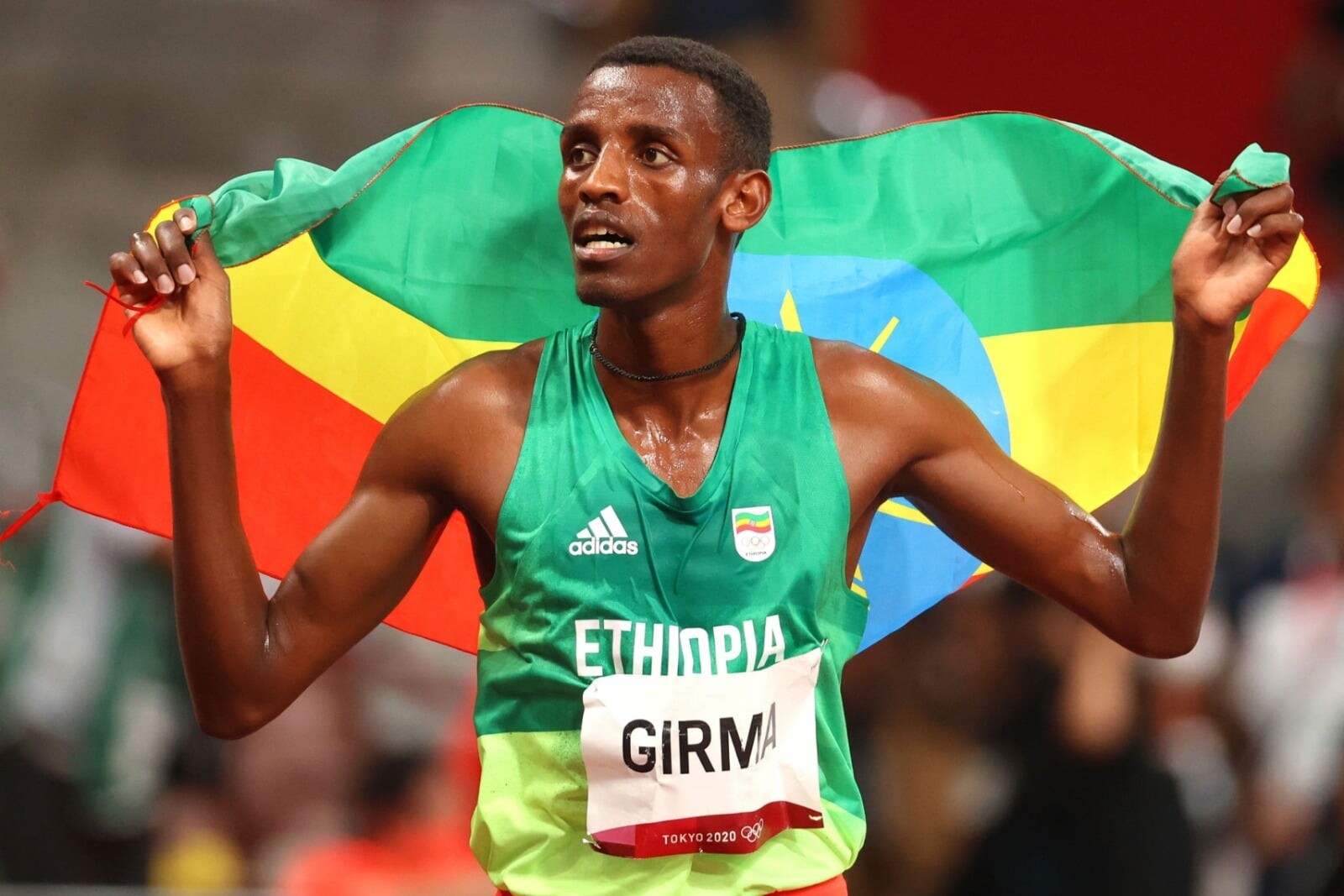
The 27-year-old athlete's standout performance at the Prefontaine Classic, where she shattered the world record in the 5,000 meters with an astounding time of 14:00.21, means she will be challenging rival Kenya's Faith Kipyegon who will chase two gold medals after winning the 1500m and 5000m.
The women's team also boasts an impressive lineup in the 800 meters, featuring Tsige Duguma, Habitam Alemu, and Werknesh Mesele, with Nigist Getachew as the reserve.
In the 1,500 meters, Tsegay will be joined by Birke Haylom and Diribe Wolteji, with Hirut Meshesha on standby. Medina Eisa and Ejgayehu Taye will support Tsegay in the 5,000 meters, with Freweyni Hailu as reserve, while Fotyen Tesfay, Tsigie Gebreselama, and Aynadis Mebratu will compete in the 10,000 meters.
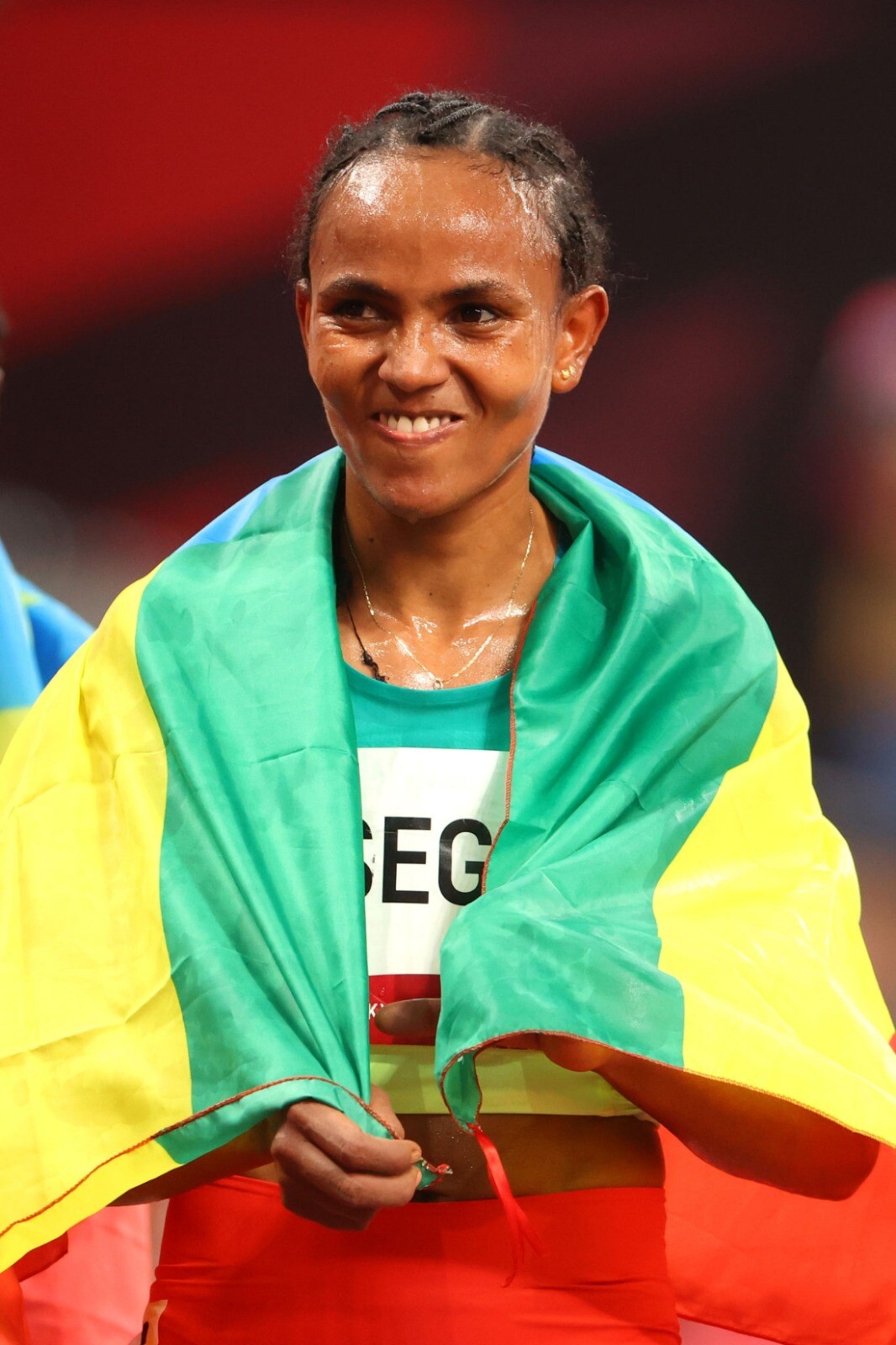
The 3,000 meters steeplechase will see Sembo Almayew and Lomi Muleta in action, and the marathon team includes Tigst Assefa, Amane Beriso, and Megertu Alemu, with Gotytom Gebreslase as reserve.
On the men's side, the team is equally impressive as Abdisa Fayisa, Samuel Tefera, and Ermias Girma will compete in the 1,500 meters.
The 5,000 meters team includes Hagos Gebrhiwet, Yomif Kejelcha, and Addisu Yihune, with Selemon Barega as reserve.
Kejelcha will also contest the 10,000 meters alongside Berihu Aregawi and Biniam Mehari, with Barega again as a reserve.
Lamecha Girma, alongside Samuel Firewu and Getnet Wale, will vie for victory in the men's 3,000 meters steeplechase, with Abrham Sime as reserve.
Ethiopia team to Paris
Women
800 meters: Tsige Duguma, Habitam Alemu, Werknesh Mesele, Nigist Getachew (Reserve)
1500 meters: Gudaf Tsegay, Birke Haylom, Diribe Wolteji, Hirut Meshesha (Reserve)
5000 meters: Gudaf Tsegay, Medina Eisa, Ejgayehu Taye, Freweyni Hailu (Reserve)
10,000 meters: Gudaf Tsegay, Fotyen Tesfay, Tsigie Gebreselama, Aynadis Mebratu (Reserve)
3000 meters Steeplechase: Sembo Almayew, Lomi Muleta
Marathon:Tigst Assefa, Amane Beriso, Megertu Alemu, Gotytom Gebreslase (Reserve)
Men
1500 meters: Abdisa Fayisa, Samuel Tefera, Ermias Girma, Teddese Lemi (Reserve)
5000 meters: Hagos Gebrhiwet, Yomif Kejelcha, Addisu Yihune, Selemon Barega (Reserve)
10,000 meters: Yomif Kejelcha, Berihu Aregawi, Selemon Barega, Biniam Mehari (Reserve)
Men's 3000 meters steeplechase: Lamecha Girma, Samuel Firewu, Getnet Wale, Abrham Sime (Reserve)
Marathon: Sisay Lemma, Deresa Geleta, Kenenisa Bekele, Tamirat Tola (Reserve)
20 km Race walk: Misgana Wakuma
(07/06/2024) ⚡AMPby Festus Chuma
Paris 2024 Olympic Games
For this historic event, the City of Light is thinking big! Visitors will be able to watch events at top sporting venues in Paris and the Paris region, as well as at emblematic monuments in the capital visited by several millions of tourists each year. The promise of exceptional moments to experience in an exceptional setting! A great way to...
more...Five reasons why athletes engage in doping activities
This article provides a comprehensive list of 5 pre-disposing factors as to why athletes engage in doping.
Kenyan athletes have always placed Kenya on the world map with their impeccable performances but it is usually not an easy way to the top.
Some athletes are always forced to take the easier route to the top, fueled by different challenges in their lives. Doping has been a crisis in Kenya in the past few years but the Anti-doping Agency of Kenya is slowly changing the narrative and ensuring athletes run clean and fair.

Speaking during the Sports Journalists Association of Kenya (SJAK) Anti -Doping Seminar, Dr. Martin Sisa outlined the pre-disposing factors that force athletes to take the wrong route and engage in doping.
1) Financial reasons

Most of the athletes come from humble backgrounds and they believe the easy way out would be through athletics. However, most of the successful athletes would admit that success does not come in one day.
Some have had to work for years before their breakthrough, but some of the athletes, especially upcoming, want to have quick riches and one way of achieving the goal is through doping. Some athletes engage in the heinous activity to get good results and in turn get sponsors and publicity.
2) Physiological reasons
Physiological reasons also contribute to why most athletes engage in the heinous activity. Some athletes may be looking to change the outlook of their bodies and work on their physiological aspects for the short term.
According to research on the physiological implications of doping in sports, some short-term responses the body include an increased heart rate, the redistribution of blood flow, the transporting of oxygen to the active muscles, and removing of waste products such as carbon dioxide from the body maintaining body temperature, and regulating hormones.
These responses enhance the body’s ability to cope with the immediate demands of the current exercise bout. However, the kind of doping that changes physiological aspects of an athlete has long-term negative effects that include heart failure, heart attack, arrhythmia, stroke and even death.
3) Governance issues
Poor governance of an athlete is also a root cause of doping. Whenever an athlete has a poor management wit malicious goals, he/she might be forced to dope, either knowingly or unknowingly. When athletes select a management, it is necessary to do a background check and understand all the important information before making the bold step.
4) Individual interests
Other athletes are driven to dope by their individual interests. Different athletes have different goals and not all are able to achieve the goals set within the specific time.
This may force them to engage in doping, to ensure they beat their deadlines and meet their needs either financially, psychologically or emotionally.
5) Hunger to win immediately
Cultural reasons may also push an athlete into finding himself/herself on the wrong side of the law. The culture in most sports is usually centered on winning, driven by the pressure from fans and external factors.
An athlete might also want to achieve a lot in a short span of time and this may lead to them engaging in doping activities almost any cost.
(07/06/2024) ⚡AMPby Abigael Wafula
Why does humidity makes running harder?
If you’re heading out for an easy run in muggy weather and your heart rate is skyrocketing, don’t blame your fitness level. External factors like temperature and humidity are most likely impacting your running efficiency and performance.
Humidity, in particular, plays a crucial role in affecting your heart rate and perceived effort. Understanding how humidity influences your running can be essential for optimizing your training and making the most of running in hot, humid conditions.

Understanding humidity
Humidity is the amount of moisture (water vapour) in the air. When levels are high, the air is saturated with water vapour, making it harder for sweat to evaporate during exercise. This evaporation process is essential for regulating body temperature and optimizing performance. When sweat cannot evaporate efficiently, your body struggles to cool down, and your core temperature remains elevated. This means your heart has to work harder, pumping more blood to the skin’s surface to facilitate cooling through sweat evaporation.
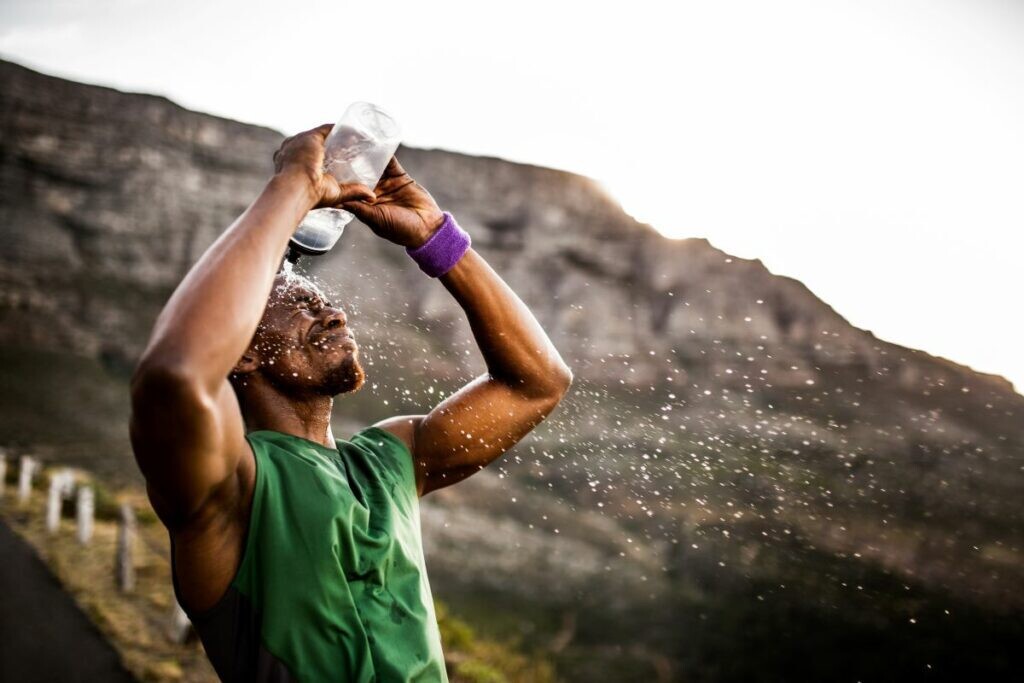
This increased workload on the heart results in an elevated heart rate, even if your running pace remains unchanged. In other words, your heart has to beat faster to maintain adequate blood flow and temperature regulation, making running in high humidity more challenging.
Impact on running
It’s normal for your heart rate to be higher when you’re running in heat and humidity, but this can make running feel more strenuous and mean you feel fatigued earlier. If you’re training for a half-marathon or marathon and heading out for long runs in humid conditions, you might experience a phenomenon known as cardiac drift. This occurs when your heart rate gradually increases over the duration of a long run, even if your pace remains constant, making the effort feel harder over time.
To combat cardiac drift, start your runs well hydrated, and carry water with you. It’s also wise to avoid running too far from home, in case you run out of water. Many experienced marathoners tackle this by doing their long runs on a three- to five-kilometre loop, where they can set up a water station or access a water fountain. This ensures they have consistent access to water and can effectively manage their hydration.
Tips for managing humidity
Try to run during cooler times of the day, such as early morning or after sundown, when humidity levels are lower. Drink water during your run and wear cool, light, moisture-wicking clothing to help regulate your body temperature. If your heart rate remains elevated, consider slowing down the pace to allow your body to adapt to conditions. Training smart in humidity can pay dividends for fall road races.
Another approach is to leave the heart rate monitor behind and run by feel. These devices can sometimes do more harm than good by making you overly focused on numbers instead of tuning in to your body’s signals. Learn to listen to your body and pay attention to how you feel during your run. If you experience dizziness, nausea or excessive fatigue, stop running and seek water and a cooler (shaded) environment to recover.
By understanding how humidity affects your body and taking appropriate precautions, you can continue to enjoy the benefits of running while minimizing potential risks.
(07/06/2024) ⚡AMPby Marley Dickison
All the Benefits You Gain from Walking, Even if You Don’t Hit 10,000 Steps
Putting one foot in front of the other can help you live a healthier, happier life.
In the age of biohacking and complicated training protocols, it’s a good idea to periodically circle back to basics and remind yourself that exercise doesn’t need to be complicated to be effective. Sometimes, the best type of movement is the simplest, and it doesn’t get simpler than walking.

Yes, walking—the same physical activity you’ve been performing since toddlerhood. Back then, putting one foot in front of the other and moving your body from point A to point B was a thrill. Truthfully, you may never fully tap into that feeling of unencumbered freedom or primal joy again. Nevertheless, understanding the physical and mental health benefits of walking may inspire you to up your daily step count or squeeze in a quick stroll after dinner.
To convince you to do just that, we looked at the research and chatted with health and fitness experts for their thoughts on the benefits of walking. The next time you bump up against some confusing health advice or feel too overwhelmed to work out, consult this list. Then go for a walk.
1. Blood Sugar Stabilization
Consistently, research has shown that even a leisurely 10-minute stroll after dinner can help regulate blood sugar levels.
“The food that you eat is broken down in the stomach. Some of that gets broken down into different simple sugars and then sent to the bloodstream, and then that can be utilized in the muscles,” Todd Buckingham, Ph.D., exercise physiologist at PTSportsPRO in Grand Rapids, Michigan, tells Runner’s World. “Walking can help stabilize the blood sugar levels and not get that spike immediately after eating because the muscles are being activated and are going to uptake blood glucose.”
While even slow walking will do the trick, there is some evidence that picking up your pace may further mitigate the risks of type 2 diabetes. The findings of a systematic review published in the British Journal of Sports Medicine suggest that the faster you walk, the greater the benefits. According to the included studies, frequently walking at a casual pace (less than two miles per hour) was associated with a disease risk reduction of around 15 percent. A faster “brisk” pace of between three and four miles per hour was associated with a 24 percent lower risk, and an even quicker pace was linked to a 39 percent risk reduction.
2. Better Sleep
Walking, a low-impact exercise you can do daily, is “the single best way to improve sleep quality,” Michael Breus, Ph.D, clinical psychologist, sleep medicine expert, and founder of The Sleep Doctor, tells Runner’s World.
In simple terms, walking tires the body and increases the naturally increasing pressure to sleep throughout the day. Research shows that physical activity also increases melatonin, a sleep-promoting hormone, regulates body temperature, and can help reduce stress, which can negatively affect sleep.
If you’re having trouble falling asleep, Dixon recommends swapping your before-bed scroll sessions for an evening stroll at dusk. “Walking at night can be especially helpful when it comes to falling asleep. Natural light and avoiding screen time tell your body that it’s time to wind down,” he says.
3. Healthy Weight Maintenance
“The amount of calories burned while walking depends on the speed and distance, but any amount of calories burned can help with your goal of maintaining or losing weight,” William Dixon, M.D., co-founder of Signos and Clinical Assistant Professor at Stanford School of Medicine tells Runner’s World
In one study published in the Journal of Exercise Nutrition and Biochemistry, clinically obese women who participated in a 12-week walking program (50 to 70 minutes of moderately intense walking three days a week) lost abdominal fat and showed improvements in their fasting glucose levels. Members of the control group, all of whom maintained a sedentary lifestyle, exhibited no significant changes.
4. Stress Relief and Mood Regulation
There are reasons why taking a walk to “clear your head” actually works. “Walking can help with emotional regulation,” Craig Kain, Ph.D., a psychologist and psychotherapist based in Long Beach, California tells Runner’s World. “At times, our feelings get the best of us, and we find ourselves off-balance emotionally. Walking can increase levels of two neurotransmitters, dopamine, the ‘happy hormone,’ and decrease levels of cortisol, the ‘stress hormone,’ restoring our brains to a state of equilibrium.”
Kain notes that a regular walking routine can provide over-stimulated people a “time-out” for quiet self-reflection or allow isolated individuals to connect with others in their community. “A client of mine was depressed and housebound after COVID. Walking helped them gain confidence and a sense that they fit into the world again,” Kain says. “By just walking through their neighborhood, they began to feel less fear of other people. They loved dogs and began to say hello to the dogs and owners they saw along the way. Soon, their depression began to lift, and they looked forward to their walks, which became a daily practice, and [it inspired] the feeling of belonging in society.”
5. Reduced Risk of Dementia
Some research shows that getting in your daily steps—right under 10,000 is ideal—is associated with a reduced risk of dementia. But even less than half that amount could make a positive effect, according to a study published in the Journal of Alzheimer’s Disease.
The authors of the cross-sectional study found that participants who walked at least 4,000 steps a day exhibited better cognitive functioning and had thicker medial temporal lobes (a part of the brain associated with memory) than individuals who accumulated fewer steps. Exactly how physical activity influences brain health isn’t entirely clear, but the authors suggest that the theory of “adaptive capacity model” may be at play.
“This model suggests that during aging, the brain responds adaptively by diminishing capacity so as to reduce energy costs, leading to age-related regional brain atrophy and associated function,” they write. “Engaging exercise in late life can adaptively increase capacity, thus reducing the impacts of cognitive aging.”
“As a therapist who is very aware of the toll dementia takes on individuals, families, and extended families, 4,000 steps seems one of the best preventative mental health actions one can take,” Kain says.
6. Boosted Recovery
While walking is accessible, beginner-friendly, and appropriate for older adults, it can also benefit athletes and individuals who enjoy intense exercise.
“Personally, I like to use walking as a recovery tool,” Buckingham says. He explains that walking helps facilitate blood flow, which can help clear the byproducts of a tough workout and promote the repair of damaged muscle fibers. Walking can also help reduce postworkout swelling.
Dixon notes that some avid exercisers, especially those who prefer high-intensity activities, are often inactive (or even sedentary) during the other 23 hours when they’re not in the gym. “Walking is an easy way to increase your exercise when you might be too tired for another tough workout,” he says.
7. Inspiration to Move More
In and of itself, walking is an excellent use of your time, as evidenced by all the aforementioned benefits. But you may find that consistently hitting your daily step target leads to setting (and conquering) even more ambitious goals.
“I think one of the biggest [benefits of walking] is that it just gets people used to committing to physical activity,” Dixon says. “Often this encourages them to choose behaviors we know are healthy in other aspects, like sleeping more and making healthier diet choices.”
8. Easy to Stay Consistent
Compared to other types of exercise, walking has very few barriers to entry. It doesn’t require an expensive gym membership or sports equipment. You don’t need any special skills or training, and even those new to exercise or navigating health challenges can usually walk. “It’s low-impact, so you’re not going to get stress on the knees, ankle, and other joints that you might with running,” Buckingham says.
To get started with walking, all you really need is a pair of comfortable shoes. “Heck, you don’t even need a pair of shoes. You can walk around barefoot. Go for a walk on the beach,” Buckingham says. New walkers can start with a leisurely walk around the block and gradually add distance or pick up the pace.
Finally, unlike other workouts, you can easily incorporate walks throughout your day—every walk doesn’t have to feel like a workout. You can walk while you take a phone call or during a lunch break. If you don’t have time for one 30-minute walk, you can split it up into two 15-minute walks or three 10-minute walk breaks.
With a little planning, walking can become part of how you connect with friends, family, or pets. “I take my dog for a walk around the block, and we go for a walk around the block with family after dinner just to talk and get outside,” Buckingham says.
(07/06/2024) ⚡AMPTraining Load Helps You Find the Balance Between Under and Overtraining—Here’s How to Measure It
Most wearables track this metric, but it goes beyond simply paying attention to stats.
When it comes to running these days, wearables have become a part of the “uniform.” If you sift through race photos, you’ll probably see both recreational and professional runners looking down at their smartwatches at the finish line rather than glancing up to smile at the camera.
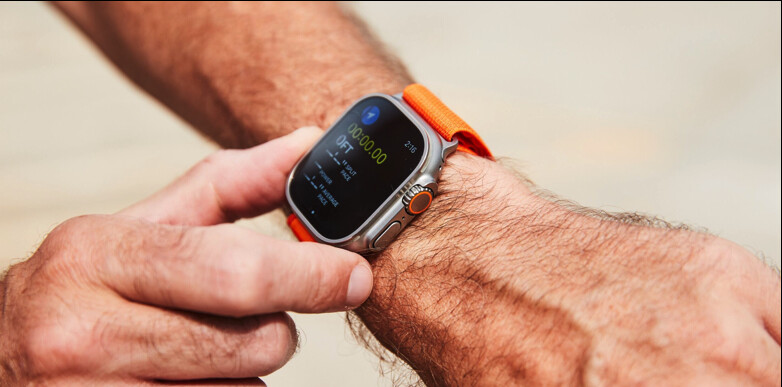
While most smartwatches capture basic metrics such as activity duration, heart rate, pace, and time, not all can measure the physiological effect of workouts over time or what’s known as “training load.” But with the new Apple training load feature, watchOS 11 will join the ranks of Garmin, Coros, and Polar and start providing insights into this metric.
So, if you’re considering buying a smartwatch—or you just want to better track your training and your progress—let’s learn about what training load is and how it can help or hinder your running.
What is training load?
Researchers of a scientific review published in Sports Medicine in 2017 define training load as the stress an athlete experiences after completing physical activities over a certain duration, most often a week. Another way to think about it is how hard you are physically working over time.
Training load is comprised of both an internal and external load. Internal load refers to the physiological and psychological effects of exercise on the body such as heart rate and rate of perceived exertion during exercise. The higher the heart rate or the harder a workout feels, the greater the internal load. External load refers to quantification of the work completed, such as pace and distance.
Sara Manderscheid, RRCA-certified endurance run coach and founder of Elevate Your Running, describes training load as the amount of stress that flows through the body in a training session or training season. “Every day is going to be different,” she says, referring to both the physical and psychological workload an athlete feels with both easy and challenging workouts.
Ric Rojas, head coach of Ric Rojas Running and coach with RISE Running in Boulder, Colorado—and father of pro runner Nell Rojas—highlights that both volume and intensity play roles in understanding an athlete’s perceived exertion. And that perception of exertion helps him determine whether training load is too high or too low. “Language and body language are the most important indices [of training load] that I use on a day-to-day basis,” he explains.
How do wearables measure training load?
Metrics used to estimate training load tend to differ among brands. For example, Garmin uses heart rate to estimate excess post-exercise oxygen consumption (EPOC), the amount of oxygen your body uses to return to homeostasis—a rested, refueled, and recovered state after a workout.
In general, EPOC accumulation is higher for more intense workouts and lower for easy efforts. EPOC measurements over a seven-day period equal your training load for the week. So, the higher your EPOC measurements, the higher your weekly training load.
Both Coros and Polar use training impulse (TRIMP) to estimate training load. TRIMP uses heart rate and workout duration to estimate effort during a workout with higher heart rates presumably reflecting higher efforts and higher TRIMP. Unlike EPOC, TRIMP may not be as reliable in estimating training load for strength training sessions, because it relies on metrics acquired during a workout rather than after.
Unlike Garmin, Coros, and Polar, Apple’s watchOS 11 will not provide a numeric value for training load. Instead, training load will be derived from workout duration and effort scores based upon a rate of perceived exertion scale from 1 to 10 with 1 equating to easy effort and 10 meaning an all-out effort. These scores can be generated automatically for 17 different workout types using an algorithm that incorporates age, height, weight, and performance metrics like GPS data, heart rate, and elevation. Scores can also be self-reported for any workout, a feature that distinguishes watchOS 11 from the rest of the pack.
After 28 days, the watchOS 11 algorithm establishes a training load baseline, and uses it to compare your training load over a seven-day period. The goal is to keep your seven-day training load or estimation of effort close to your 28-day baseline.
Can I use training load to build my workouts?
You certainly can! Many wearables prompt users with recommended workouts to help maintain training within an optimal load. Visual cues and graphics can also help users identify when fitness and fatigue are not balanced, which is an issue because too much fatigue can lead to overtraining, whereas workouts that may not be as challenging may hinder the ability to improve fitness.
Rojas uses heart rate data, pace, perception, recovery, and overall distance in a workout to generate the next workout (or workouts) and avoid overtraining. “I have to keep you healthy,” he comments. “I maintain an optimal training level to allow you to work out again without missing any time.”
To ensure balance in both training and recovery, Rojas also prioritizes an athlete’s perception of their effort during a workout. He will have athletes repeat the same workout every four weeks and evaluate how they felt at the prescribed paces. If the workout feels easier with time, they are likely building fitness. This should also correlate with heart rate: As you become more fit, your heart rate will get lower at the same pace—proof that “the training is taking you to the next level,” he says.
Manderscheid also uses perception more than the numbers, stating that communication is one of the best tools coaches have. “I feel that the mind is such a huge piece to training as a whole,” she says. She also emphasizes that it’s a fine balance of ensuring you do enough to gain fitness but don’t go overboard and set yourself up for injury.
Following Rojas’s and Manderscheid’s advice, you can use training load to schedule your own workouts by paying attention to effort and/or heart rate throughout a workout and throughout your week as a whole. You want a majority of easy efforts (RPE around 5 or 6 and heart rate around 60 to 70 percent) and a few harder efforts, like tempos or interval runs, mixed into your weekly schedule.
Keep in mind, if your typical paces start to feel hard or spike your heart rate, it could be an indication to lower your training load by taking an extra rest day or swapping a tempo run for an easy run. And if your typical paces start to feel too easy, it could mean you can increase your training load by adding more miles, faster paces, or another day of easy running.
Are there any downsides to tracking training load?
Metrics based upon algorithms have their pitfalls and training load is no different. Heart rate is one of the primary determinants of training load so anything that affects your resting heart rate (stress, sleep, etc.) can also influence training load.
Apple’s training load is also dependent on an effort rating system comparing seven-day training load to a 28-day baseline. So, if you rate a tough workout as a very easy effort, your watch will assume you are training below your baseline training load, which may prompt you to increase your effort. If you continue to rate hard efforts as easy, you may set yourself up for insufficient recovery, overtraining, and injury (especially if the workouts weren’t truly easy).
On the flip side, if you rate easy workouts as feeling hard, your watch will suggest you are training above your baseline, prompting you to decrease effort. As a result, you may not see fitness gains, because without a sufficient physiologic stimulus, you’ll likely plateau or lose fitness.
Both Manderscheid and Rojas note that there is incredible potential for over and undertraining when following training load on wearables in isolation for your workouts and progress tracking.
Manderscheid says training load is “one piece of the puzzle,” noting that it is easy for athletes to get bogged down in the analytics of their watch. “Can we stop, pause, and listen to our bodies? If we can connect a little bit more to that mind-body side of things, we are going to be stronger athletes,” she says.
What if you don’t have a wearable? How can you track training load?
If you don’t have a wearable, you don’t need to run out and get one; most of these devices are not cheap. Perceived effort—similar to what the Apple Vitals app is using to generate training load—is a free, easy, and reliable way to determine whether your workout is too easy, too hard, or just right.
Remember: You want a mix of both easy days and hard days on your calendar, without tipping too far in one direction. Both Rojas and Manderschied advise running easy efforts most days and incorporating harder efforts or intensities twice a week as a general guideline.
Manderscheid suggests going a step further than just mentally noting efforts and writing down how you felt at a particular workout. “At the end of the week, take a look, how did you feel: Did you feel good, strong, or terrible? Monitor that. Play around with it and experiment,” she explains.
Numbers are just a part of the puzzle in terms of how you can progress. “Keep the long view in mind,” Rojas says. Patience and perception work together to generate resilient, recovered runners capable of stacking training cycles. You can certainly be one of them, as long as you listen to your body—not just your watch—when it comes to your workout efforts and not going too hard or too easy all the time.
(07/06/2024) ⚡AMPby Runner’s World
Olympic heartbreak: Sweden’s difficult selection policy bars top athletes
Swedish middle-distance runner Yolanda Ngarambe thought she’d done everything she could to qualify for Paris 2024 in the women’s 1,500m. She won her country’s national championship and was ranked inside the top 35 in the world in her event, yet the Swedish Olympic Committee (SOK) decided not to select her; this marks her second consecutive Olympic snub.
Ngarambe isn’t the only Swedish athlete frustrated with the country’s selection policy, which differs from the World Athletics policy. There are several others, including 3,000m steeplechasers Simon Sundström and Emil Blomberg, who both sat in qualification spots via the World Athletics rankings but were passed over for selection.
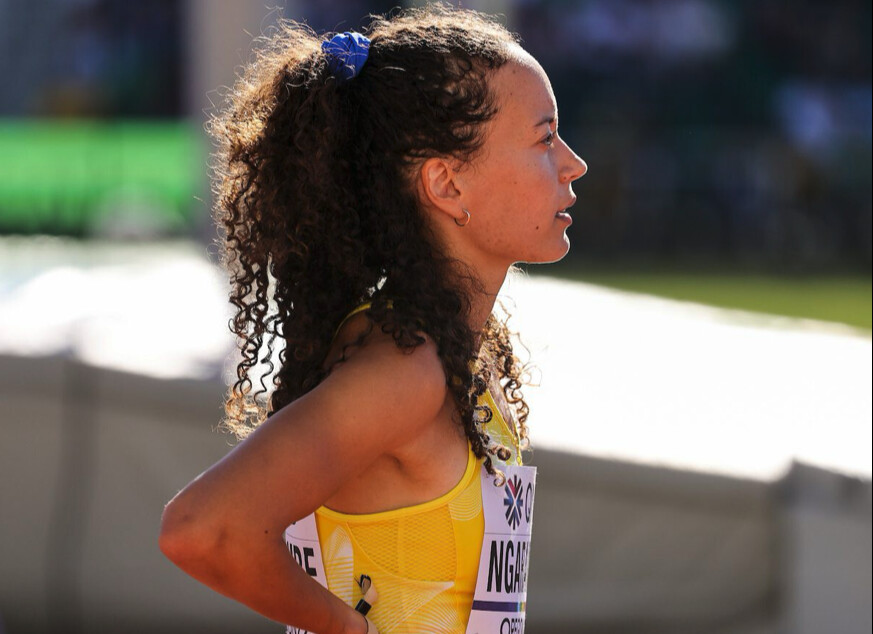

“This will be my second time qualifying for the Olympics and my second time being denied selection by the Swedish Olympic Committee,” Ngarambe wrote. “I ran the Olympic standard for Tokyo 2020 and qualified via the rankings for Paris. Make it make sense.”
How Olympic selection works
For Paris 2024, World Athletics introduced a new selection policy with 50 percent of qualification places based on achieving the entry standard for an event within the qualification period (July 1, 2023, to June 30, 2024) and the other 50 percent based on the World Athletics rankings.
World Athletics’ qualification policy is a strict standard that all countries must follow, but some nations have implemented their own rules to ensure they are only sending athletes who are a threat to reach a final or contend for a medal.
According to Sveriges Friidrottsförbundet, for an athlete to be considered for Olympic selection, they must have achieved a top 12 result at a major championship (i.e., Olympic Games, World Championship or European Championship). Bigger meets, such as the Tokyo Olympics or World Athletics Championships, carry more weight. Even athletes who don’t meet these exact quotas may be selected if they have multiple results within a certain performance range, especially those close to the qualifying limit.
Sweden currently has only three female athletes competing in track events, plus a small track and field team of 22 athletes. (Canada is sending a team of 48.)
Ngarambe’s case
In Ngarambe’s case, the women’s 1,500m event had a strict performance requirement set by the SOK, between 4:02.53 and 4:04.33. Her season’s best of 4:05.19 stands outside the nomination range, so despite having a top-10 finish at the 2024 European Championships in Rome, she was not selectable under their criteria.
Sweden isn’t the only country that has implemented tougher qualifying standards. UK Athletics has been criticized for adopting the same “Olympic final or bust” selection expectation, which several athletes have spoken out against, saying it’s killing the sport of track and field in the U.K.
UK Athletics chief executive Jack Buckner criticized the organization’s former qualification marks, calling them “too soft” for the 2019 World Championships and 2020 Olympic Games. In an effort to increase Great Britain’s medal haul, UK Athletics has moved away from sending bigger squads and focused solely on the country’s best track and field stars. “You need to really focus on the big hitters,” said Bucker when questioned about the more difficult standards last year. “We could have a list of six to 10 names, and we need to be all over them. We need to identify where the medals are coming from and have the right resources in place.”
For Ngarambe, who will be 33 later this year, the Paris Games was her last opportunity to represent her country at an Olympic Games. “I’m now a two-time Olympic qualifier who has been denied selection twice by the Swedish Olympic Committee,” she says.
(07/06/2024) ⚡AMPby Running Magazine
Why You Should Train Less, According to a Coach
Many athletes believe that the more time they spend in the gym, the fitter and more competitive they’ll be, but that's usually not the case.
“Practice makes perfect” is a dangerous narrative underlying the culture of endurance training. Many athletes believe that the more time they spend in the gym, the fitter and more competitive they’ll be.

It’s an idea that works until it doesn’t.
Skylar Allen, a 28-year-old from Minneapolis, Minnesota, began running in college, after years as a figure skater pushed her toward body dysmorphia and an eating disorder. “I struggled with restriction, which was eventually diagnosed as anorexia, for about eight years.”
Eventually, anorexia morphed into bulimia. But when she started running in 2014, Allen says she wasn’t ready to face those issues yet. Instead, running became another way for her to justify behaviors she knew might not be healthy. “When I was having a terrible day, I’d go to the gym the way an alcoholic goes to the bottle,” she says.
By 2020, in the midst of a graduate program in mathematics, Allen recognized the imbalance in her life and started seeking treatment.
Allen and I met on her path to recovery. As a coach at Treeline Endurance, which I founded in 2018, I help athletes tap into their fitness potential with a heavy focus on long-term sustainability. In that time, I’ve seen athletes like Allen harmed in their quest for success by an implicit message shared by coaches and influencers: if you want to perform better, you need to train more than you are right now.
On one hand, research shows that more time spent practicing our sport is crucial to performing our best. On the other, obsessing over physiology can cause athletes to neglect the things in their lives that keep them grounded, from time with friends to taking care of their mental health.
“I’ve fallen into this trap of ‘more training is always better,’” says another one of my clients, Aidan McCarthy, a 28-year-old trail runner based in Salt Lake City, Utah. “Before I was coached, I would go for way too long without taking a rest week, and I often wouldn’t take one at all until I came down with a cold or my body was so tired it forced me to.”
As a running coach, time and again, I’ve seen the story play out in athletes who ramp up their training time as far as their schedules allow. Once they begin to max out that time, they start repurposing time they used to put elsewhere. First goes strength training. Next, some of their leisure, recovery, or family time. I’ve even seen some pull back from their local running group just to save 30 minutes of commute time to add back into their run.
But more isn’t always better. When athletes cut into the time previously spent on activities that enhance mental and social health, they compromise the quality of their training reduce their ability to adapt to their training, and ultimately make training less fun. Studies have shown that one of the most common outcomes of overtraining is a loss of enjoyment for not just the sport, but life in general.
McCarthy considers the nuance of it. He believes that, generally speaking, volume pays off. “I get better results training for twelve hours a week than for five, but is fifteen better than twelve?” asks McCarthy. “Major signs for me that I am starting to overreach are unexplained irritability and low motivation to train.”
McCarthy completed his hardest event to date last August at the 40-mile Telluride Mountain Run. The notorious mountain race features more than 14,000 feet of vertical ascent and descent. And yet, in a major departure from his running-only training approach of the past, almost a third of his preparation came on the bike in the canyons of the Wasatch Range.
As athletes, we need to reject more-is-better culture. In doing so, we’ll become happier, healthier, and maybe even better at our sport. By choosing to go for a bike ride rather than force another lap on our normal running route—or take on a hard strength session, knowing it’ll take a couple of days to feel ready for another big-volume endurance day—we allow the body to recover in one way, and be pushed in another. We introduce variety mentally and keep our training exciting, rather than allowing it to become just another job.
Today, Allen’s eating disorder is in recovery, and she’s learning to add an element of balance to her training. In addition to her continued growth as an ultrarunner, she’s now an enthusiastic member of her local CrossFit community. “I used to ask myself what I could cut out of my life to give myself a little more time to focus on training,” she says. “At some point, I asked myself what it would be like if I did the opposite. Can I use the same discipline to keep a healthy balance?”
If you are struggling with eating and body image in any way, you do not have to suffer alone. Consider reaching out to the National Eating Disorders Association’s Helpline, which is available via text, phone, or chat.
(07/06/2024) ⚡AMPby Outside On Line
Anti-Doping Agency reveals details leading to suspension of top Brazilian athlete caught in Kenya
The Anti-Doping Agency of Kenya has detailed how a top Brazilian athlete training in Kenya was nabbed over the use of a prohibited substance before she was suspended.
Anti-Doping Agency of Kenya (ADAK) has explained how Brazilian athlete Graziele Zarri was caught cheating in the country before she was provisionally suspended.
Zarri was among five athletes suspended by ADAK over various doping offences last month, the others being Kenyans Samuel Kimani Wanjiru, Panuel Mkungo, Brian Kiptoo and Victor Kiptoo.
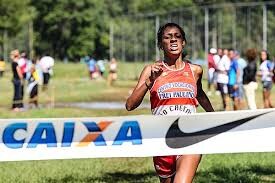
The Brazilian was nabbed for using prohibited substances S1.1 Anabolic Androgenic Steroids (AAS)/Testosterone with tests conducted while she was in the country.
“I confirm that ADAK collected a sample from the athlete on 23rd January 2024,” ADAK’s Head of Legal Services Bildad Rogoncho said in a response to Pulse Sports.

“The sample was transported to and analyzed by a WADA accredited laboratory in Stockholm, Sweden; that is the Doping Control Laboratory - Karolinska University Hospital.
“The Sample tested positive for Anabolic Androgenic Steroids (AAS)/ Pregnanediol, Androsterone, Androstane, Ketoetiocholanolone, Androstanediol, Etiocholanolone, Adilos, Epitestosterone and Testosterone.
“The athlete’s case was then referred to the Brazilian National Anti-Doping Organization for processing.”
ADAK says the athlete had been training in Eldoret when the sample was collected but when contacted, she denied having used the prohibited substance and claimed to have used a supplement acquired in Kenya.
She, however, failed to produce proof of the supplement and could not also recall its name, leaving ADAK with no option but to act.
“The athlete alleged to have bought and used some supplement which are suspected to have been contaminated with the substance found in the athlete's system. This matter is now being dealt with by the Brazilian National Anti-Doping Organization,” added Rogoncho.
Zarri is a long-distance runner who recently won the 5k race in Rio de Janeiro, Brazil and had been training in Kenya, alongside her husband Daniel Nascimento, in a bid to make Brazil’s Olympics team.
Nascimento is the South American marathon record holder and the only Brazilian qualified for the marathon at the upcoming Paris Olympics.
(07/05/2024) ⚡AMPby Joel Omotto
Why Paris Olympic Games will be key for Omanyala career
The last time an African athlete scaled the Olympic podium in the sprints was in Atlanta in 1996 when retired Namibian great Frankie Fredricks won silvers in the men’s 100m and 200m finals.
It was a repeat of his exploits at the 1992 Barcelona Summer Games, where he also won the silver double.
Ahead of the forthcoming Paris 2024 Summer Games, there is renewed optimism that a sprinter from the continent will medal either in the short or longer dash events considered to be the cream of track and field competition at the Olympics.

African record holder Ferdinand Omanyala of Kenya, the ninth fastest men’s 100m runner of all time, Botswana breakout starlet Letsile Thebogo and resurgent South African sprint king, Akani Simbine, have all enjoyed a solid start to the season and, more importantly, peaking at the right time.
Omanyala who holds the African record of 9.77 seconds, underlined his credentials when he won the Kenyan Olympic Trial in 9.79 which was until last week, the fastest time of the year.
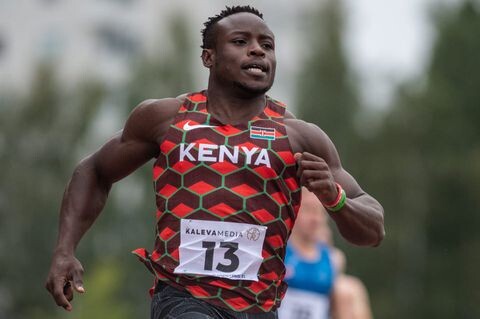
Kishane Thompson, who won the men’s 100m in 9.77 at the U.S. Olympic Trials on Sunday, has supplanted Omanyala from the top of the 2024 world list, but considering the latter did it at Nairobi’s punishing elevation, there are reasons for the Kenyan to be optimistic of a medal in France.
Having burst onto the scene with his blazing time in 2021 at the height of the global pandemic, the 28-year-old, who has since won the Commonwealth and African men’s 100m, has established a reputation as one of the brazen and at times cocky top sprinter.
But that is all set to change as he prepares for his second Olympics after failing to make the final of the delayed Tokyo Summer Games.
Speaking to the media in Nairobi on Monday, Omanyala cut the determined figure of a man who is focused on the ultimate goal— not the showmanship side that has endeared him to millions of fans at home and abroad.
“Our sport humbles you; everybody who is anybody in the sport has lost a race at some point. With that, you understand that it’s not always about you winning; it’s about how humble you are; it’s just that.”
Biggest lesson
“It’s the biggest lesson that I have learned and I understand that there is pressure coming in, especially as we go to the Olympics. There are a lot of expectations,” the two-time African champion emphasised.
And indeed, lessons have been learned. In April, Omanyala had boldly predicted he would not allow American sprint heavyweight Kenny Bednarek, the Olympic 200m silver medallist, to beat him on his home track during the Absa Kip Keino Classic, the World Athletics Continental Tour Gold event that went down in Nairobi.
As it turned out, Bednarek stepped down the distance to win in 9.91 as Omanyala (10.03) faded to fifth in front of a passionate home crowd, and later, the American posted a video on social media that threw shade at the Kenyan.
However, behind the scenes, the Commonwealth champion was adjusting to changing coaches, with Geoffrey Kimani, who was part of the Kenya 7s rugby technical bench, taking over at the start of the year.
Retreating quietly to his new training regime and running technique, Omanyala turned up for the Olympic Trials in June a man transformed and humbled.
“This year, I am not giving anybody any target; I am not going to promise anybody anything.”
(07/05/2024) ⚡AMP
by Xinhua News
Paris 2024 Olympic Games
For this historic event, the City of Light is thinking big! Visitors will be able to watch events at top sporting venues in Paris and the Paris region, as well as at emblematic monuments in the capital visited by several millions of tourists each year. The promise of exceptional moments to experience in an exceptional setting! A great way to...
more...Why you should splurge on a medical pedicure
Runners’ feet take quit a beating in training and competition. Calluses, bunions, black toenails or no toenails at all are things most runners deal with, but even mild foot pain can cause you to unconsciously alter the way you walk and run, which leads to compensation and compromises your muscles and joints in other ways. If it gets to the point where your foot or feet are painful, it’s time for a trip to your local salon for a pedicure–while skipping the nail polish.
A medical pedicure, or “medi-pedi,” is a footcare practice more closely resembling a medical procedure than your typical nail appointment. The specialized treatment targets the overall health of your feet, rather than just their appearance.
Typically, the longer your race distance, the more foot issues you will deal with. Ultramarathoners are definitely familiar with the pain that even the smallest blister can cause, and need to take extra steps to care for their feet. Especially at these distances, when no amount of moisturizer or blister bandages can provide you with relief, you’ll be prompted to take more serious interventions.

Your technician, a trained chiropodist, will assess your foot for underlying health conditions such as warts, ingrown toenails, athlete’s foot or fungal infections and will address the discomfort you may be experiencing. The procedural steps include sanitizing, trimming and filing your toenails, softening and buffing thick calluses and intensive moisturizing. Believe it or not, the calluses you’ve developed over time to toughen up your feet can become too thick and eventually cause your skin to crack.
The treatment will not only leave your feet feeling smooth and soft, but will also set you up to avoid painful blisters, worsening infections, black toenails or ingrown toenails. The technician also provides advice for properly caring for your feet to treat and/or prevent future issues.

Follow-ups for your medi pedi should be done every three to six months, but you can go more often until your discomfort is properly addressed. There are two drawbacks to the procedure: being in a doctor’s office makes it a little less relaxing than your typical spa day, and the price tag accompanying the service could be $200 or more. On the bright side, it is much more sterile than a salon, and may be covered by your private health insurance. Running pain-free does sound like a pretty good return on your investment!
(07/05/2024) ⚡AMPby Cameron Ormond
Elite winners make their mark at AJC Peachtree Road Race
Sebastian Sawe won The Atlanta Journal-Constitution Peachtree Road Race’s men’s elite division Thursday with an unofficial time of 28:03. He currently is the No. 1-ranked road racer in the world.
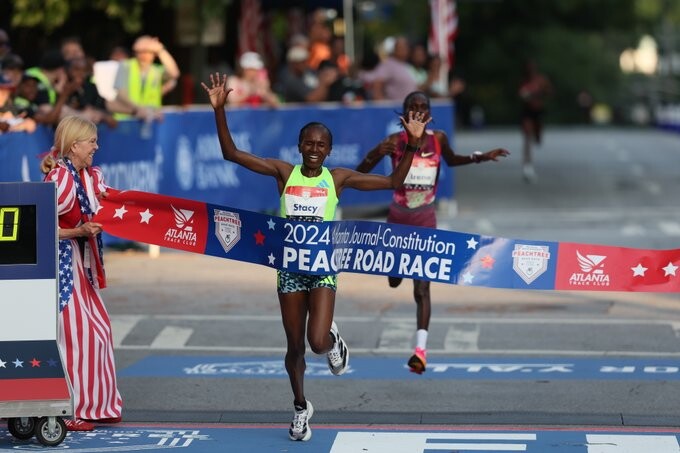
This is Sawe’s first season of competition in the U.S., according to the Atlanta Track Club. The 29-year-old Kenyan brings a personal best of 26:49, the second-fastest 10K time in the world last year, and the reigning World Half Marathon Champion sits on top of the 2024 leaderboard for the fastest half marathon in the world so far this year, the track club said.
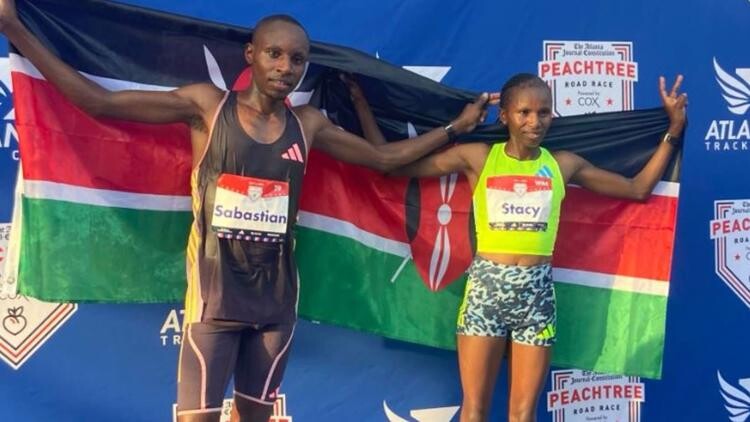
Stacy Ndiwa won the women’s elite division with a time of 31:12. Ndiwa, who is from Kenya, finished the race limping across the finish line.
(07/04/2024) ⚡AMPby Kendall Wright
AJC Peachtree Road Race
The AJC Peachtree Road Race, organized by the Atlanta Track Club, is the largest 10K in the world. In its 48th running, the AJC Peachtree Road Race has become a Fourth of July tradition for thousands of people throughout the metro Atlanta area and beyond. Come kick off your Fourth of July festivities with us! If you did not get...
more...99-year-old completes AJC Peachtree 10K in Atlanta
American masters runner Betty Lindberg is nothing short of amazing. On Thursday morning, the 99-year-old was the oldest finisher at the annual AJC Peachtree 10K Road Race in Atlanta, held annually on U.S. Independence Day, completing it in three hours and eight minutes.
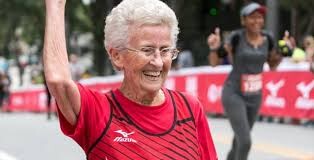
Lindberg didn’t start running until she was 63, and she has run the AJC Peachtree 10K Road Race 35 times in the last 36 years. Although her running days are behind her, she now goes for what she calls “quick strolls” around her neighbourhood.

The women’s 90+ division at this year’s AJC Peachtree 10K was deep, with Lindberg finishing fourth out of five runners in her age group. She completed the race alongside her son Craig, who is 68, her grandson Eric, and various other family members.
Lindberg has many American masters running accolades to her name, including the American W95+ 5K record: 59 minutes and six seconds. She held the world record for the age category until Canada’s own Rejeanne Fairhead set a new 5K record at the 2023 Ottawa Race Weekend, smashing Lindberg’s time by eight minutes (51:09).
(07/04/2024) ⚡AMPby Marley Dickinson
AJC Peachtree Road Race
The AJC Peachtree Road Race, organized by the Atlanta Track Club, is the largest 10K in the world. In its 48th running, the AJC Peachtree Road Race has become a Fourth of July tradition for thousands of people throughout the metro Atlanta area and beyond. Come kick off your Fourth of July festivities with us! If you did not get...
more...Krop to focus on mental strength ahead of the 2024 Paris Olympics
World 5,000m silver medalist Jacob Krop will focus on his mental strength ahead of the 2024 Paris Olympic Games later this month.
Krop, who won bronze at the 2022 Commonwealth Games, said being his first time at the Olympics, he wants to make an impact and that is why he will not just focus on running but also on mental strength.
“Running at the Olympics stage is good for me because you face the best of the best in the world.
"Remember running is not just about the body but also how strong one is mentally. This is what makes the difference on such a global stage," he noted.
He added: "It was not easy to make it to the Olympic Games and that is why I am keen to run well in Paris and make my country proud,” said Krop.
“Running is about the mind and I want to put a lot of emphasis on that and Kenyans should expect good results from me in Paris—probably gold,” said Krop after morning training at the Kipchoge Keino Stadium in Eldoret.
He said he has been improving with time and plans to end Kenya's long wait since John Ngugi won the title in the 1988 Olympics in Seoul.
“I have been doing very well recently and I want to win gold. It has been long since we won gold and I think the time is now,” said Krop, who will team up with Ronald Kwemoi and Edwin Kurgat for Team Kenya.
He said he has been improving with time and plans to end Kenya's long wait since John Ngugi won the title in the 1988 Olympics in Seoul.
“In 2021, I was in Form Four sitting my final examination and I couldn't make it for the Olympics. This is despite having featured in the trials and having placed fourth,” he said.
(07/04/2024) ⚡AMPby Emmanuel Sabuni
Paris 2024 Olympic Games
For this historic event, the City of Light is thinking big! Visitors will be able to watch events at top sporting venues in Paris and the Paris region, as well as at emblematic monuments in the capital visited by several millions of tourists each year. The promise of exceptional moments to experience in an exceptional setting! A great way to...
more...Simpson, Frisbie, Rodriguez, Estrada Commit to Run Crazy 8s 8K Hoping for USATF National Championshisp
With the announcement that the Ballad Health Niswonger Children’s Network Crazy 8s 8K Run will host both the USATF Men’s & Women’s 8K Road Championship Presented by Gatorade on July 20th, competition is heating up for both championships.
Olympic bronze medalist Jenny Simpson and Annie Frisbie will be two of the headliners in the women’s field with Isai Rodriguez and Diego Estrada the early favorites on the men’s side.“We’re off to a good start,” said co-director Hank Brown.
“We are receiving tremendous interest from some of the best runners from around the country. We’re expecting 40-50 elite runners in the USATF championship which will be very exciting.”
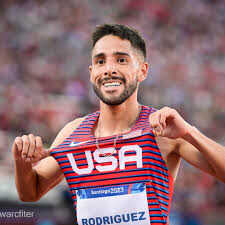
Simpson is arguably one of the more recognizable women’s middle/long distance runners in the United States. She won the bronze medal in the 1500 meters at the 2016 Rio Olympics, the gold medal at the 2011 World Championships, and followed with silver medals at the 2013 and 2017 World Championships Simpson is a former American record holder for the 3000 meter steeplechase and has represented the United States at three Olympics – 2008 Beijing, 2012 London, and 2016 Rio.
Frisbie is on a personal tear recently, running personal bests in 2024 for the 10K (31:49), 15K (49:28), 25K (1:22:37), and half marathon (1:07:34, 1st place). She is running her best and is in excellent shape.In 2023, the men’s race came down to a sprint finish in J. Fred Johnson Stadium with Clayton Young outlasting Andrew Colley and Isai Rodriguez. Young will be going to Paris to run the marathon and Colley is nursing a sore foot, so Rodriguez will be the top returning finisher (Colley is still tentative).
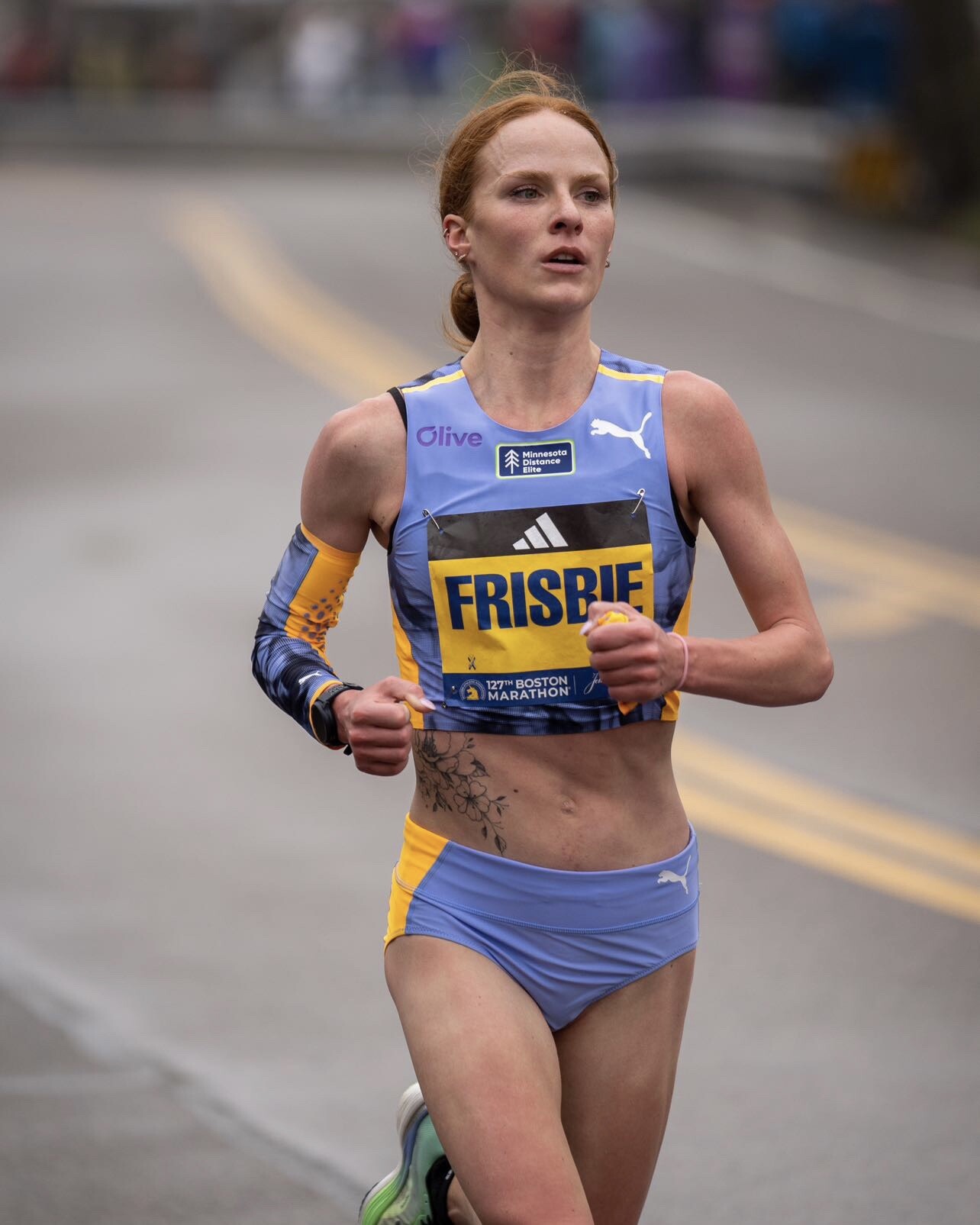
Rodriguez has a 10,000 meter personal-best under 28 minutes and was the Pan Am Games 10k champion in 2023.Estrada is a veteran runner making a successful comeback in 2024. He represented his native Mexico in the 10,000 meters in the 2012 London Olympics, but became a US citizen in 2014 at which time became eligible to represent the USA in international competition.
He has an impressive 10k time of 27:30 set in 2015, and 5K of 13:31 at the Carlsbad 5K in 2014. He is now 34 and quite possibly running his best times in 2024.
He placed fifth at the Aramco Houston Half Marathon in January, running a very fast 1:00:49, which is a personal best at that distance and tnen followed that a thrid-. place finish at the USATF 15K Championship in Jacksonville. In May he set an American best of 1:13:09 at the USATF 25K Championship, winning the Amway 25K River Run in Grand Rapids, MI.
“We are thrilled to have these guys and gals at Crazy 8s,” said Brown. “When we decided to host the USATF 8K Championship this is exactly the caliber of runners we were hoping to attract to Kingsport.”
The Regional Eye Center is offering a $10,008 American Record bonus for men who can break Alberto Salazar’s record of 22:04 (1981) or women who can break Deena Kastor’s record of 24:36 (2005).
In addition to the bonus, the race is offering prize money to the top 10 in the USATF Men’s and Women’s Championships.Sponsors are Ballad Health Niswonger Children’s Network, Gatorade, The Regional Eye Center, Eastman Credit Union, Kingsport Pediatric Dentistry, Food City, Martin Dentistry, Mycroft Signs, Culligan, Associated Orthopaedics of Kingsport, and JA Street.
(07/04/2024) ⚡AMPby TriCitiesSports.com
Crazy 8s 8k Run
Run the World’s Fastest 8K on the world famous figure-8 course on beautiful candle-lit streets with a rousing finish inside J. Fred Johnson Stadium. Crazy 8s is home to womens’ 8-kilometer world record (Asmae Leghzaoui, 24:27.8, 2002), and held the men’s world record (Peter Githuka, 22:02.2, 1996), until it was broken in 2014. Crazy 8s wants that mens’ record back. ...
more...Three easy to follow track workouts to improve your 5K speed
These three 5K workouts take the headache out of trying to remember your workout.
Whether you’re a seasoned marathoner looking to improve your track speed or training for your first road race, developing your 5K speed can be a fun and rewarding addition to your training regimen. Short interval workouts at faster paces train your body to adapt to quicker movements, building your aerobic threshold and helping you sustain speed over longer distances. Finding the right workouts can be challenging, and sometimes you want to avoid overly intense routines.
Here are three simple, yet effective, track workouts to help you boost your 5K speed.

300m intervals with 100m jog rest
1.- Workout
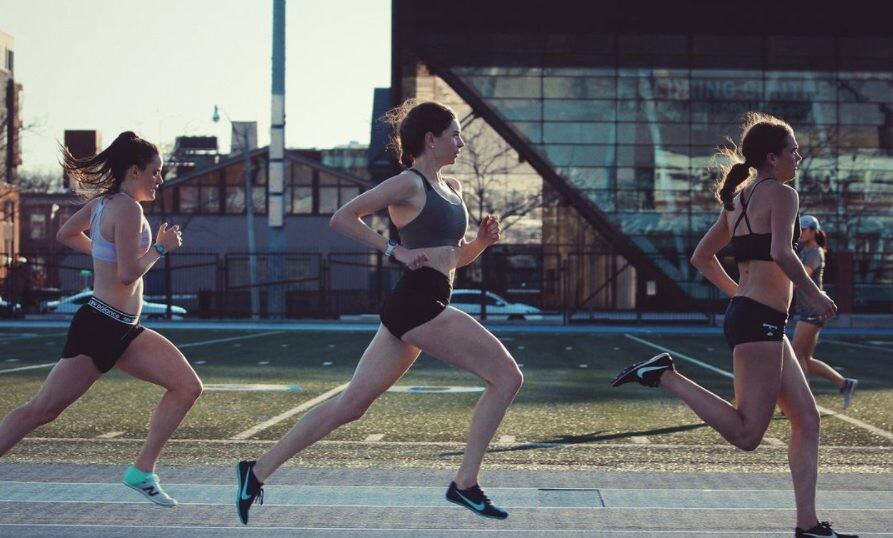
Warmup: 10-20 minutes of easy jogging
Set: 10 reps of 300m at your goal race pace (or slightly faster) with 100m walk or slow jog rest
Cooldown: 10-20 minutes of easy jogging
* If you don’t have access to a 300m loop or a track, a modification for the workout is doing 70 seconds on and 30 seconds rest*
Interval training is a proven method to increase both speed and endurance. By running short, fast segments followed by brief rest periods, you can improve your running economy and VO2 max–two crucial factors for a fast 5K. Maintain a consistent pace throughout each 300m repeat, avoiding the temptation to start too quickly, which can make the workout unnecessarily difficult. If you find the workout too challenging after four or five reps, break the 10 reps into two sets of five, with a three-minute rest between sets. Focus on staying relaxed and maintaining good form.
Bends and straights
2.- Workout
Warmup: 10-20 minutes of easy jogging
10 to 15 laps of jogging bends and striding straights
Cooldown: 10-20 minutes of easy jogging
(The workout should be done on a 200m or 400m athletics track to control the length of each interval.)
If you’re doing the workout on a 400m track, stride for 100m, jog the next 100m curve, stride another 100m, and jog the following 100m curve for 10 to 15 reps. If you don’t have access to a track, you can do a modification of 10 reps of 20-second sprints followed by 40-second light jogs.
This workout is ideal for runners training for a 5K race, because the constant change of pace simulates the fluctuations in a 5K or mid-distance track race. Aim to keep your sprint pace slightly faster than your goal 5K pace and your jog pace slower than your easy run pace. Ensure your sprints and jogs are controlled during the first five laps to help you complete the workout.
The pyramid
3.- Workout
Warmup: 10-20 minutes of easy jogging
200m, 600m, 1,000m, 1,000m, 600m, 200m, all off 90 seconds stand rest
Cooldown: 10=20 minutes of easy jogging
*If you don’t have access to a track, a modification for the workout is doing 30 seconds, one minute, 2x three minutes, one minute, 30 seconds off 90 seconds stand rest.*
Pyramid workouts involve running intervals of increasing and then decreasing distances, helping to improve speed, endurance and mental toughness by varying both distance and pace. Start the 200m reps at your goal 5K pace and aim to increase the pace slightly on the second 1,000m rep, finishing with a comfortable sprint effort at around 85 to 90 per cent for the final 200m. The shorter intervals are designed to practice running at a faster pace, while the longer ones build endurance.
(07/04/2024) ⚡AMPby Marley Dickinson
Kenyan-born runners see dust at US Olympics trials as all of them miss tickets to Paris
It was a nightmare outing for all six Kenyan-born American runners at the US Olympics trials as none of them managed to secure a ticket to the Paris 2024 Games.
Kenyan-born runners who were seeking to represent the United States of America at the Paris 2024 Olympics all ended up empty-handed at the just-concluded trials.
At the weeklong trials that started on June 21 and ended on June 30, six Kenyan-born runners had signed up in a bid to represent their adopted country in various disciplines at the Paris Olympics.
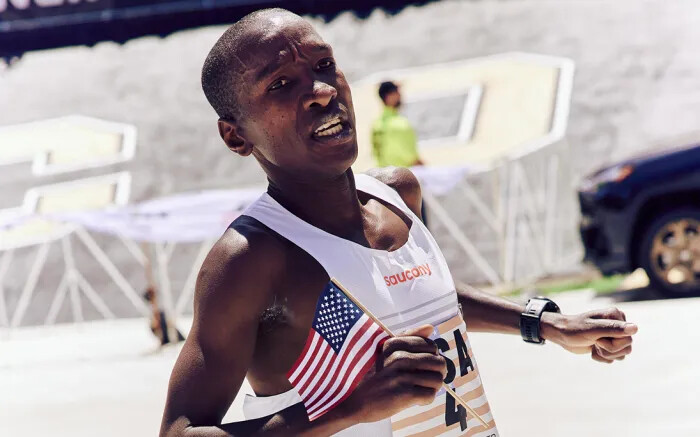
However, none of them could finish among the first three to secure the coveted tickets.
Sam Chelanga and Paul Chelimo, Olympics bronze medallist in 5,000m, were the first to miss out on the first day of the trials when they finished seventh and 10th respectively in the men’s 10,000m race.
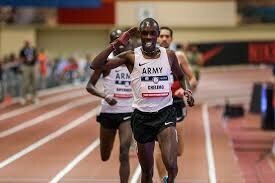
Grant Fisher, fifth at the Tokyo 2020 Olympics, clinched first place in the race, followed by Woody Kincaid with Nico Young claiming the final ticket.
The story was the same for three Kenyan-born athletes in the men’s 3,000m steeplechase. Anthony Rotich, who had already hit the Olympic qualifying standard, could only manage eigth place, followed by Bernard Keter in ninth, while Hillary Bor was 13th in the final.
Kenneth Rooks, Mathew Wilkinson and James Corrigan are the athletes who will be competing with Kenyan trio of Simon Koech, Amos Serem, and Abraham Kibiwott in the 3,000m steeplechase at the Olympics.
In the men’s 800m, Jonah Koech was the last man standing among the Kenyan-born contingent at the US trials heading into the final day on Sunday but he also met his waterloo.
Koech finished fifth in the final which was won by Bryce Hoppel, followed by Hobbs Kesler and Brandon Miller in second and third positions respectively.
It has been a horrible year for the Kenyan-born runners as only Leonard Korir managed to secure an Olympics slot after earning a late lifeline when qualification rules for the marathon were altered last month.
Korir had finished third at the marathon trials in February but had to wait for months to know his fate.
It was double disappointment for Chelimo who had also missed out on a place on the marathon team after dropping out of the race at the trials while Betsy Saina, Caroline Rotich and Elkanah Kibet also failed in their quest in February.
A number of them such as Saina, Koech and Chelimo has pitched camp in Kenya to train for the Olympics trials but it was still not enough.
(07/03/2024) ⚡AMPby Joel Omotto
Paris 2024 Olympic Games
For this historic event, the City of Light is thinking big! Visitors will be able to watch events at top sporting venues in Paris and the Paris region, as well as at emblematic monuments in the capital visited by several millions of tourists each year. The promise of exceptional moments to experience in an exceptional setting! A great way to...
more...How the 1904 Marathon Became One of the Weirdest Olympic Events of All Time
There were so many things unusual about the 1904 Olympics. Firstly, it was the first-ever Olympics to be held outside Europe, in St. Louis. America. Secondly, the time of the games coincided with the “World Fair,” called the Louisiana Purchase Exposition, which ended up causing a lot of confusion about the games. But the most peculiar and strange part of the 1904 games was its 25-mile marathon. The Olympics call this race “the most bizarre spectacle in Olympic history.” The conditions of the race were so extreme and inhospitable that 18 out of 32 athletes were forced to withdraw due to severe exhaustion, injuries, and fatigue.
At that time, this particular marathon caused a major uproar for its outrageous manner. Held on August 30, at sweltering 3 pm, the marathon’s trail included an unpaved, 24.85-mile dust-covered road, skirting seven hills, some hundreds of feet high, along the Missouri plains. To add to the brutishness of the game, only one water stop was arranged throughout the trail, a roadside well situated 12 miles into the race. James Sullivan, the chief organizer of the games, had deliberately done this for research. He wanted to see the effects of minimal fluid intake and dehydration on the candidates, testing their limits and stamina, per Smithsonian Magazine.
Only a few countries participated in the 1904 Olympics. Around 523 of 623 total athletes were Americans, per HISTORY. In this marathon, the participants Sam Mellor, A.L. Newton, John Lordon, Michael Spring, and Thomas Hicks, were all experienced American athletes. Fred Lorz was another American contender, who laid bricks during the day and trained for the Olympics during the nighttime. Other candidates included two men from the Tswana tribe of South Africa - the first Black Africans to ever participate in the modern Olympics - who were in St. Louis as part of the South African World’s Fair Exhibit.

In addition to the American candidates, the marathon included Félix Carvajal, a Cuban athlete, who appeared in New Orleans wearing a white, long-sleeved shirt, long, dark pants, a beret, and a pair of street shoes. Interestingly, a fellow Olympian cut off his trousers to the knee so he could run comfortably.
As the race began, its thirty-two athletes took their places at the starting line. But then the course of the race unfolded into a series of bizarre events. Carbajal, for instance, stopped midway into the race to snack on some apples that turned out to be rotten. He had to stop by a corner as the rotten apples gave him severe stomach cramps.
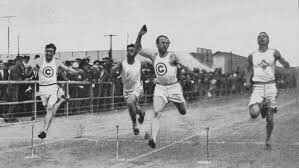
Then, while South Africa's Taunyane was running smoothly, some wild dogs set after him, and started chasing him, which led him to finish ninth of the 14 finishers. Additionally, William Garcia of California inhaled so much dust into his esophagus from the country roads that he suffered a stomach hemorrhage that was just close to being fatal. At the end of the race, Lorz was to be awarded the winning medal, but when the time came, someone claimed that he was an “imposter.” As the entire episode unfolded, officials came to know that Lorz, upon suffering from stomach cramps, had taken a lift from a car, for about 11 miles during the race. But Lorz was unperturbed. He went on to claim that he had only finished the race as a “joke.”
Eventually, the medal went to Hicks. Seven miles from the finish line, his trainers fed him a concoction of strychnine and egg whites, and later some French brandy for stamina. According to the Centers for Disease Control & Prevention, today, strychnine is used primarily as a pesticide, particularly to kill rats. Drunk and nauseous, while Hicks was partially unconscious, his trainers carried him to the finish line, where he was declared the winner. His legs were moving back and forth as if he was still running.
Describing Hicks from the day, Charles Lucas, a race official, said, “His eyes were dull, lusterless; the ashen color of his face and skin had deepened; his arms appeared as weights well tied down; he could scarcely lift his legs, while his knees were almost stiff," per Olympics. As Hicks finished the race, it also finished the episode of a game that was never seen and will never be seen again. "The terrific hills simply tear a man to pieces," Hicks later said. On the other hand, Lorz was banned for life for his fraudulent act.
The bizarre marathon was one of the major happenings in the 1904 Olympics that appeared to be organized under an ill-fated star. This Olympics lasted 146 days, while most modern games typically last around two weeks. But this race will be something akin to the first and the last ever witnessed; the weirdest game in the Olympics history.
(07/03/2024) ⚡AMP
by Neha B.
'Doing it for my kids'- Kenya's new 800m star shares main motivation ahead of Olympics debut in Paris
Lilian Odira has opened up about the main motivation behind her pursuit for success in her debut at the Paris 2024 Olympic Games.
National 800m champion Lilian Odira has opened about her main source of motivation as she gears up for her maiden Olympic Games in Paris, France.
The Africa 800m silver medallist explained that her children mean the world to her and she cannot stand not being able to provide for them. Odira took a maternity break in 2020 and returned to competition in 2023 after having her two kids.
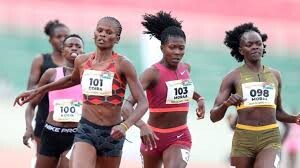
Speaking to Nation Sport, she noted that it was not an easy ordeal trying to make a comeback. The 25-year-old had added weight to 86kg and had to cut down to about 55kg, something that proved to be an uphill task.
However, she noted that two-time Boston Marathon champion Hellen Obiri, having walked the same path, was very instrumental in ensuring she does what is necessary to regain her form.
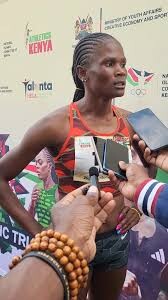
Follow the Pulse Sports Kenya X (Twitter) handle for more news.
“I’m doing all these just for my kids. You can’t explain to them (her kids) that you don’t have so I just have to work hard because of them. In 2020, I took a maternity break and then when I came back, I don’t if it’s by good luck or bad luck, I also got another baby,” she said.
“Then in 2023, I came back and my goal was to shed my weight. It’s not an easy journey, I had 86kg coming back from maternity and I remember Hellen Obiri is the one who took me to jog and I felt like it was not necessary for me to pursue this career. Obiri kept on motivating me and encouraging me since she had also been there.”
She had to sacrifice a lot, explaining that she used to do long runs up to 30km. Odira also explained that self-belief is what helped her get back into shape.
Odira bounced back this season, winning the national championships and proceeding to the Africa Senior Athletics Championships where she won a silver medal behind Sarah Moraa.
She also punched her ticket to the Paris 2024 Olympic Games and it will be her first time on the global stage. This was after she won the national trials, clocking 1:59.27 to cross the finish line ahead of Mary Moraa and Sarah who clocked respective times of 1:59.35 and 1:59.39.
“In Paris, it’s going to be a surprise to many…the trials were a surprise to many. I see many people talking on social media saying that we can’t win a gold medal,” she said.
“I think there was this race that Moraa had with Keely Hodgkinson and she came first. After that, people started talking but I want them to understand that as an athlete, you don’t get to win every day. People forgot about the many things Moraa has done and focused on that loss only.”
(07/03/2024) ⚡AMPby Abigael Wuafula
Paris 2024 Olympic Games
For this historic event, the City of Light is thinking big! Visitors will be able to watch events at top sporting venues in Paris and the Paris region, as well as at emblematic monuments in the capital visited by several millions of tourists each year. The promise of exceptional moments to experience in an exceptional setting! A great way to...
more...Three workouts to help you dominate the downhills
Downhill running will help you build unshakeable leg strength, transferrable to race-conquering performances over any terrain.
Running downhill might sound easy, but it’s a leg-burning challenge that can humble even the toughest uphill champs. Replace one of your speed sessions with one of these downhill workouts and watch your performance soar, even if you’re gearing up for a flat race.
Downhill running triggers eccentric muscle contractions, where your muscles lengthen to support your body. This type of training boosts strength in your quads and hamstrings, enhances running efficiency (even on flat terrain) and improves stability and balance.
1.- Downhill repeats
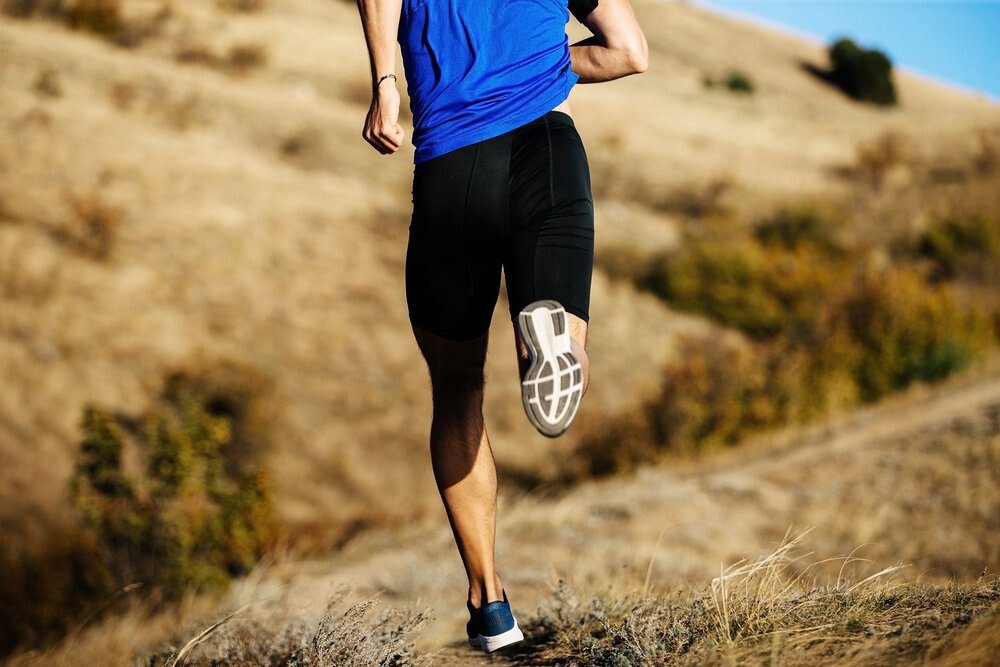
For this workout, find a hill that takes up to two minutes to run down: adjust the time according to your ability and experience. If you have a race coming up, try to find a descent that mimics the terrain you’ll be running on.
Warm up with 10 minutes of very easy running and some dynamic stretches or drills.
Start this session at the bottom of your hill, and walk up the hill at an easy pace to your starting point.
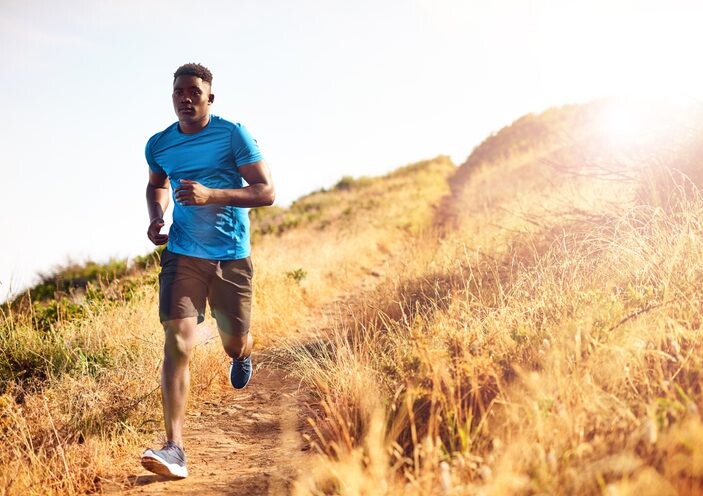
For your first interval, run easily down the hill, keeping your focus on moving smoothly and keeping track of how long it takes you to get to the bottom. Walk back up the hill for recovery. On the second interval, try to beat your first time by a small margin.
Repeat this five to seven times, each time trying to be slightly faster than the previous interval.
Cool down with five to 10 minutes of very easy running.
2.- Iron legs workout
Strong legs equal speedy hill running, both up and down. This workout will leave you weak at the knees—and will build toughness and strength over any terrain.
Warm up with 10 to 15 minutes of very easy running.
Run uphill at an easy pace for one to two minutes, depending on the size of your hill and your experience level. Rest for 30-60 seconds.
Run down the hill as hard you feel comfortable and in control, stopping where you started the uphill. Rest for 30-60 seconds.
Repeat six to 10 times depending on ability—add repeats as you get stronger.
Cool down with 10-15 minutes of easy running.
3.- Downhill fartlek session
Find a downhill training route with a mixture of terrain, including a few 200-400m slopes at roughly a three to six per cent gradient. Don’t worry if you don’t know exact distances or measurements—the idea is to challenge your legs and develop stability over a variety of surfaces.
Warm up with five minutes of very easy, mostly flat running, followed by 5 minutes of medium hard running.
Run six to eight downhill sections, increasing your effort level to a 7 or 8. Follow each repetition with two or three minutes of easy running to recover.
Cool down with five to 10 minutes of very easy running.
Make sure to follow a harder running day with a rest day or very easy running. Downhill running can be slow and challenging at first—practice and consistency is key here, and you’ll reap rewards quickly.
(07/03/2024) ⚡AMP
by Keeley Milne
Meet USA Women's athletics team for Paris 2024 Olympic Games
Discover Team USA's women athletes ready for Paris 2024, featuring new talent and seasoned champions aiming for Olympic glory.
The Olympic track and field trials have concluded and the roster for the USA Women’s Athletics Team heading to the Paris 2024 Olympic Games is set.
This year’s team is a powerful mix of returning champions and new faces, each ready to leave their mark on the grandest stage in sports.
Pulse Sports dives into the details of each event and the athletes representing the United States.
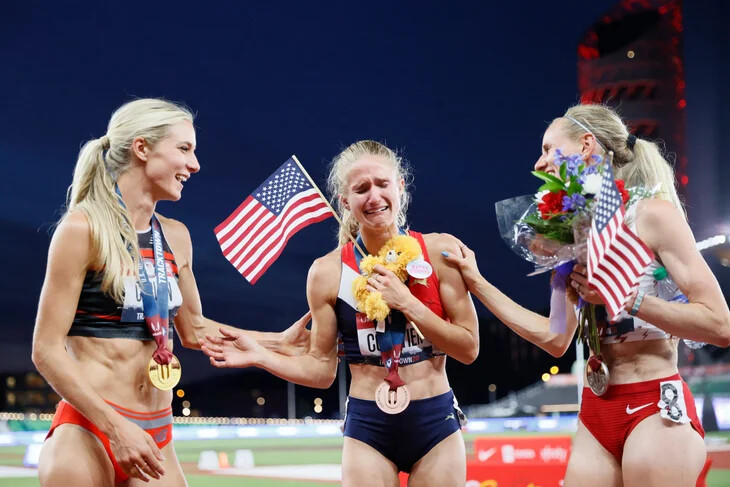
Marathon
The USA women’s marathon team sees a complete refresh from the last Olympics, introducing Dakotah Lindwurm, Fiona O’Keeffe, and Emily Sisson.
O’Keeffe leads this group, having clinched her spot by winning this year's Olympic marathon trials in an impressive 2:22.10.
The team looks to build on the bronze medal performance from three years ago with this new, dynamic lineup.
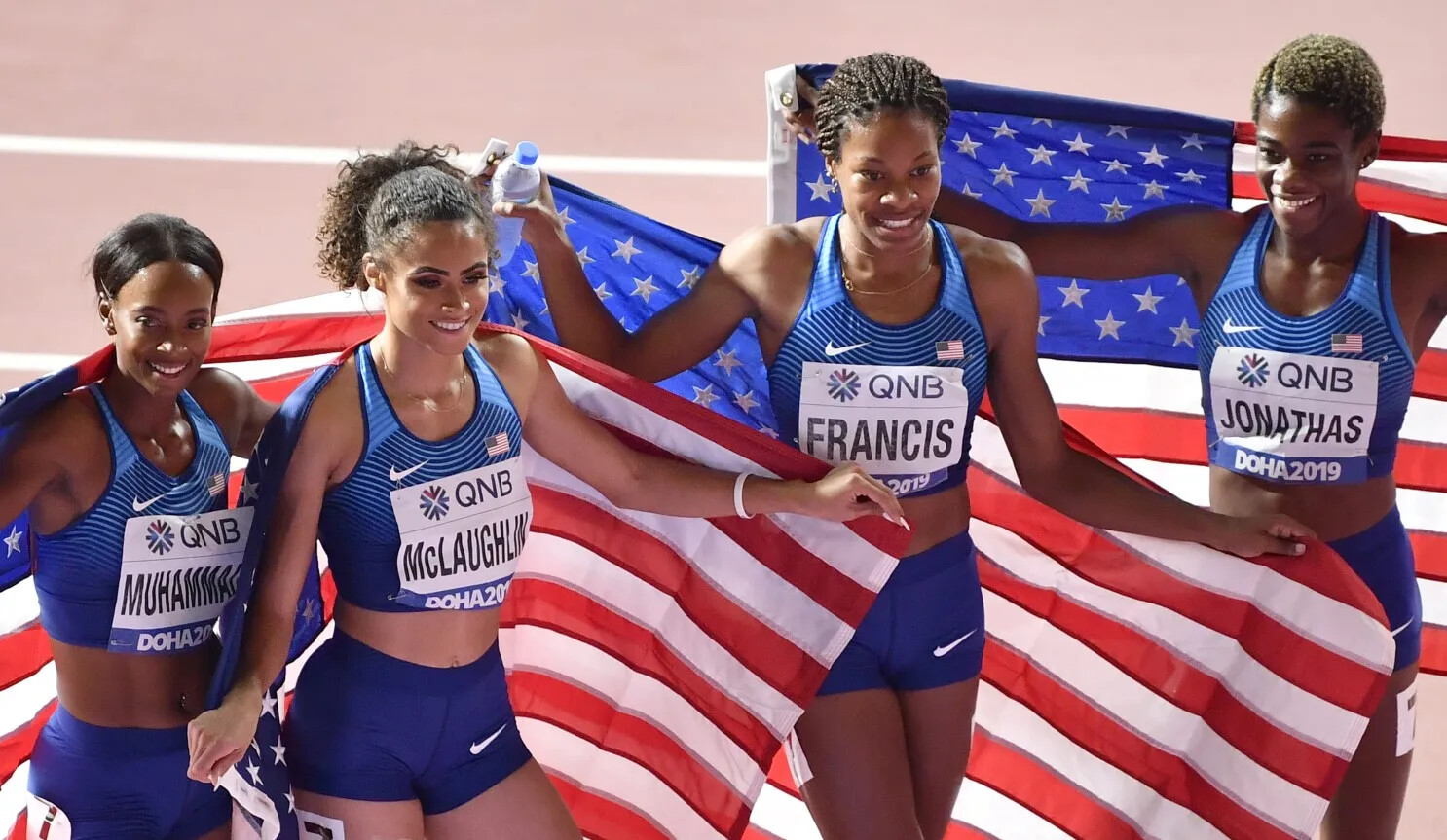
100m
Sha'Carri Richardson is making a much-anticipated return to the Olympics in the 100m dash after missing the previous games.
Her trial time of 10.71 seconds shows she’s back with blazing speed and ready to compete on the Olympic track.
Joining her are Melissa Jefferson and Twanisha Terry, both formidable sprinters who have proven their prowess to secure their spots in this highly competitive event.
100m Hurdles
The 100m hurdles will feature an entirely new USA trio: Masai Russell, Alaysha Johnson, and Grace Stark.
Russell dominated at the trials with a swift 12.25 seconds, while Johnson and Stark showed exceptional skill, each clocking in at 12.31 seconds.
This team replaces the previous Olympic medalists and aims to bring a new energy to the hurdles.
200m
Gabby Thomas returns to the 200m, having won a bronze in Tokyo and posting even better times since.
Alongside her are Brittany Brown and McKenzie Long, both just hundredths of a second apart at the trials, setting the stage for a strong competition in Paris.
Notably, Sha'Carri Richardson, despite high expectations, will not compete in this event after finishing fourth at the trials.
400m
Kendall Ellis, Aaliyah Butler, and Alexis Holmes are the new faces for the 400m, each having run sub-50 seconds at the trials—a benchmark not met by the previous Olympic team.
Their performances suggest that they are serious contenders for the podium in Paris.
400m Hurdles
Sydney McLaughlin-Levrone returns after setting a world record at the trials, clearly positioning herself as the favorite to defend her Olympic title.
She is joined by Anna Cockrell and newcomer Jasmine Jones, rounding out a team that mixes experience with fresh talent.
800m
With Athing Mu absent due to a fall at the trials, Nia Akins took the lead, winning the women's 800m in a commanding 1:57.36.
Allie Wilson and Juliette Whittaker also qualified bringing new energy to an event that saw unexpected twists during the trials.
5000m and 10,000m
Elle St. Pierre narrowly outpaced Elise Cranny in the 5000m, with Karissa Schweizer also making the team.
Schweizer and Parker Valby are waiting on world rankings to confirm their spots in the 10,000m, adding an element of suspense as they aim to compete in both distances.
Discus
Valarie Allman is set to defend her Olympic title in the discus throw, having dominated the trials with a throw of 70.73 meters.
Veronica Fraley, joining her, also showed strong form, ensuring that Team USA remains a top contender in this event.
Hammer
Annette Echikunwoke and DeAnna Price, both meeting the Olympic standard, are ready to improve upon their previous Olympic performances.
Their impressive throws at the trials indicate they are in peak form.
Heptathlon
Anna Hall, Chari Hawkins, and Taliyah Brooks are set for the heptathlon, each with their own story of redemption and debut at the Olympics.
Their diverse skills across multiple events make them versatile and formidable competitors.
High Jump
Vashti Cunningham and Rachel Glenn, both clearing the Olympic standard, aim to surpass their previous performances.
Their consistent top-three finishes at trials underscore their capabilities and medal potential.
Javelin
Maggie Malone Hardin is the sole qualifier for the javelin throw, her victory at the trials marking her as a key athlete to watch in this discipline.
Long Jump
Tara Davis-Woodhall, Jasmine Moore, and Monae' Nichols are set to represent the USA in the long jump.
Davis-Woodhall's recent silver at the world championships positions her as a favorite for gold in Paris.
Pole Vault
Bridget Williams, Katie Moon, and Brynn King, each having cleared impressive heights at the trials, are the pole vaulters heading to Paris.
Their collective performances suggest a strong potential for medal finishes.
3,000m Steeplechase
Valerie Constien, Courtney Wayment, and Marisa Howard, each having excelled at the trials, are prepared to make their mark in the steeplechase.
Their exceptional times are indicative of their strong conditioning and competitive spirit.
Shot Put
Chase Jackson, Raven Saunders, and Jaida Ross form a powerful trio in shot put.
Jackson's leading throw at the trials sets her up as a medal hopeful, while Saunders looks to add to her Tokyo silver.
Triple Jump
Jasmine Moore, Keturah Orji, and Tori Franklin are ready to challenge the distances that will be seen in Paris.
Moore's standout performance at the trials signals great potential for an impactful showing.
(07/03/2024) ⚡AMPby Festus Chuma
Paris 2024 Olympic Games
For this historic event, the City of Light is thinking big! Visitors will be able to watch events at top sporting venues in Paris and the Paris region, as well as at emblematic monuments in the capital visited by several millions of tourists each year. The promise of exceptional moments to experience in an exceptional setting! A great way to...
more...Elite Athlete Fields Set for 55th Running of AJC Peachtree Road Race
Two of the top road racers in the world will face off in the 55th Running of the Atlanta Journal-Constitution Peachtree Road Race, organizers announced today.
In his first season of competition in the U.S., Sabastian Sawe comes to Atlanta ranked as the #1 road racer in the world, based on distances from 10K to the half marathon. The 29-year-old Kenyan brings a personal best of 26:49, the second-fastest 10K time in the world last year, and the reigning World Half Marathon Champion sits on top of the 2024 leaderboard for fastest half marathon in the world so far this year, 58:24.
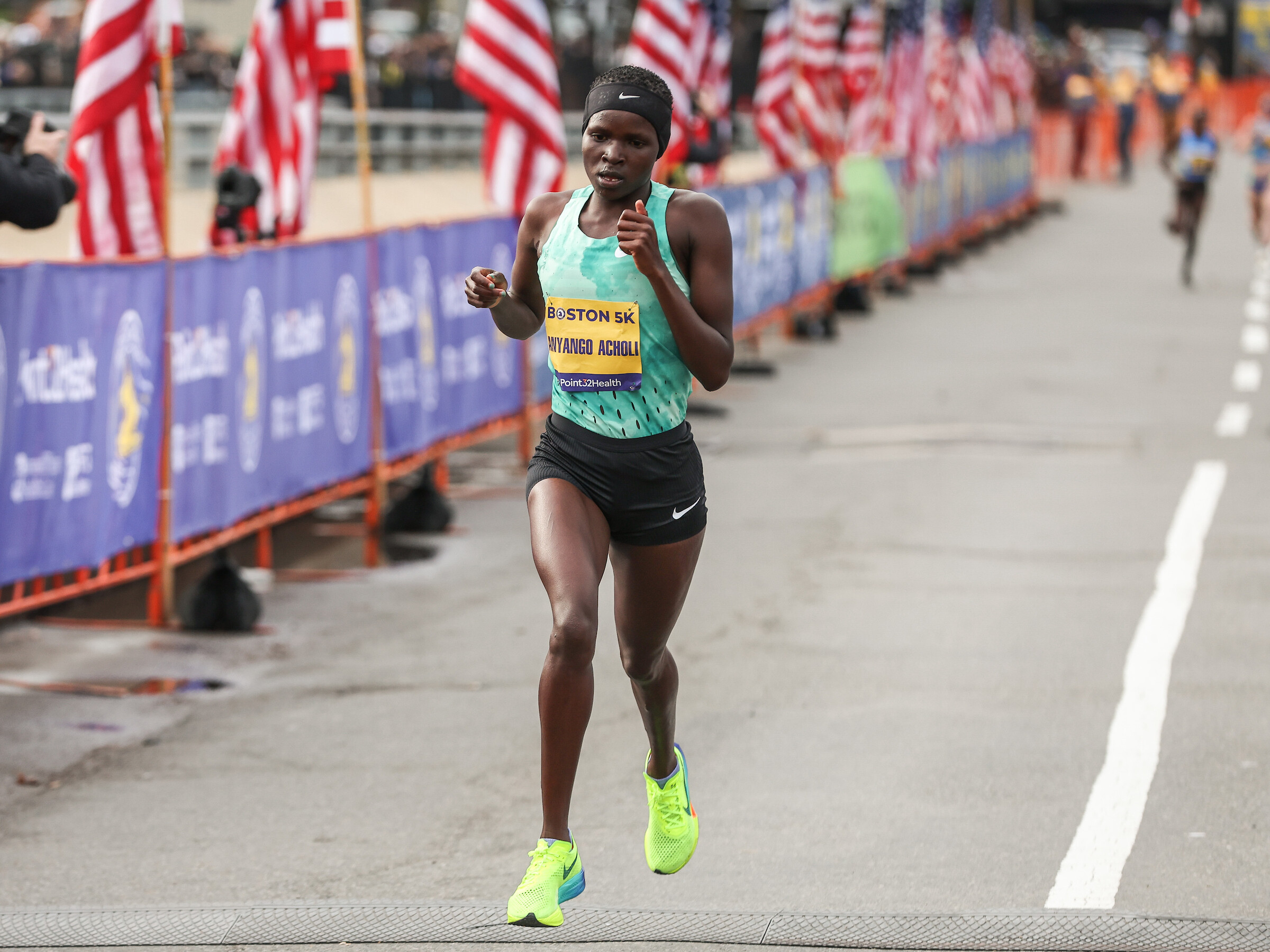
In a rematch of those 2023 World Half Marathon Championships, Sawe will face Kenya’s Daniel Ebenyo, 28, who earned a silver medal in that race last fall. Ebenyo was leading until Sawe drew even with a few hundred meters remaining, going on to a four-second victory. “We pushed each other to a good result,” Ebenyo said afterward.
Ebenyo, the 2023 World Championships silver medalist at 10,000 meters on the track, is ranked #1 in the world for 10K on the roads. His personal best of 26:58 is second in the Peachtree field only to Sawe. Both will be making their Peachtree debuts.
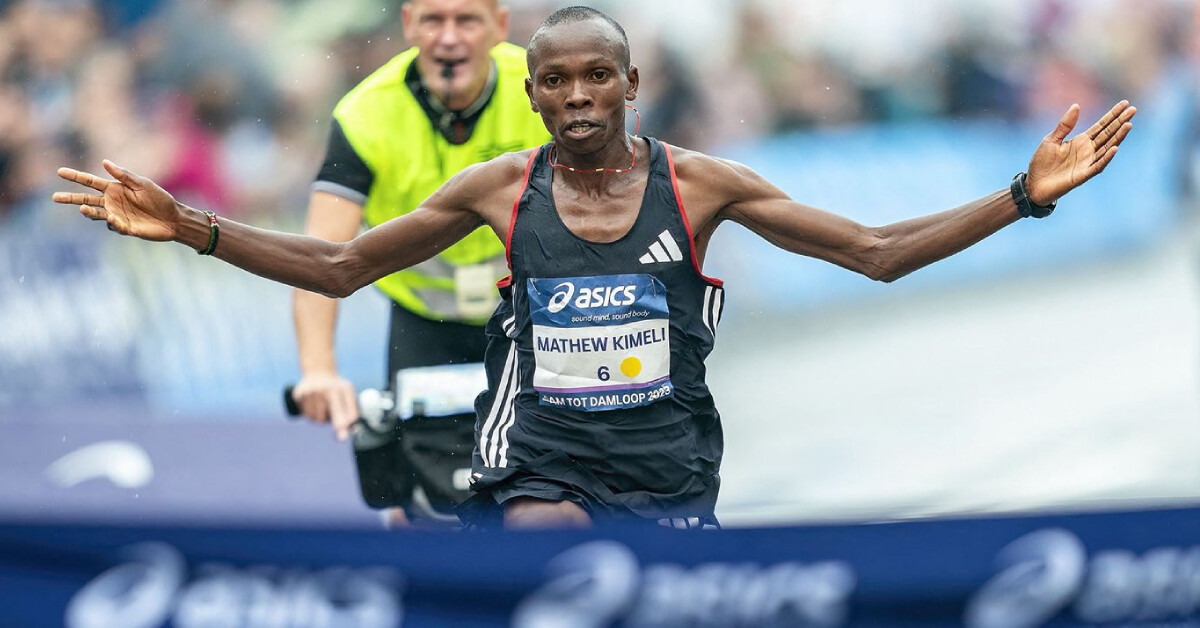
Among the other top athletes in the field are Mathew Kimeli of Kenya (27:07) and Boniface Kibiwott (27:13) of Kenya and Jake Robertson of New Zealand (27:28). Returning to the Peachtree for the 10th time is American Elkanah Kibet, 41.
In the Shepherd Center Wheelchair Division, course record-holder Daniel Romanchuk of the USA (right) will have a chance to make history as the first athlete in the men’s open division to win the Peachtree seven times. Romanchuk, 25, has won Peachtree for the past six years in a row, but will have to fend off American Aaron Pike, a six-time Paralympian, and Josh Cassidy of Canada, a two-time Peachtree champion.
he field for the women’s footrace is headlined by 24-year-old Emmaculate Anyango, whose 10K personal best of 28:57 makes her the second-fastest woman in history at the distance. The Kenyan is currently ranked as the #4 road racer in the world.
Countrywoman Chelangat (30:01) will challenge her. Anyango and Chepkoech, who is tied for 8th-fastest woman in history, will be making their Peachtree debuts, while Chelangat is back after finishing second here last year.
Also returning will be Susannah Scaroni (left), the 2020 Paralympic gold medalist at 5,000 meters. The 33-year-old Peachtree course record-holder will be seeking her fourth win here since 2018 and third in a row. Scaroni missed the spring marathon season with an overuse injury but is apparently back to form: She set a World Record for 5,000 meters on the track in early June.
The winner of each professional division will receive $12,500.
For the first time, the Peachtree will feature an Elite High School Division, giving the best young distance runners in Georgia the chance to experience professional road racing first-hand. The field is composed of the top 20 boys and top 20 girls from the classes of 2025, 2026 and 2027 residing in Georgia who accepted an invitation from Atlanta Track Club.
The 55th Running of the Atlanta Journal-Constitution Peachtree Road Race will be held Thursday, July 4, in Atlanta, Georgia, with 50,000 runners and walkers making their way from Lenox Square to Piedmont Park in the world’s largest 10K. The event will be livestreamed on AJC.com and on the AJC News app beginning at 6 a.m., with Lewis Johnson, Carrie Tollefson and Amanda McGrory leading the broadcast team.
(07/02/2024) ⚡AMPby Running USA
AJC Peachtree Road Race
The AJC Peachtree Road Race, organized by the Atlanta Track Club, is the largest 10K in the world. In its 48th running, the AJC Peachtree Road Race has become a Fourth of July tradition for thousands of people throughout the metro Atlanta area and beyond. Come kick off your Fourth of July festivities with us! If you did not get...
more...Zablon Ekwam reveals specific target ahead of making Olympic Games debut
Zablon Ekwam has revealed what he is targeting specifically as he looks to make his debut at the Paris 2024 Olympics.
Zablon Ekwam, an officer in the Kenya Army, has opened up on his specific target as he gears up for his Olympics debut at the Paris Games later this month.
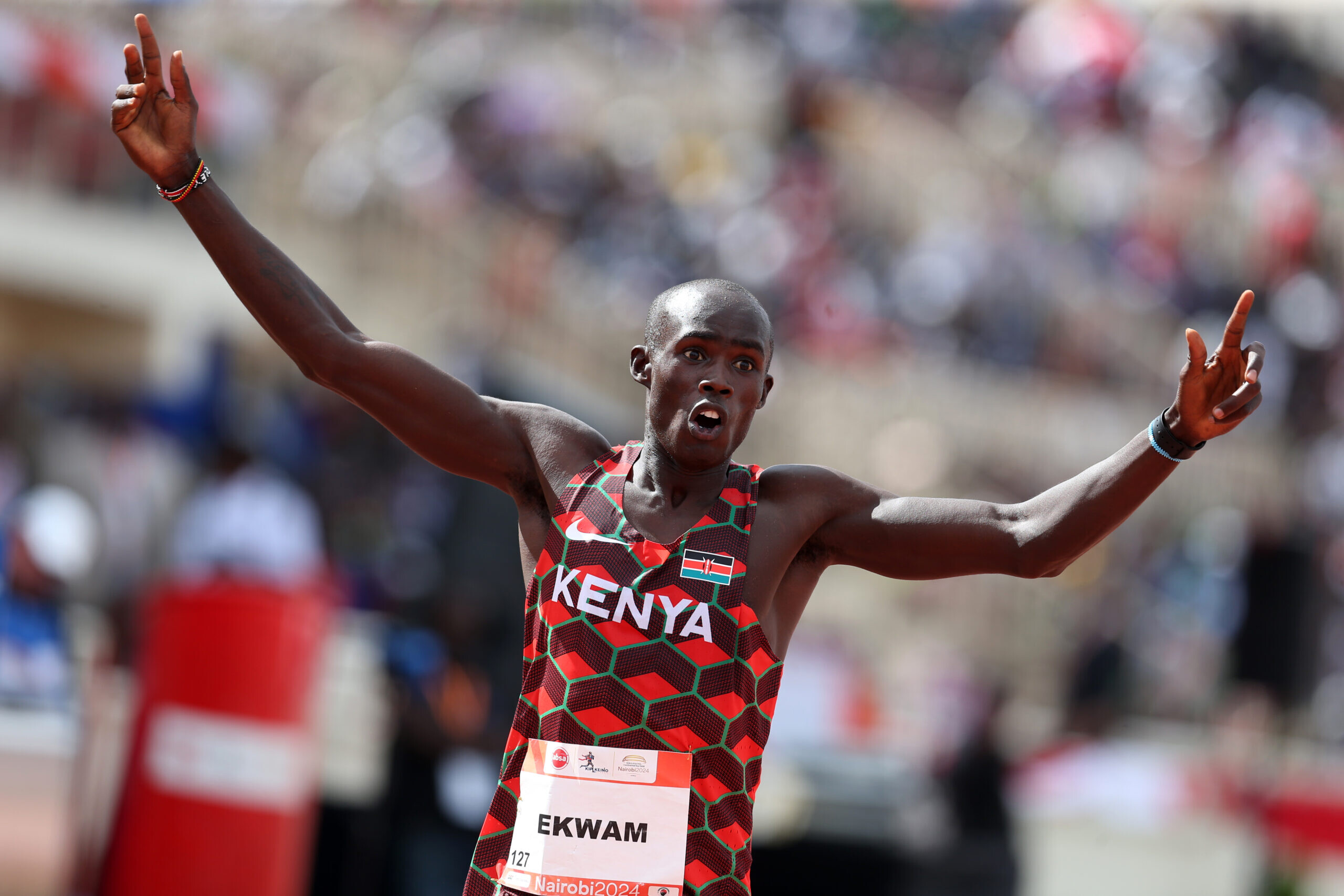
Ekwam qualified for the event in the 400m at the Kip Keino Classic, clocking 44.69 to cross the finish line fourth. The qualification time for the men’s 400m at the Olympics is 45.00 and deadline for qualification was June 30.
The 26-year-old now plans to go to the Olympic Games and impress, looking to better his time. Ekwam disclosed that his main plan will be to get to the final of the 400m, this being his first time at the global showpiece.
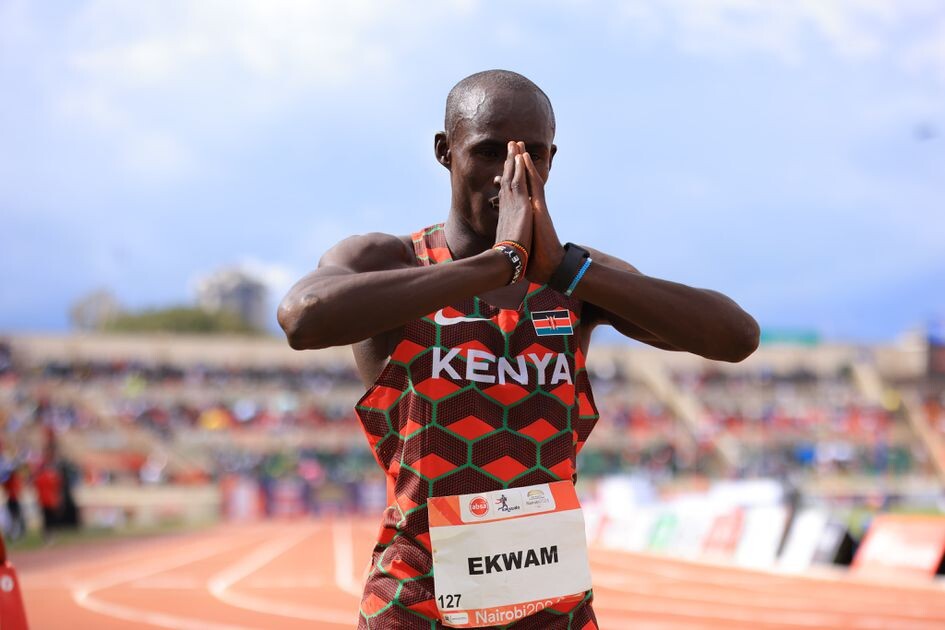
“We are going to the Olympics with no pressure because I just want to improve my personal best time. My target is to get a personal best time in the final,” Ekwam said.
The sprinter says his body has been responding well, the reason behind the silver medal in the men’s 4x400m relay at the Africa Senior Athletics Championships.
Ekwam was sick at the World Athletics Relays in the Bahamas but managed to bounce back stronger as he looks to make an impact at the event.
He added that every athlete always looks to compete at the Olympic Games and that’s a golden opportunity that he does not take for granted.
“Olympics is the climax of any athlete in the world or anyone who is playing any game…being at the Olympics is what everyone is fighting for. Being one of them, I’m very happy to be there,” he said.
“From Kip Keino we had very many races, we went to the World Athletics Relays in the Bahamas where I fell sick and didn’t compete. When I came back, we went to the Africa Senior Championships which concluded a few days ago.
“My body was responding well that’s why we came with the silver medal…I didn’t compete in the 400m since I didn’t participate at the national trials.”
(07/02/2024) ⚡AMPby Abigael Wuafula
Paris 2024 Olympic Games
For this historic event, the City of Light is thinking big! Visitors will be able to watch events at top sporting venues in Paris and the Paris region, as well as at emblematic monuments in the capital visited by several millions of tourists each year. The promise of exceptional moments to experience in an exceptional setting! A great way to...
more...Five tips for bouncing back between traveling and racing
Research shows that your legs weigh three times as much after a flight or drive longer than two hours. Just kidding! But it can sure feel like it. Traveling to not-so-local race events can be tough on your body, leaving your muscles cramping and your joints creaking. If you can’t arrive at your race destination earlier than the night before (or even the morning of) to give yourself time to shake out, here are some tricks to recovering quickly so you can race confidently.
1.- Move around as often as you can

Whether your flight is two hours or five, set yourself a reminder to get up from your seat and walk around a little every hour or two. On your flight, this may mean getting up to use the washroom more than you need to (and yes, it’s a good enough reason to be THAT person). While driving, it’s easy to make a few extra pit stops. As exhausted as you may feel during your layover, try to keep from sitting the whole time, and take advantage of any chance to shake out your legs.
2.- Wear compression socks

Getting your hands on a pair of these for your travels will not only make your outfit that much more stylish, but will aid in blood flow during long bouts of sitting. The socks, lightly squeezing your legs, promote blood circulation, preventing blood from pooling in your lower legs while you sit. This reduces swelling and discomfort, as well as the chance of blood clots.
3.- Stay hydrated
Having a water bottle can be a good reminder to keep sipping water, even when you aren’t thirsty. Becoming dehydrated can cause headaches, fatigue and muscle cramping–the last things you want to be dealing with on your way to your event. Focusing on hydration will give your body that extra push it needs to bounce back.
4.- Pack your food
Your stomach is already pretty sensitive when it comes to race day, so adding long periods of sitting and subpar airport food will not help your case. Eating before you head out, packing simple foods that you know are easy on your gut and planning your meals away wherever you can will make a huge difference. Eating out adds up; why not fuel properly and save money at the same time?
5.- Get moving soon after you arrive
Try not to get too comfortable when you arrive at your destination, even if you are racing that same day. Doing a quick shakeout walk or jog first thing can get blood flowing and promote a faster recovery. It shouldn’t be long or intense–any movement will help reduce heaviness and discomfort and get your legs back to normal.
(07/02/2024) ⚡AMPby Cameron Ormond
Wilson, at 16, becomes youngest male USA track Olympian
Quincy Wilson, at age 16, could become the youngest American male athletics competitor to appear at an Olympics as a member of the 4x400m relay pool at Paris.
Wilson finished sixth in the 400m final in 44.94secs, missing out on an individual spot, but USA Track and Field's relay selectors delivered the news Sunday he was in the relay group.

"WE GOING TO THE OLYMPICS," Wilson posted on Instagram.
The previous youngest US athletics competitor at an Olympics was Jim Ryun, who was 17 years and 137 days when he ran at the 1964 Tokyo Olympics.

Wilson, about to start his junior year at Bullis School in Potomac, Maryland, twice broke the under-18 world record for 400m during last week's US trials in Eugene, Oregon.
He broke the age group world record with a run of 44.66secs in the preliminary heats, then lowered that two-day-old mark with a 44.59-second effort in the semi-finals.
(07/02/2024) ⚡AMPby AFP
U.S. Olympic Team Trials Track And Field
Eugene, Oregon has been awarded the 2024 U.S. Olympic Team Trials - Track & Field, USA Track & Field and the U.S. Olympic & Paralympic Committee announced today. From June 21 to 30, Hayward Field at the University of Oregon will be home to one of the biggest track and field competitions in the country, as the U.S. Olympic Team...
more...Boston Marathon's logo refresh leaves some unhappy
Back in 1890, the Boston Athletic Association chose the mythical unicorn to be its symbol. Later named Spike, that unicorn saw several redesigns in the ensuing century, before eventually finding its way to prominent placement on the Boston Marathon medal. For years, Spike faced leftward, its horn jutting into the banner type of Boston Athletic Association (B.A.A.). Then in early June, Spike changed course.
The B.A.A. unveiled a new logo for the Boston Marathon, and people are not happy about it.
On its face, the redesign is small: Spike’s orientation is flipped, and he’s made a bit more menacing. The marathon logo, along with the new Spike, sports a fresh Bank of America sponsorship tag. Despite the small tweaks, the community response has been staggering: a recent Boston.com reader poll found 55% not liking the new logo, compared to just 14% loving it and 32% expressing indifference.
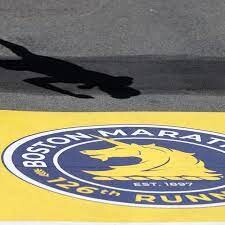
Why the backlash? The B.A.A. proves just how hard it is to stay fresh (and funded) while maintaining a sprawling, legacy-minded audience. Change, for some proud marathoners, is hard.
SMALL CHANGES, BIG REACTIONS

The most obvious change in Spike’s design is his orientation. Where the unicorn mascot used to look left, now he looks right. The B.A.A. calls this looking “forward,” pointing towards the miles ahead.
“We are looking forward, looking towards the future of the Boston Marathon, looking towards the future of running in general,” says Scott Stover, chief marketing officer at B.A.A. “Turning Spike around seemed natural as we were entering this next era.”
More controversial is Spike’s “athletic jawline,” which curves into the chin where it previously ran smooth. It creates the brief illusion of muscles—which the B.A.A. says represents the “athletic and gritty nature of Boston.” Coupled with a more “determined eye,” the unicorn may just be a fiercer version of his former self. Alex Cyr, a sports journalist covering marathons, finds this change laughable.
“The unicorn looks like it went from Pony[ta] to Rapidash,” Cyr says, referencing the Pokemon evolution. “You just see a unicorn that’s gotten a lot meaner.”
Stover contests the claim that Spike has gotten meaner, instead noting that they instituted these design changes to make Spike “serious and intentional.”
THE QUESTION OF CORPORATE BRANDING
Alongside the redesigned Spike, the new Boston Marathon logo also features a stamp of corporate marketing: the big “Bank of America” subtext, as well as the bank’s logo. While the fiercer appearance has some runners confused, the corporate branding has incited more anger.
Back in 1890, the Boston Athletic Association chose the mythical unicorn to be its symbol. Later named Spike, that unicorn saw several redesigns in the ensuing century, before eventually finding its way to prominent placement on the Boston Marathon medal. For years, Spike faced leftward, its horn jutting into the banner type of Boston Athletic Association (B.A.A.). Then in early June, Spike changed course.
The B.A.A. unveiled a new logo for the Boston Marathon, and people are not happy about it.
On its face, the redesign is small: Spike’s orientation is flipped, and he’s made a bit more menacing. The marathon logo, along with the new Spike, sports a fresh Bank of America sponsorship tag. Despite the small tweaks, the community response has been staggering: a recent Boston.com reader poll found 55% not liking the new logo, compared to just 14% loving it and 32% expressing indifference.
Why the backlash? The B.A.A. proves just how hard it is to stay fresh (and funded) while maintaining a sprawling, legacy-minded audience. Change, for some proud marathoners, is hard.
Alongside the redesigned Spike, the new Boston Marathon logo also features a stamp of corporate marketing: the big “Bank of America” subtext, as well as the bank’s logo. While the fiercer appearance has some runners confused, the corporate branding has incited more anger.
Just look at the Instagram comments under the announcement: “The big difference is adding Bank of America to the logo which clearly no one likes,” comments one marathoner. “Makes me less likely to bank with BoA,” comments another. Clearly, there is some ire for this emblazoned corporate sponsorship.
“Bank of America is invested in helping us continue to make the Boston Marathon and all of our events greater and greater every year,” Stover says. “So we’re proud of that partnership, and it is also very standard in sports marketing for brands to be included.”
This isn’t the first time the B.A.A. found themselves in hot water for the Bank of America branding. Back in April, the Boston Marathon debuted a new medal, featuring the bank’s logo on each and every medallion. The criticism was immediate.
Cyr was in Boston for the new medal’s premiere, and notes that there were “a few complaints.” He chalks this up to the race’s legacy: “[When] a race that’s been around for a long time, comes out with a rebrand, it is met with a bit of resistance by the traditionalists.”
The challenge that comes with rebranding an institution as beloved as the Boston Marathon is. balancing pride with progress. Marathoners complain of Spike’s fiercer look not because of any apparent flaw, but because they’ll have outdated tattoos. They complain of the Bank of America-themed logo not because they want to run the B.A.A. dry, but because they want to keep it pure. Eventually, the redesigned logo will become a piece of the Boston Marathon’s legacy; until then, the B.A.A. might have to endure some angry comments.
(07/01/2024) ⚡AMPby henry Chandonnet
Boston Marathon
Among the nation’s oldest athletic clubs, the B.A.A. was established in 1887, and, in 1896, more than half of the U.S. Olympic Team at the first modern games was composed of B.A.A. club members. The Olympic Games provided the inspiration for the first Boston Marathon, which culminated the B.A.A. Games on April 19, 1897. John J. McDermott emerged from a...
more...

